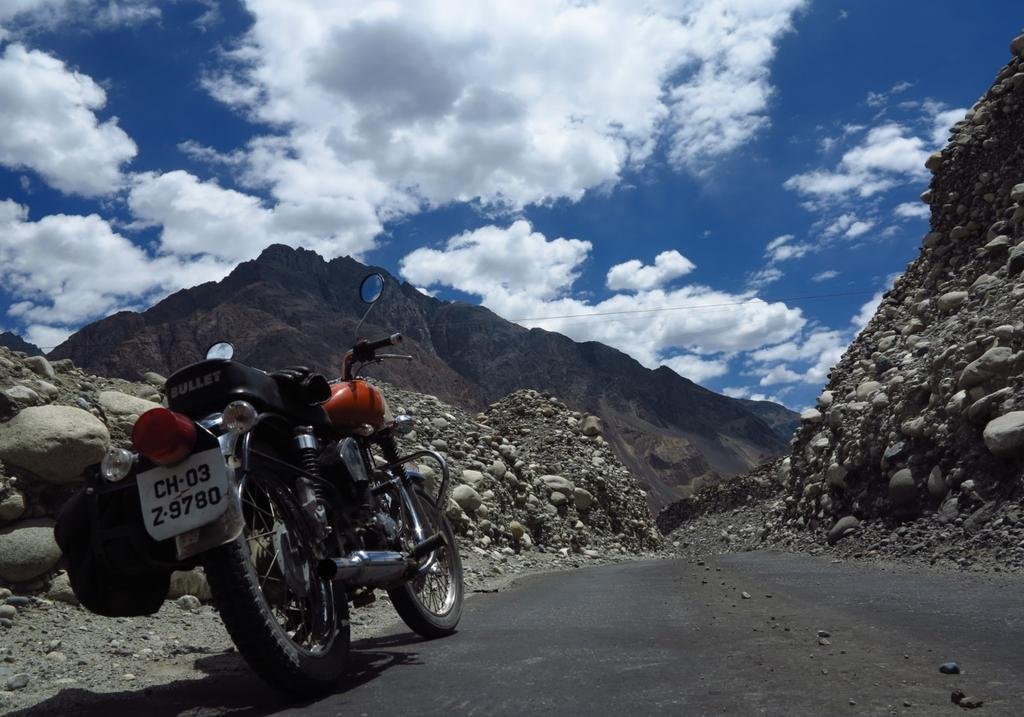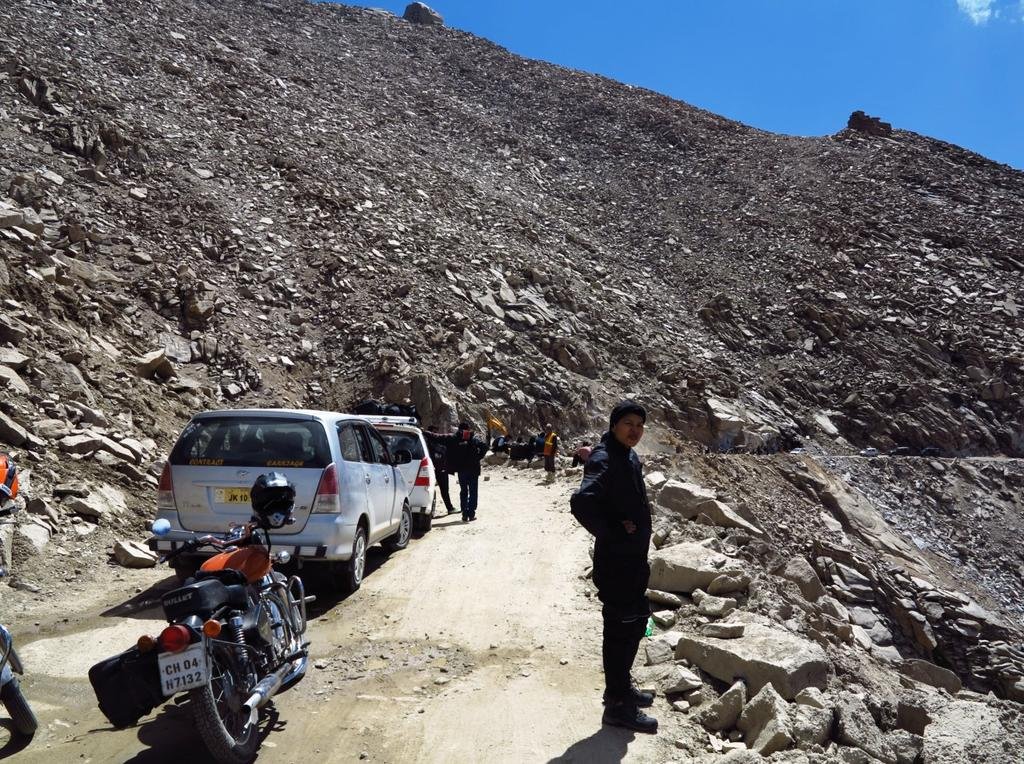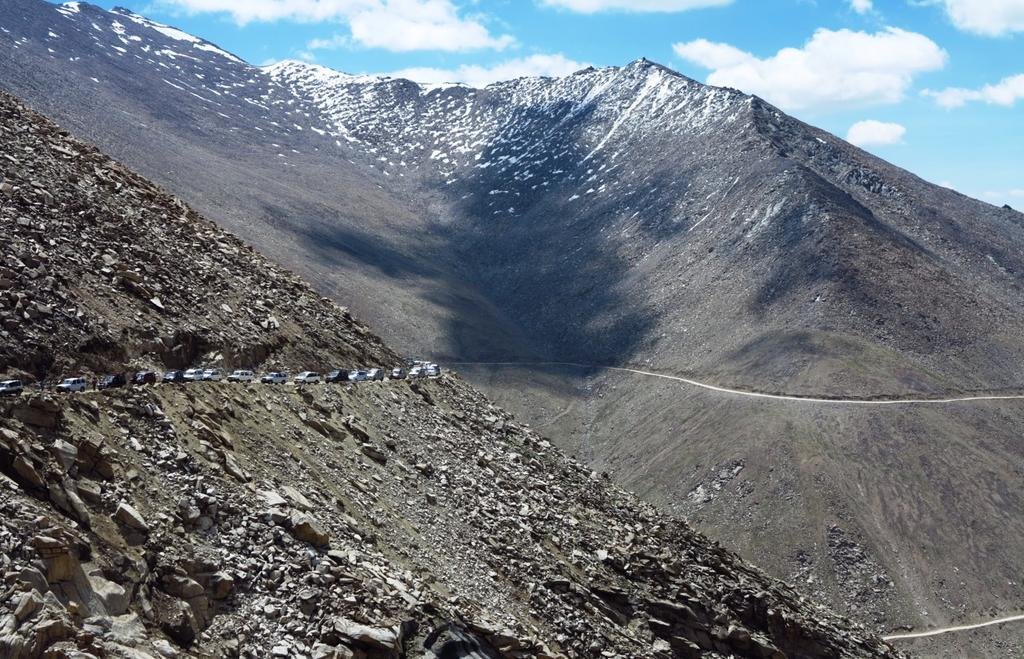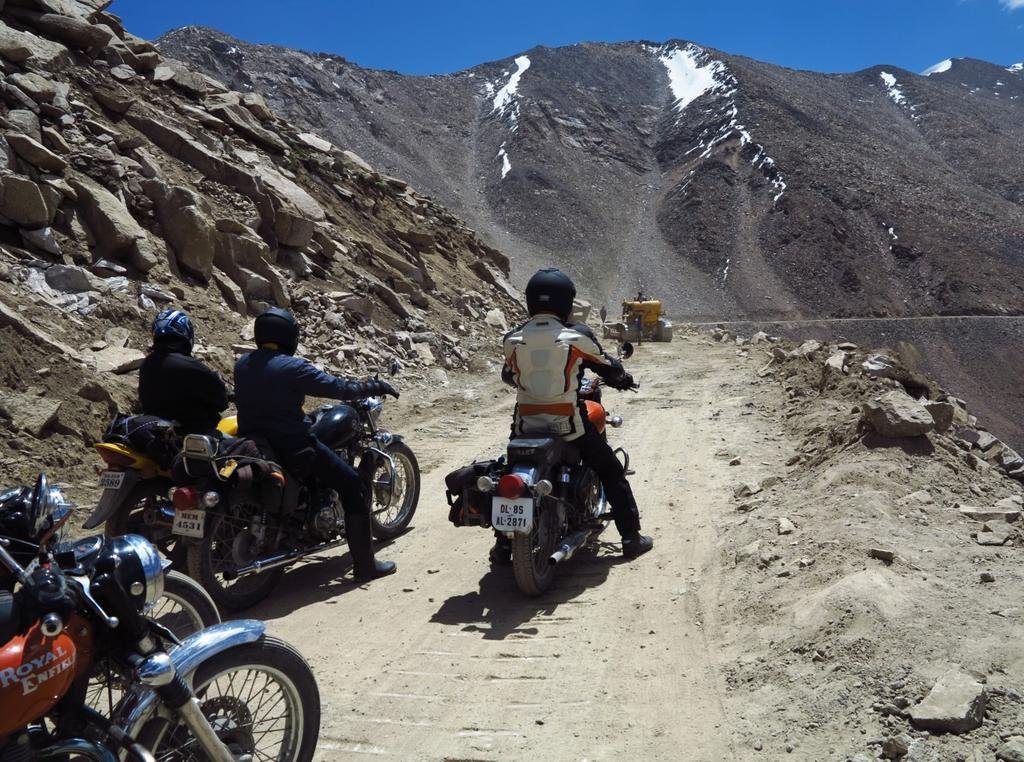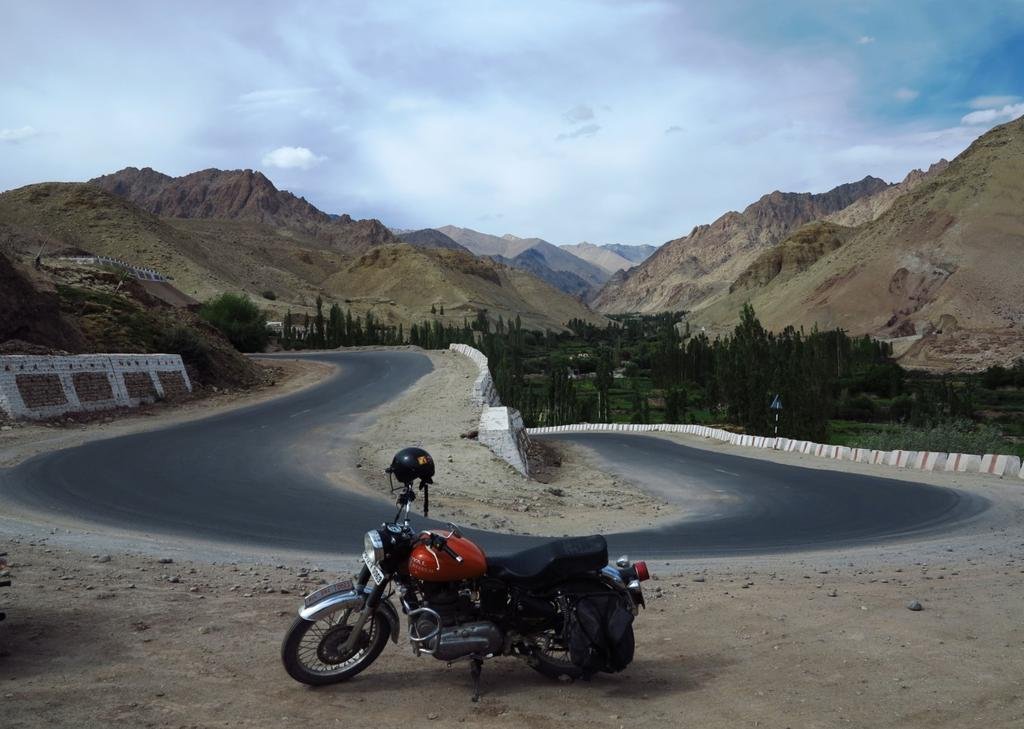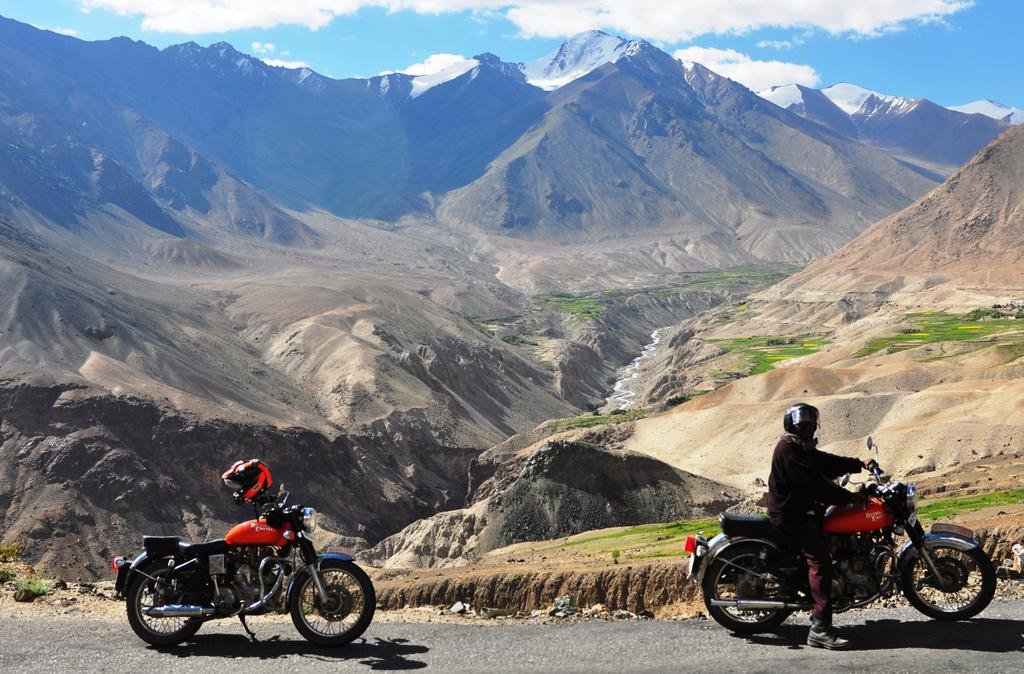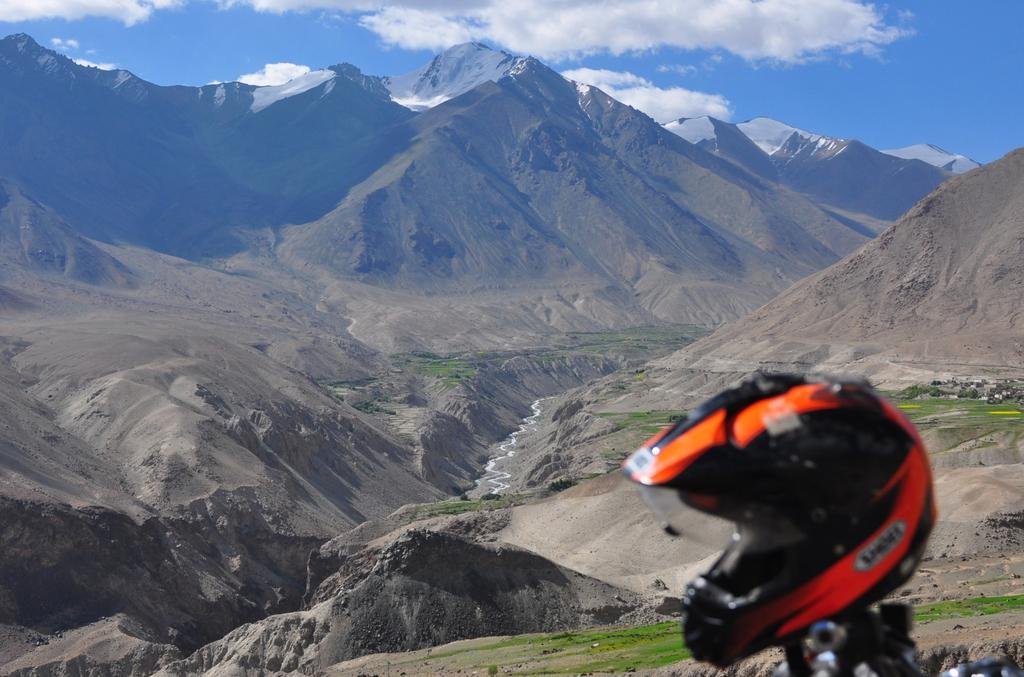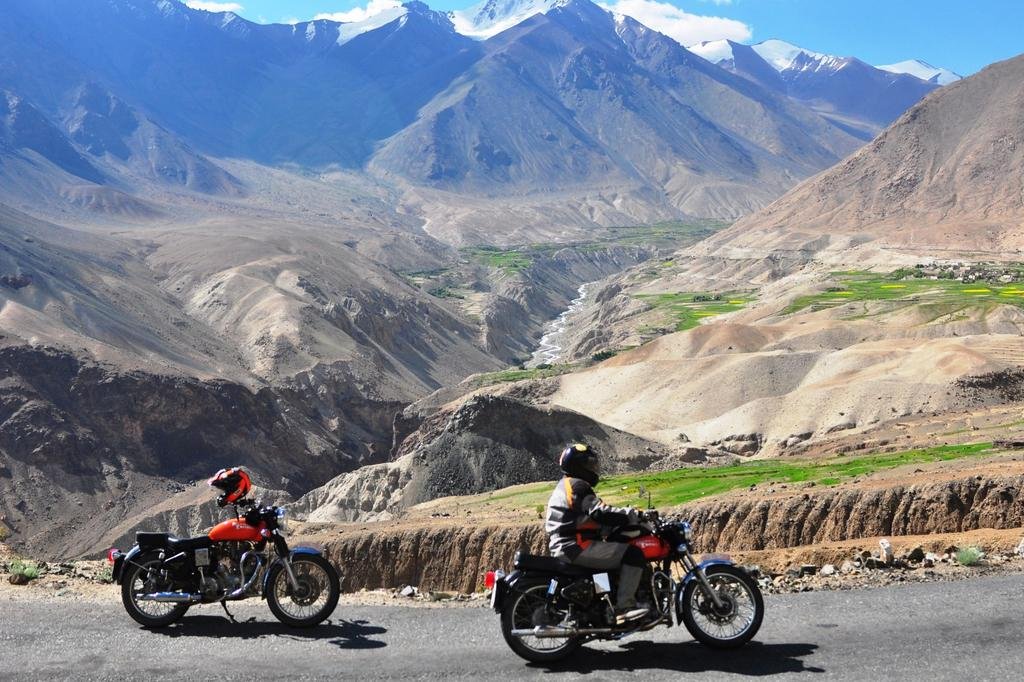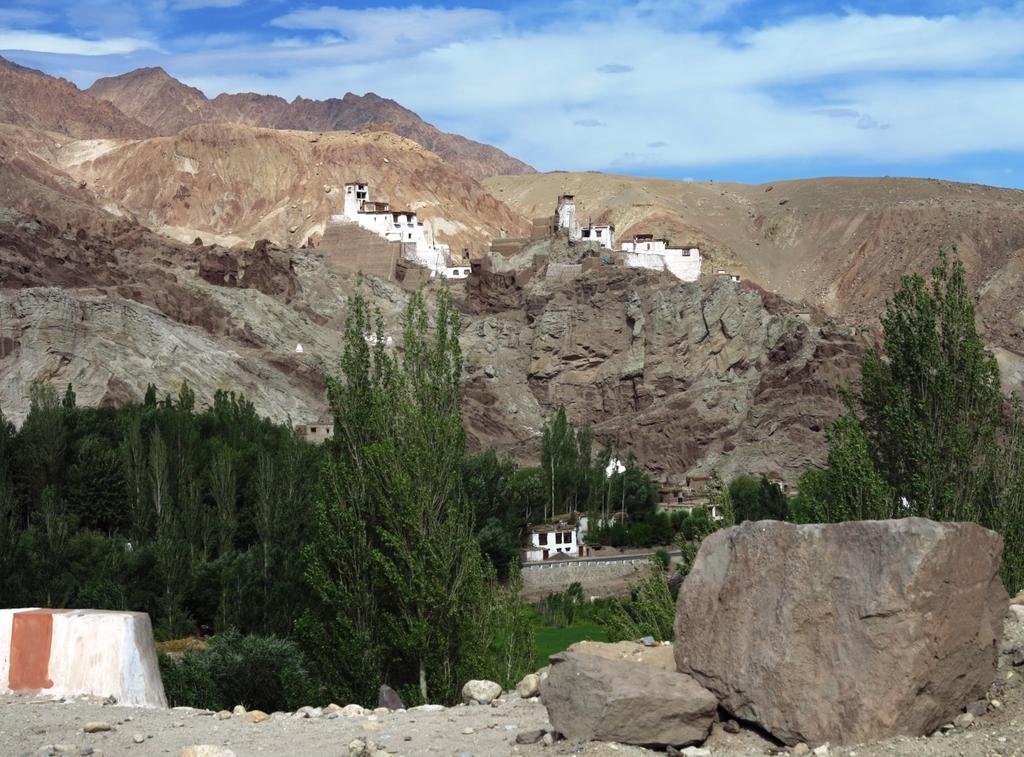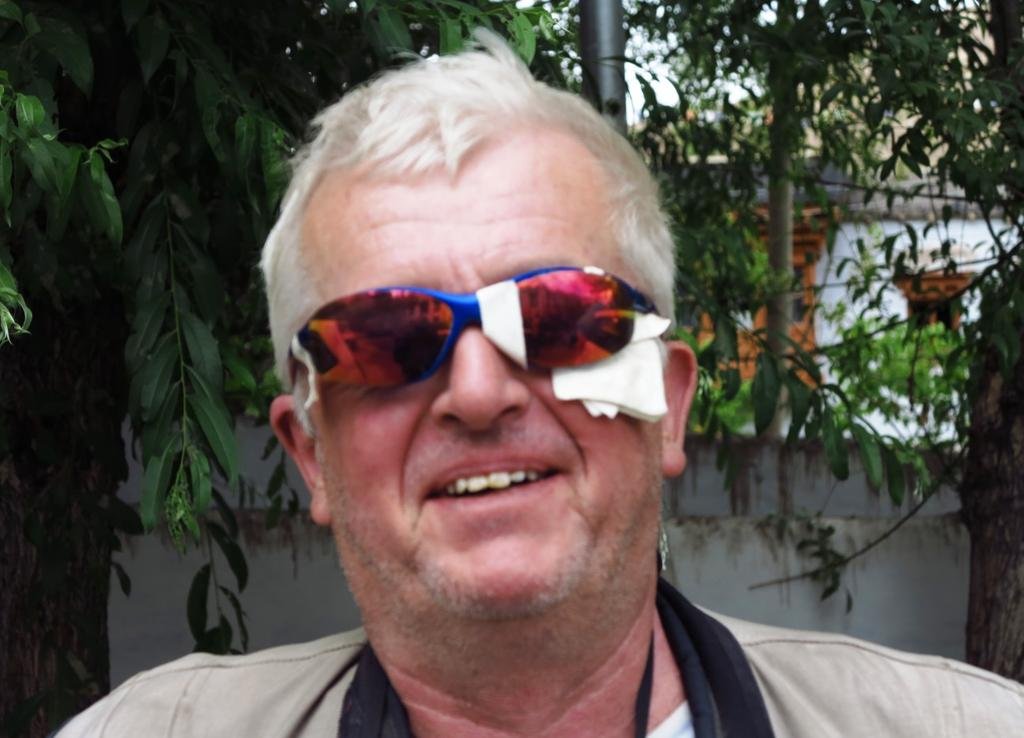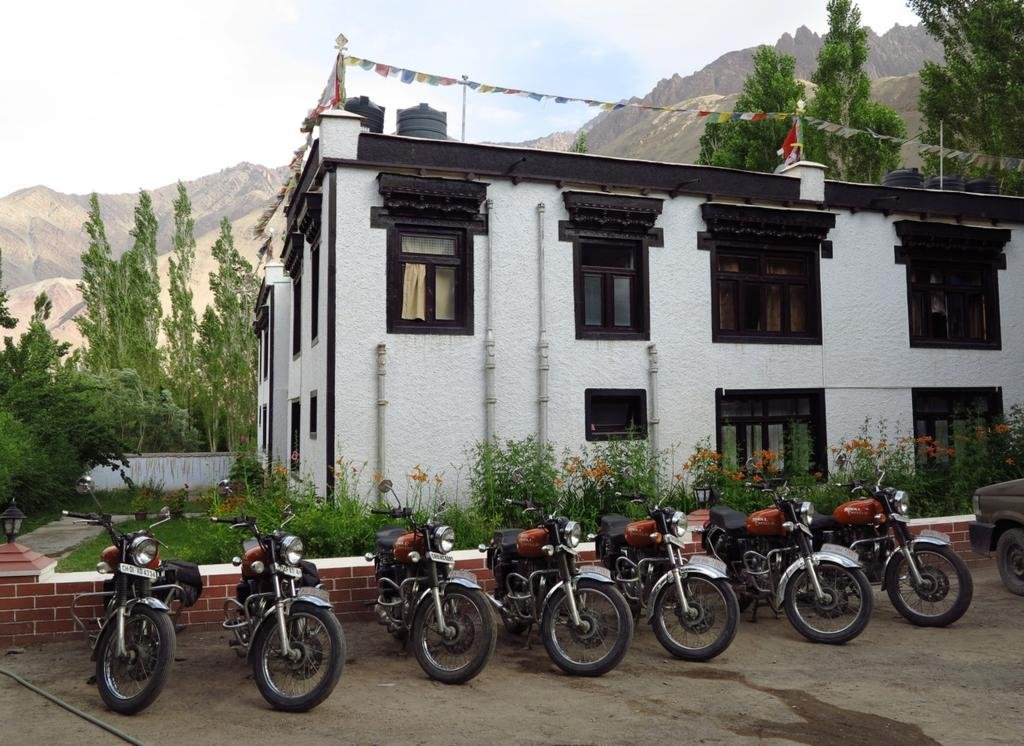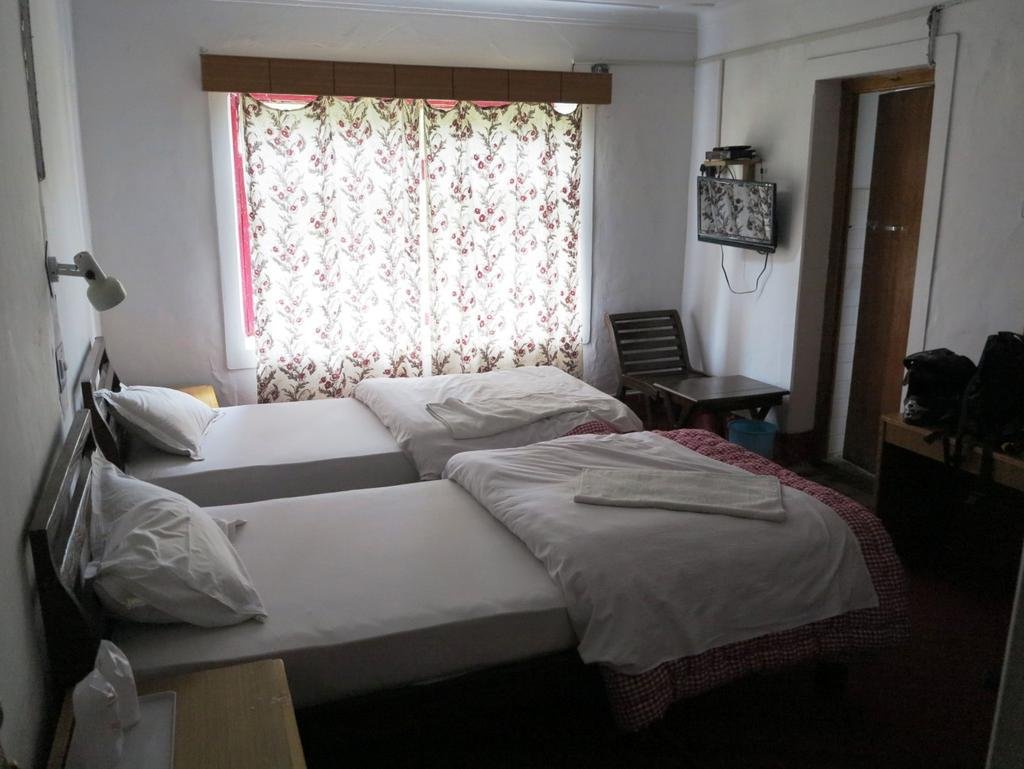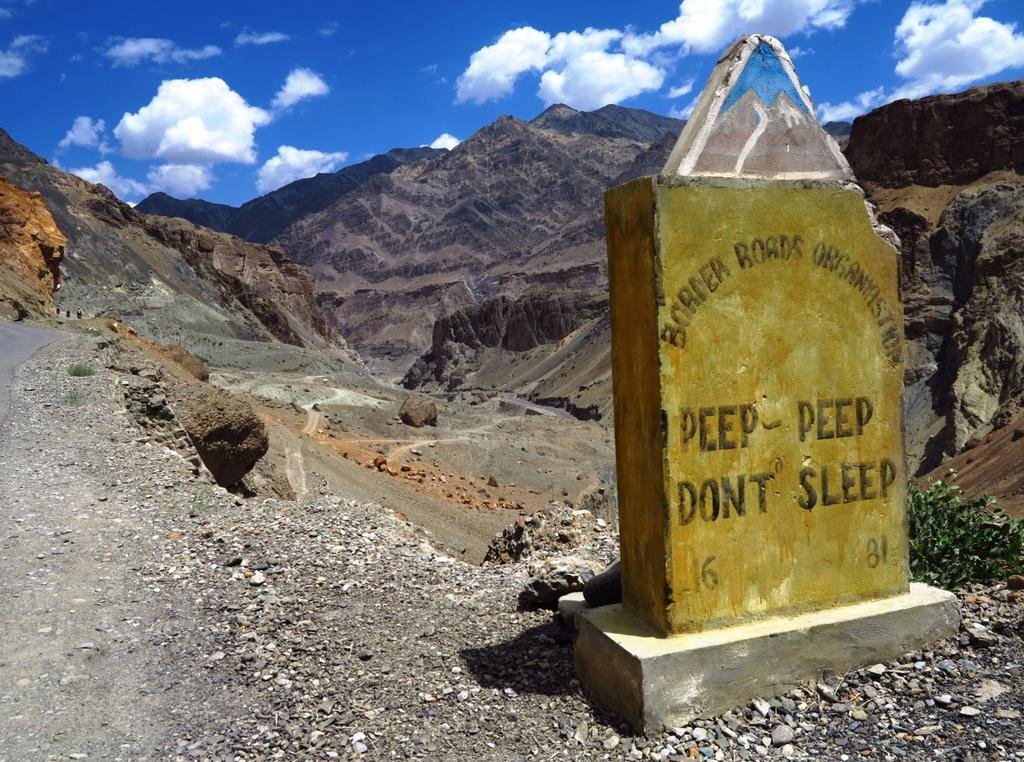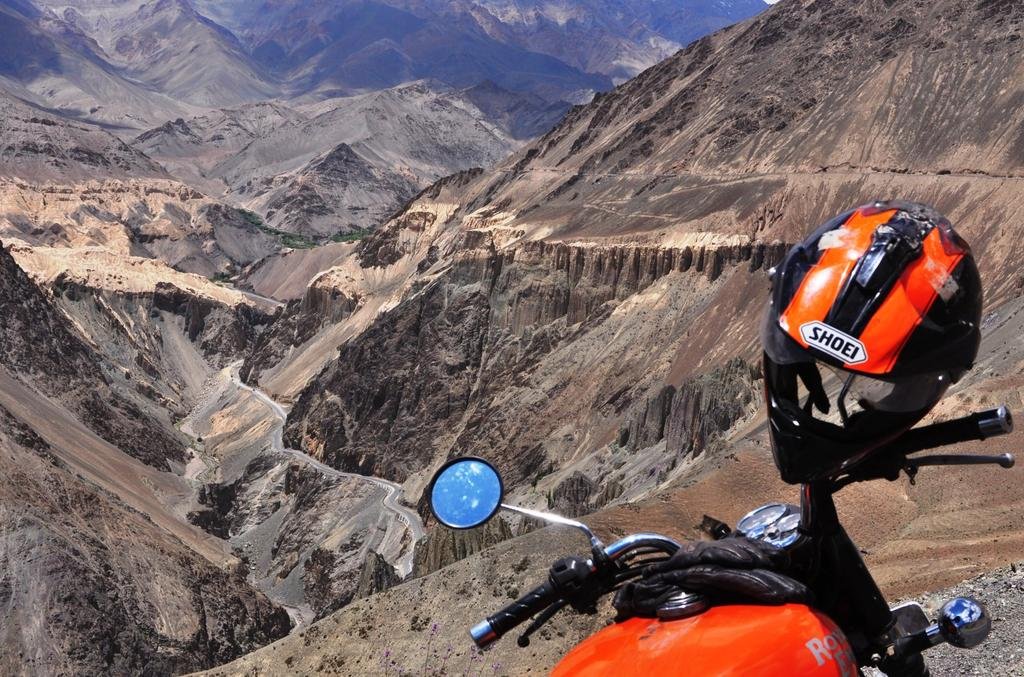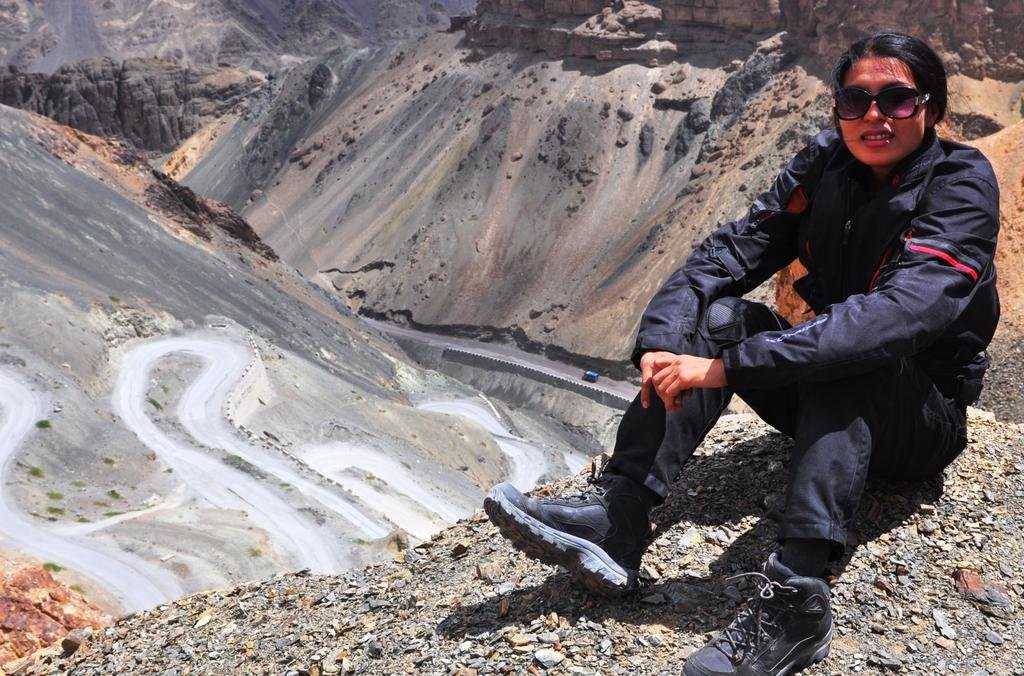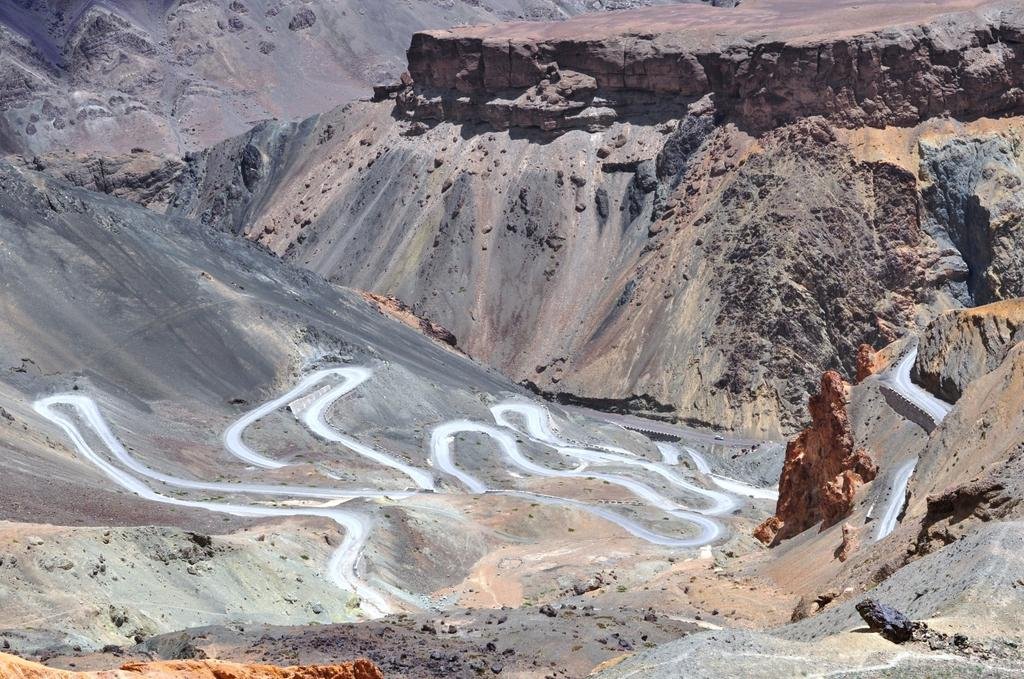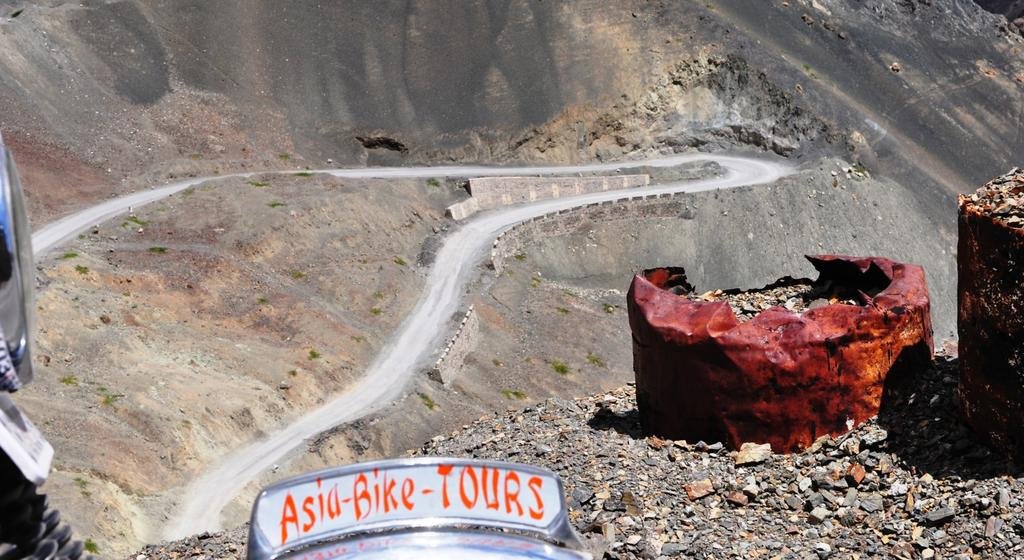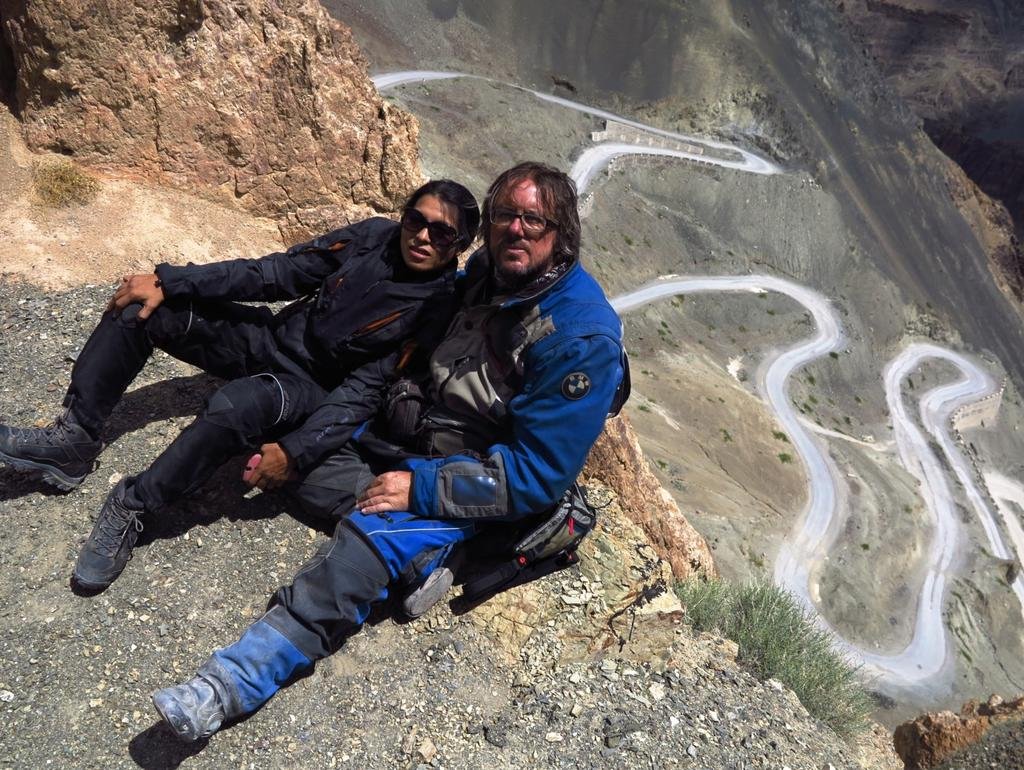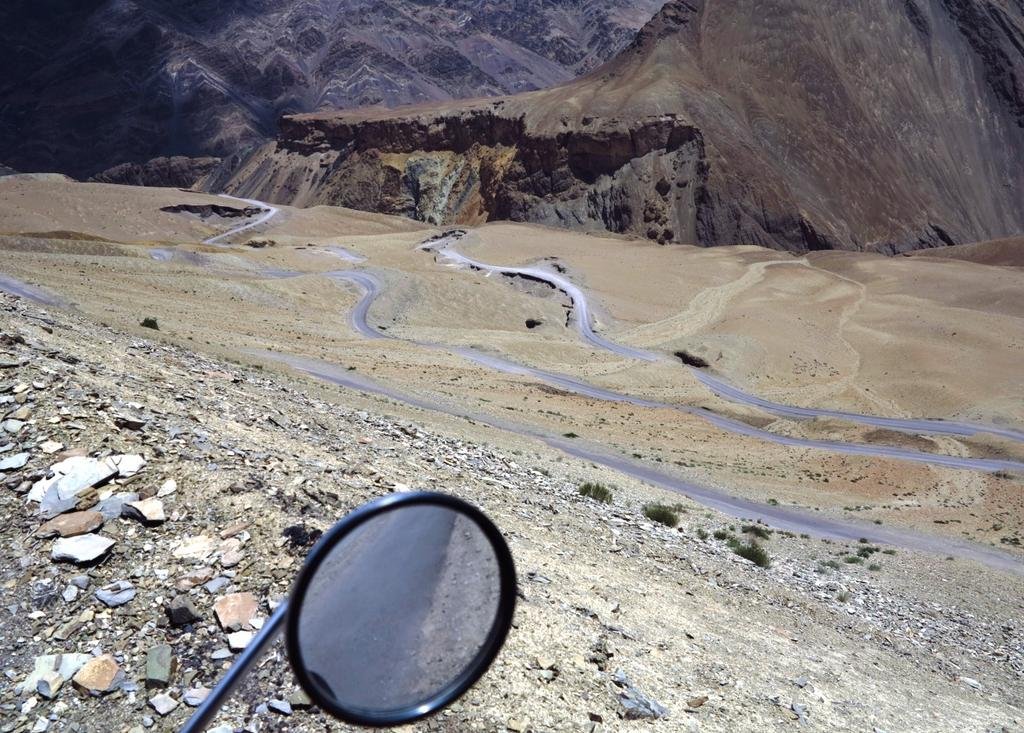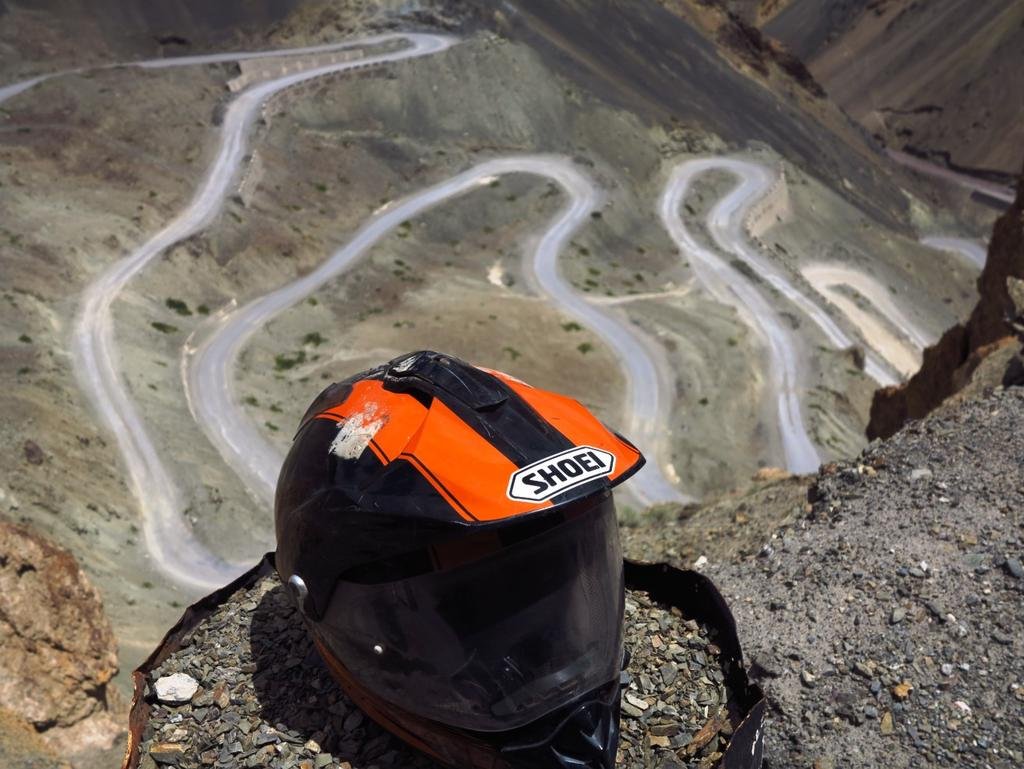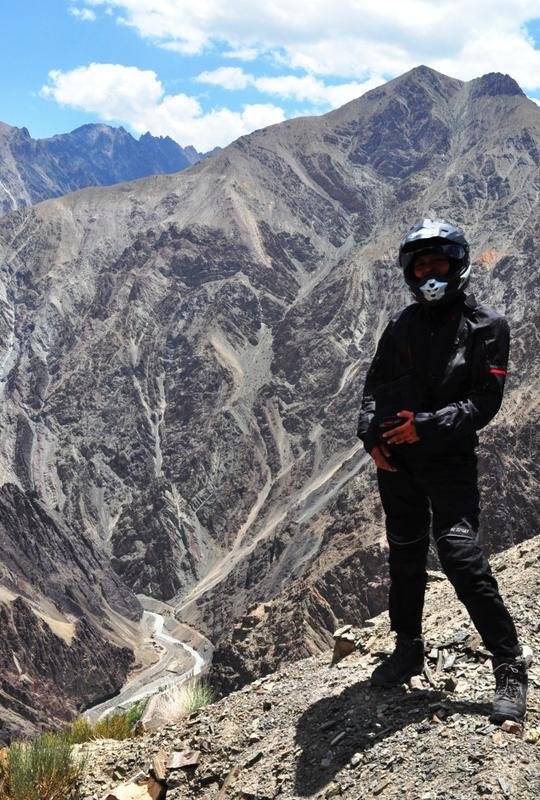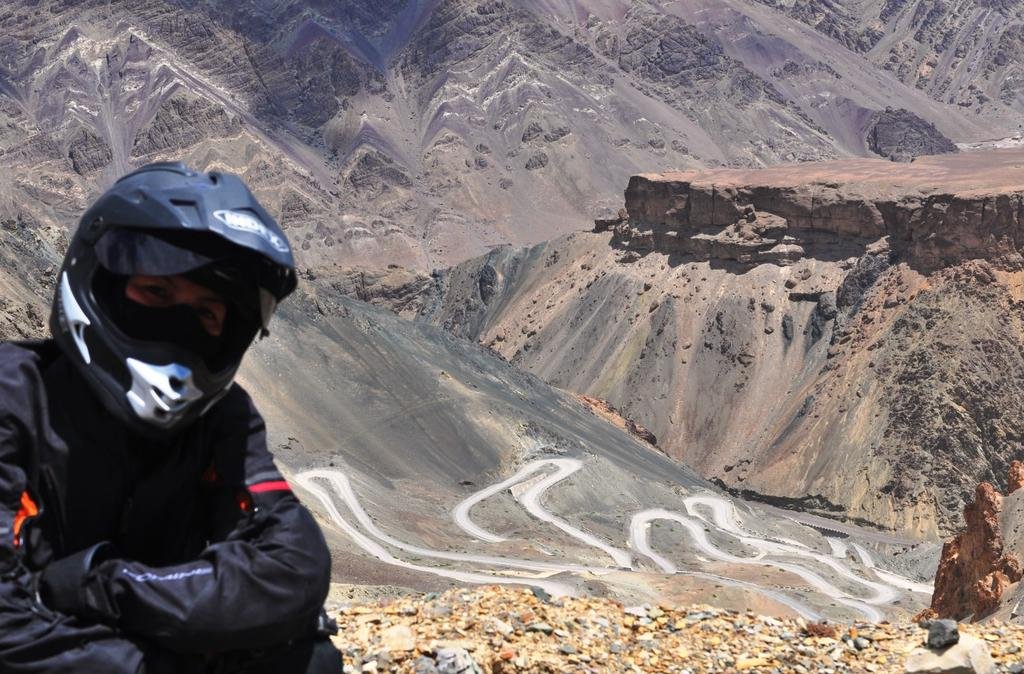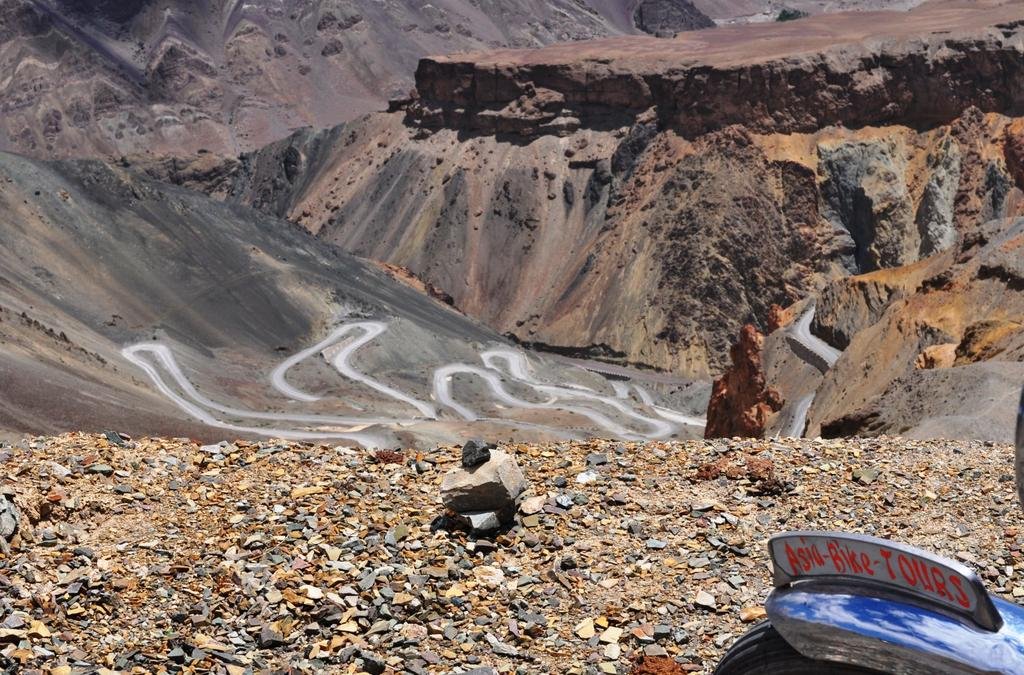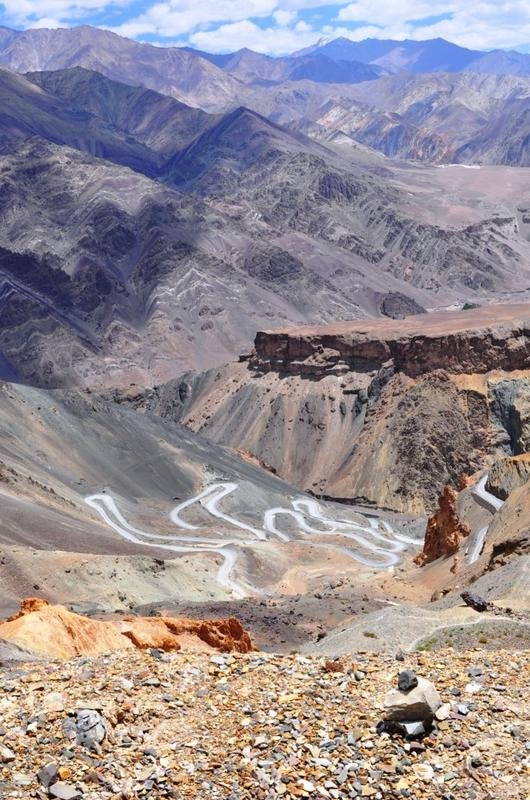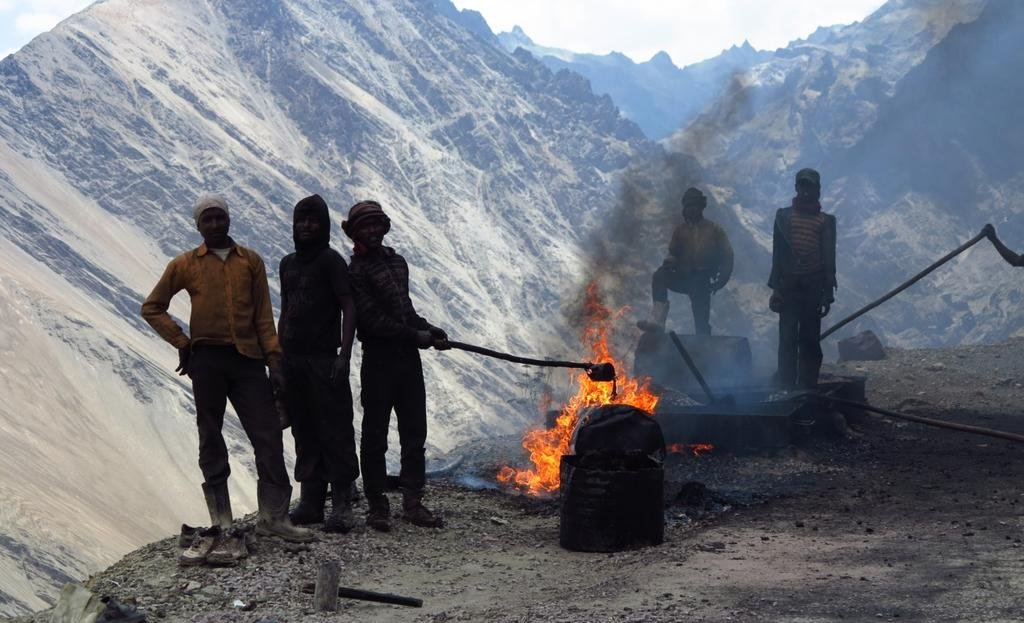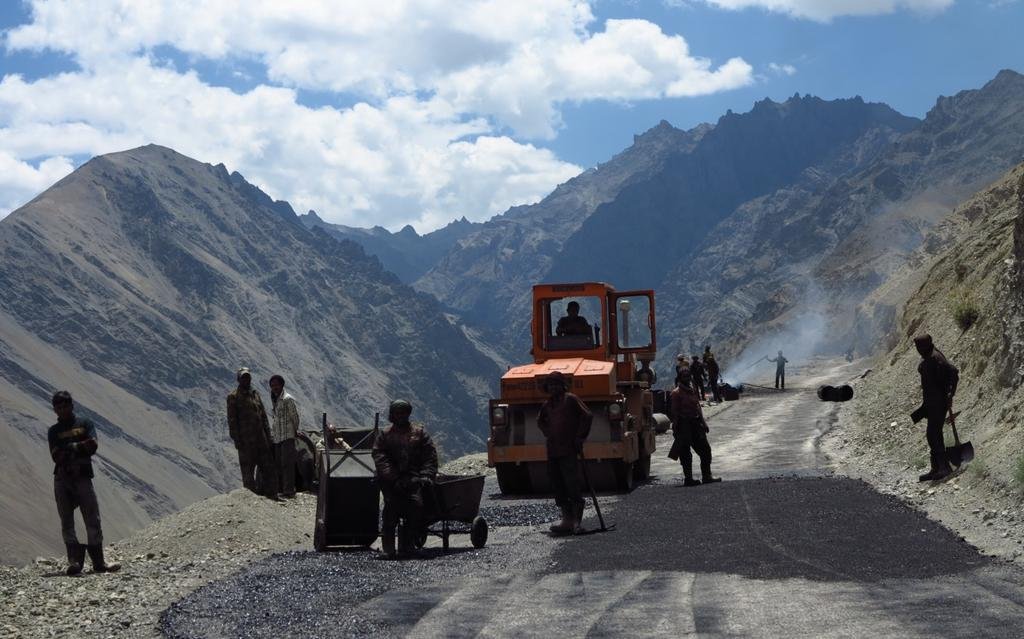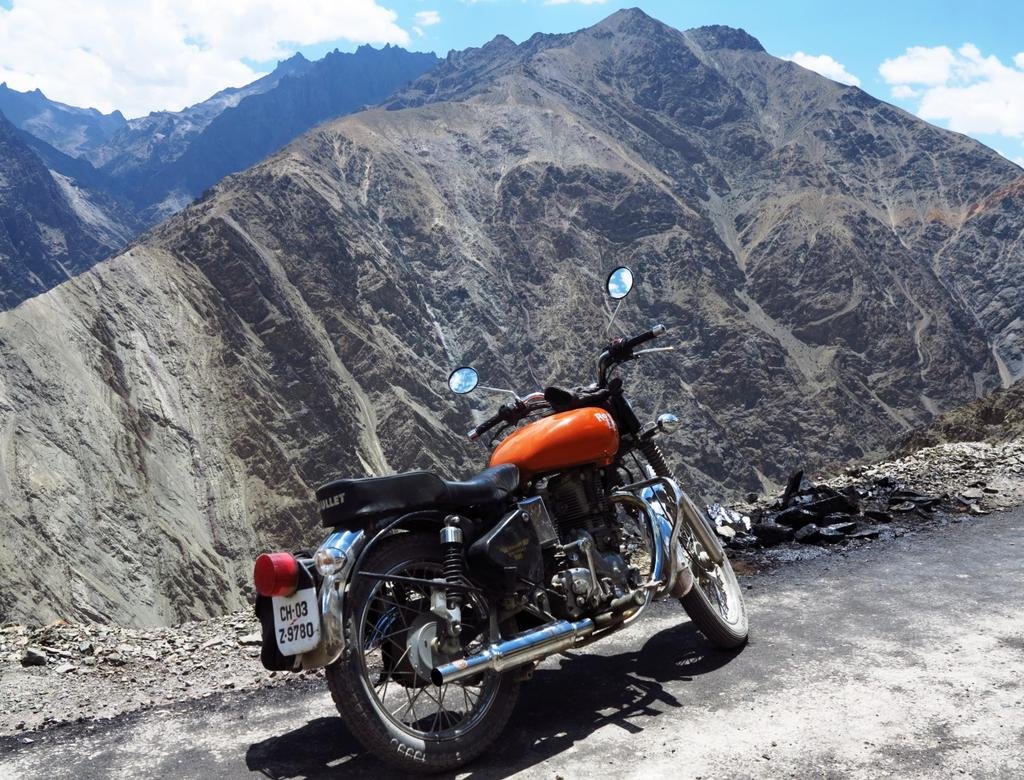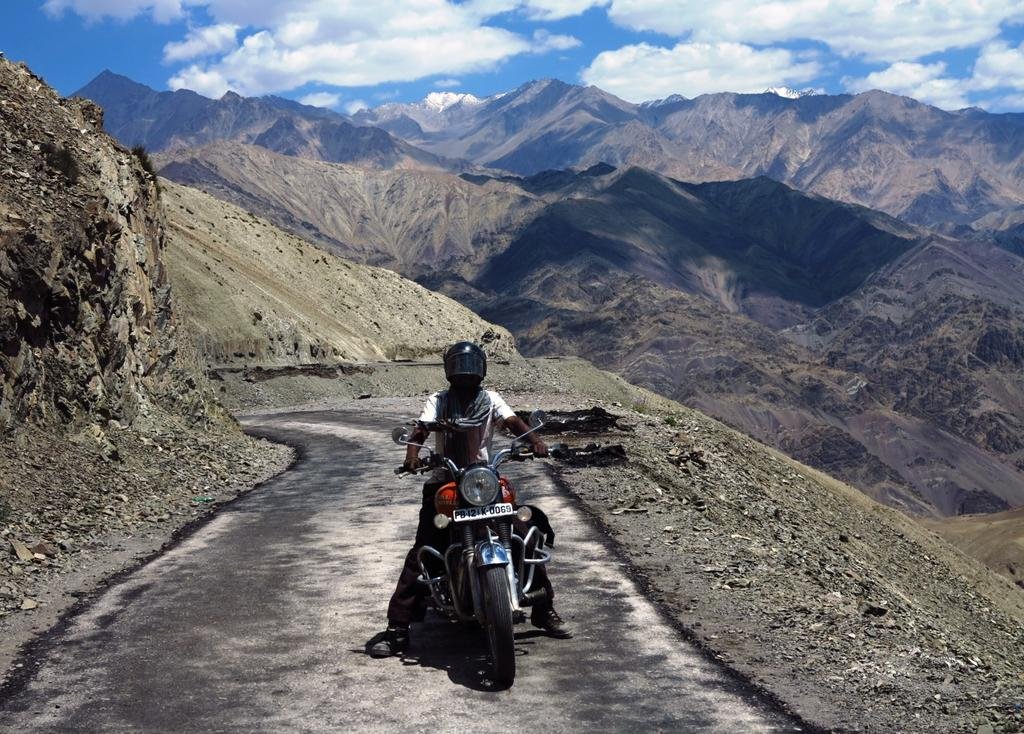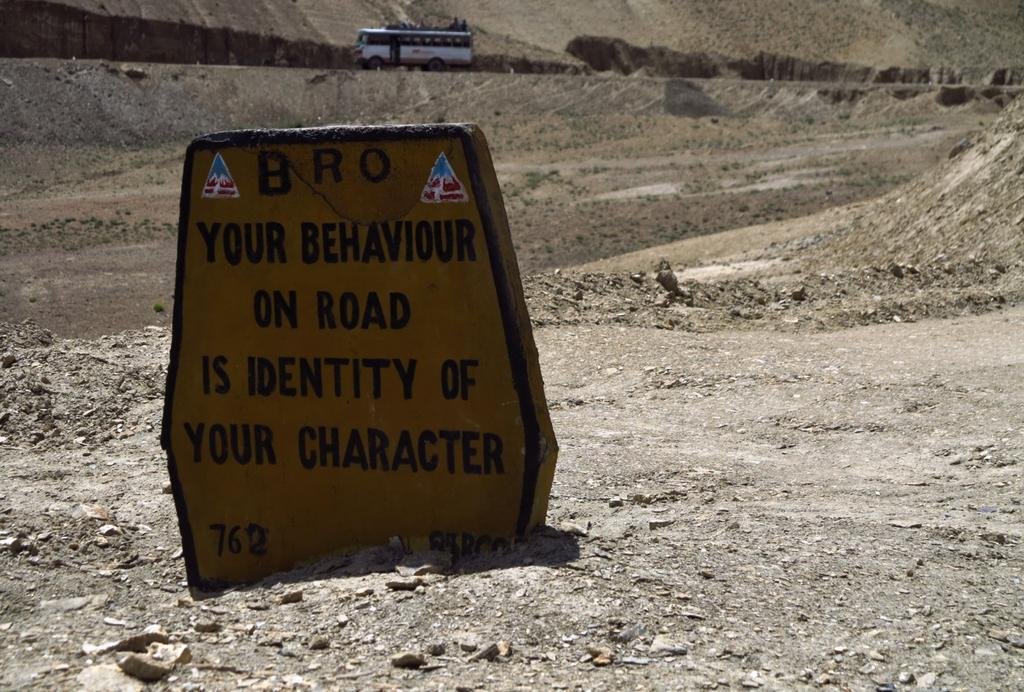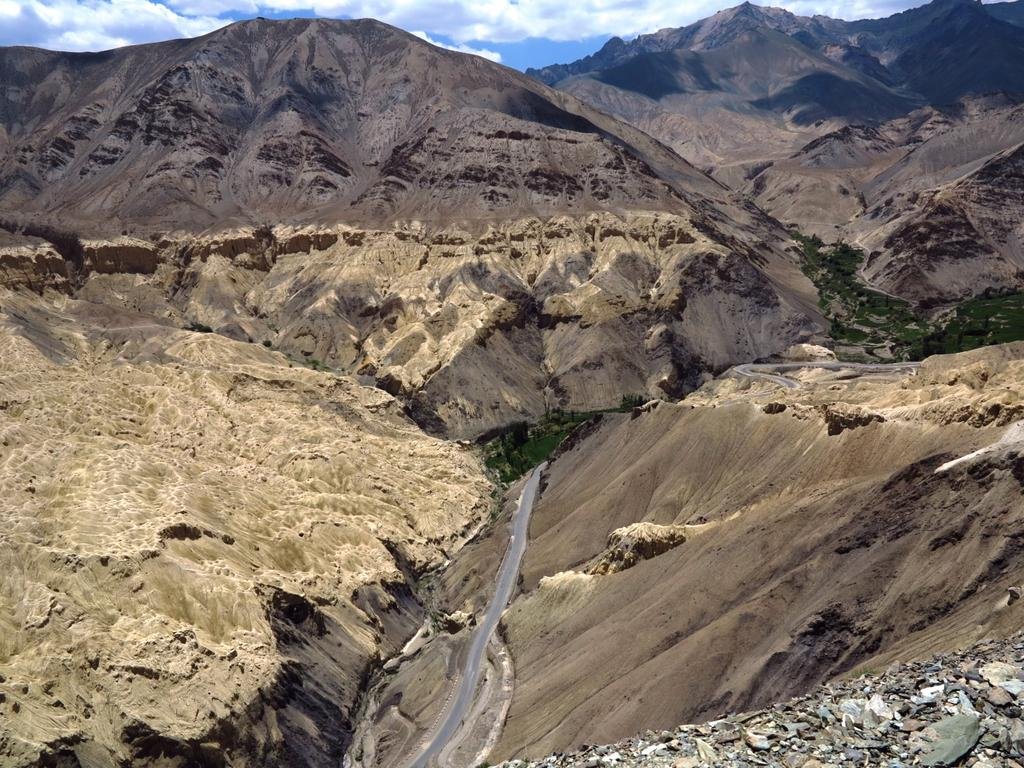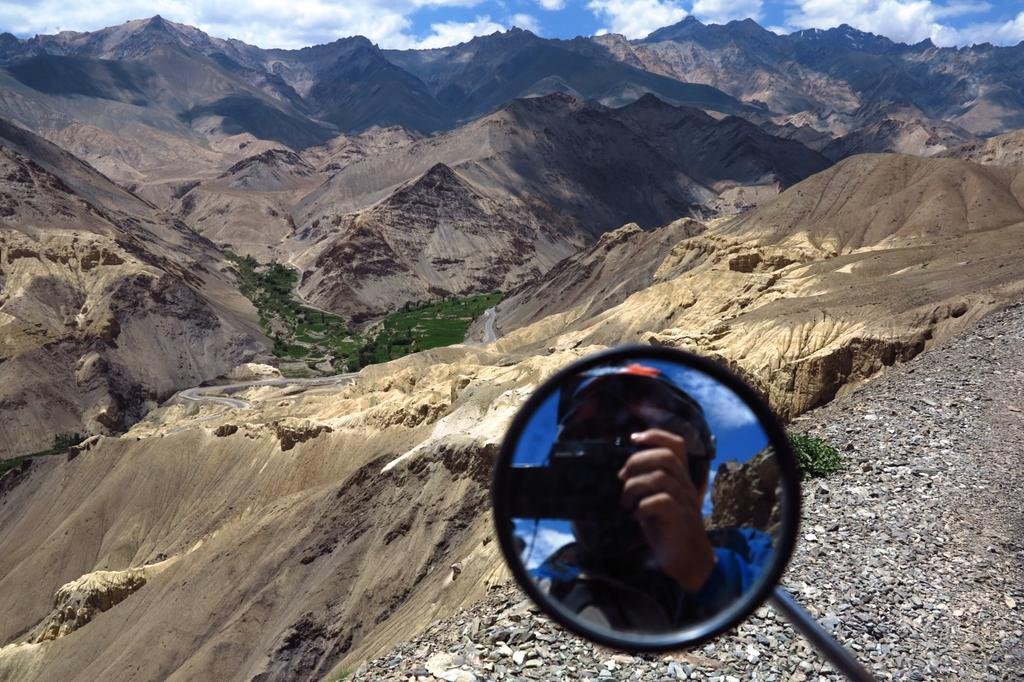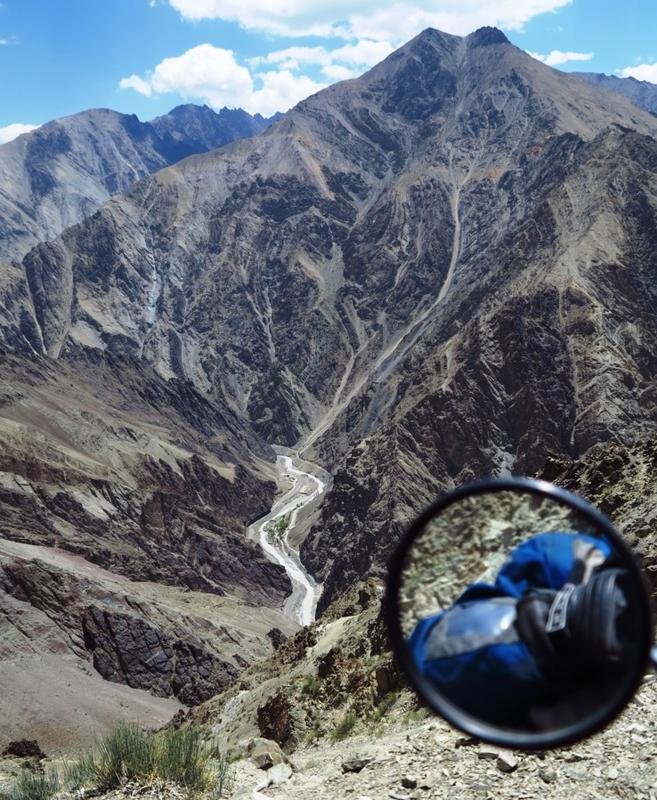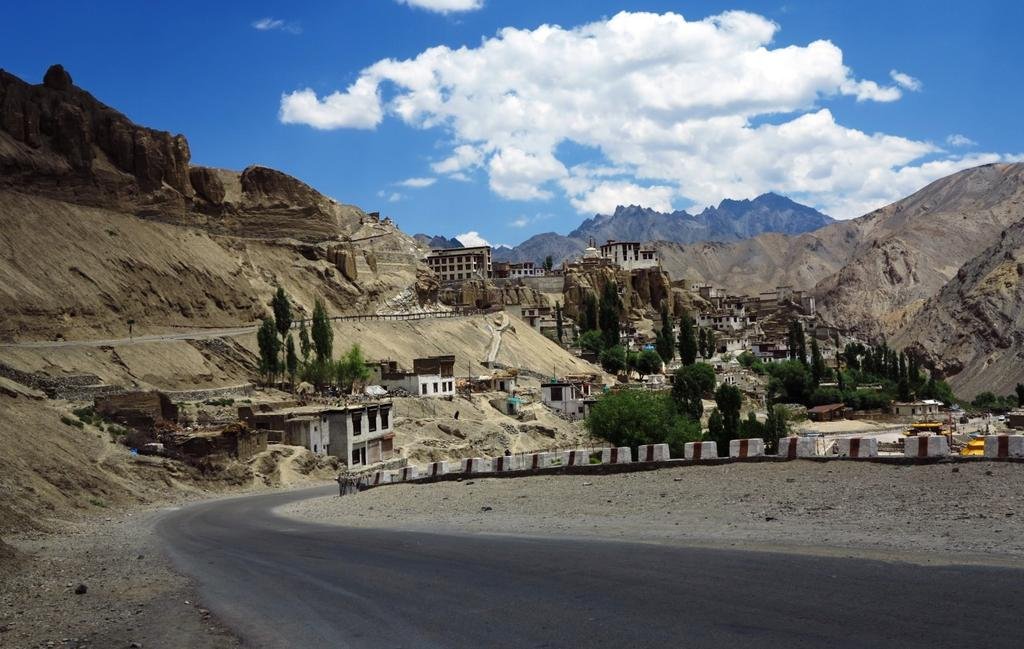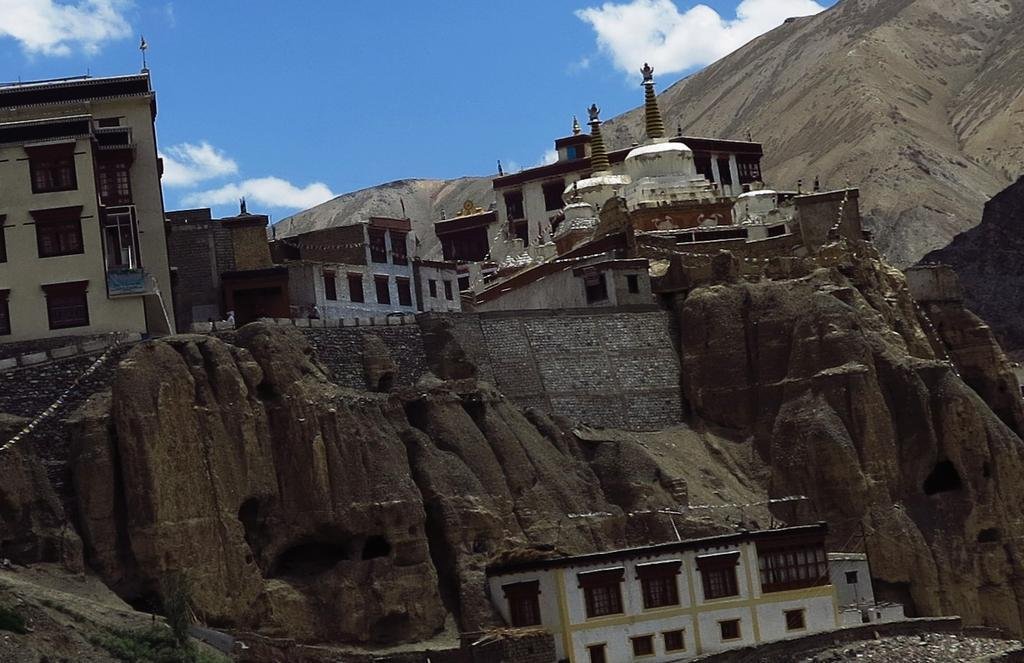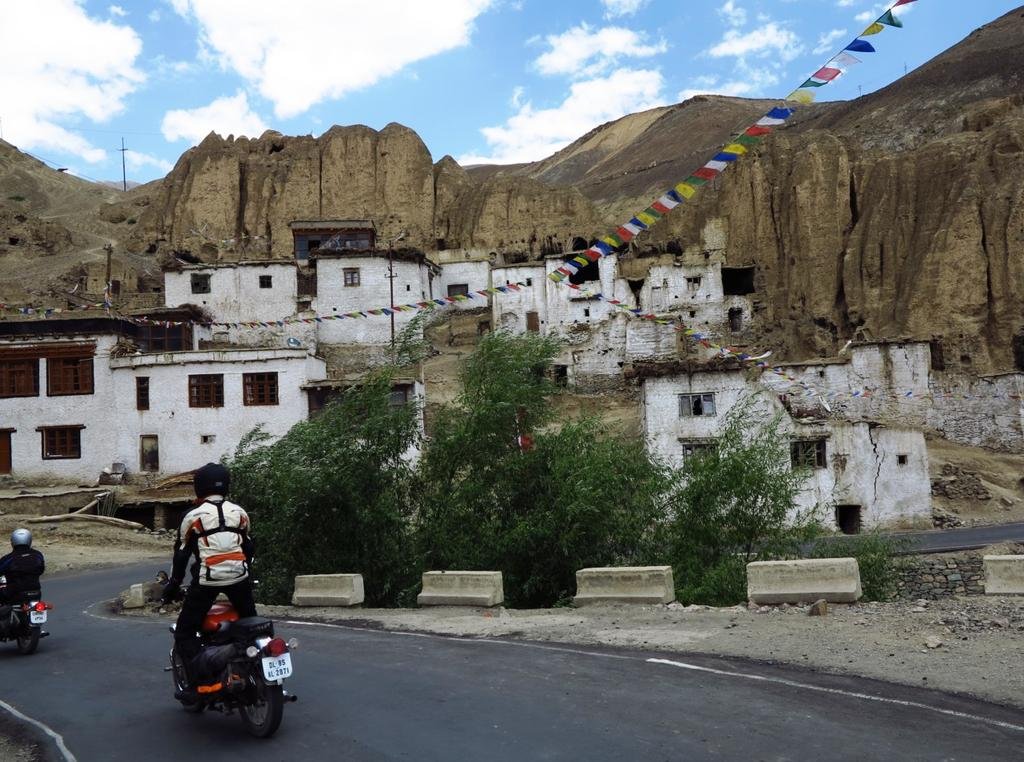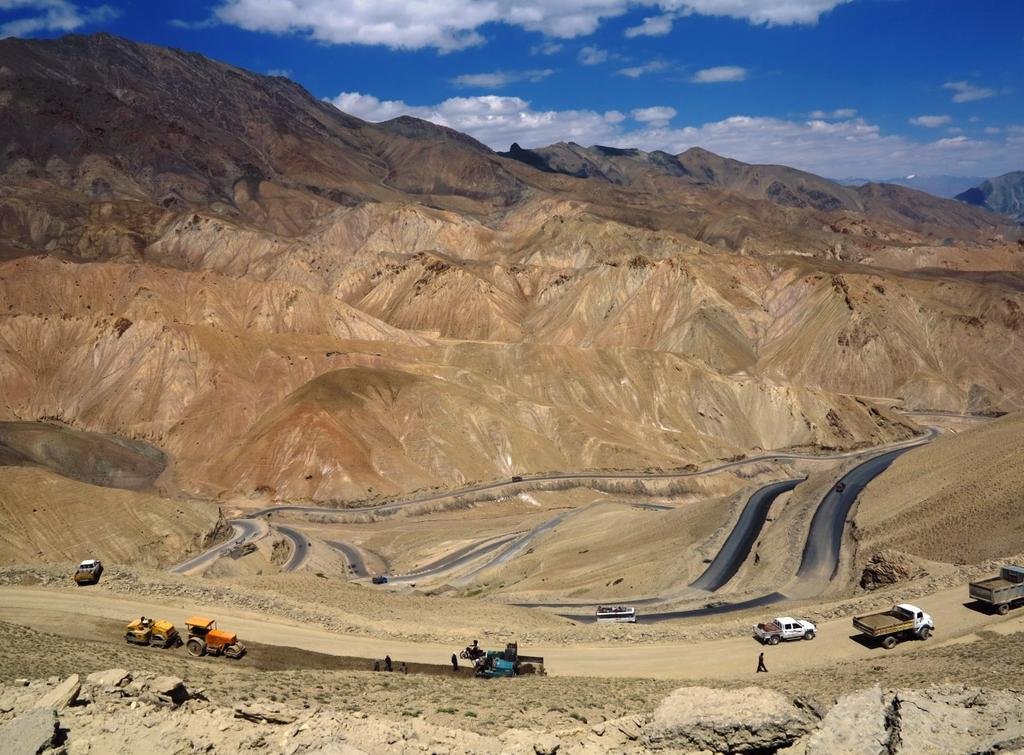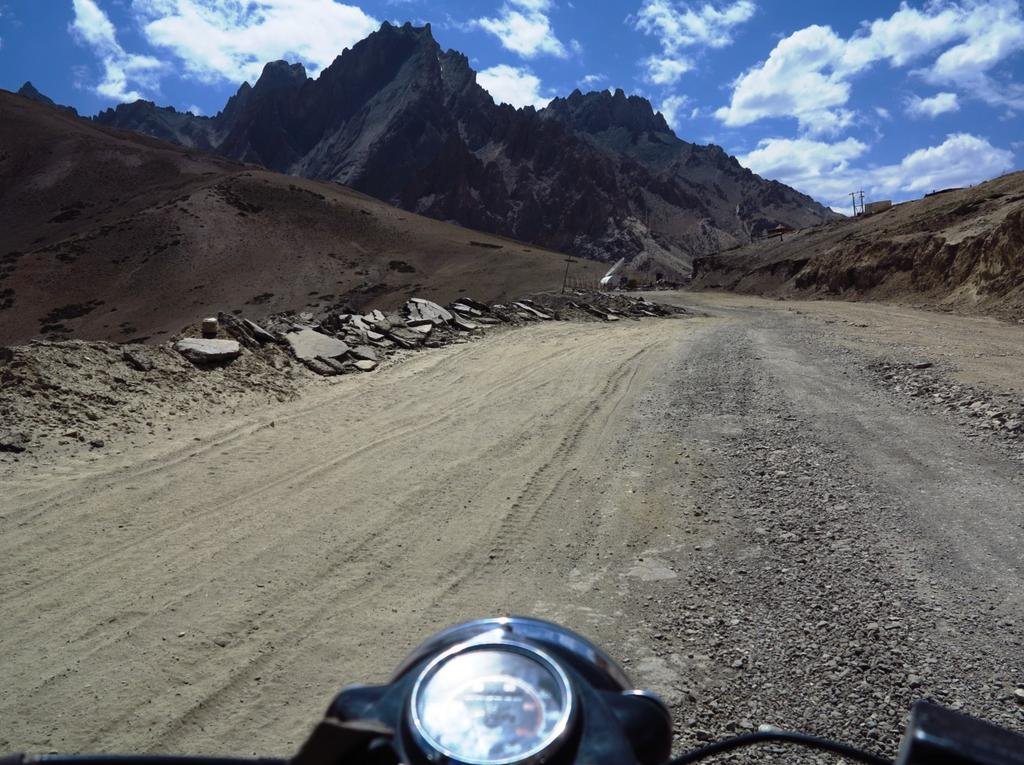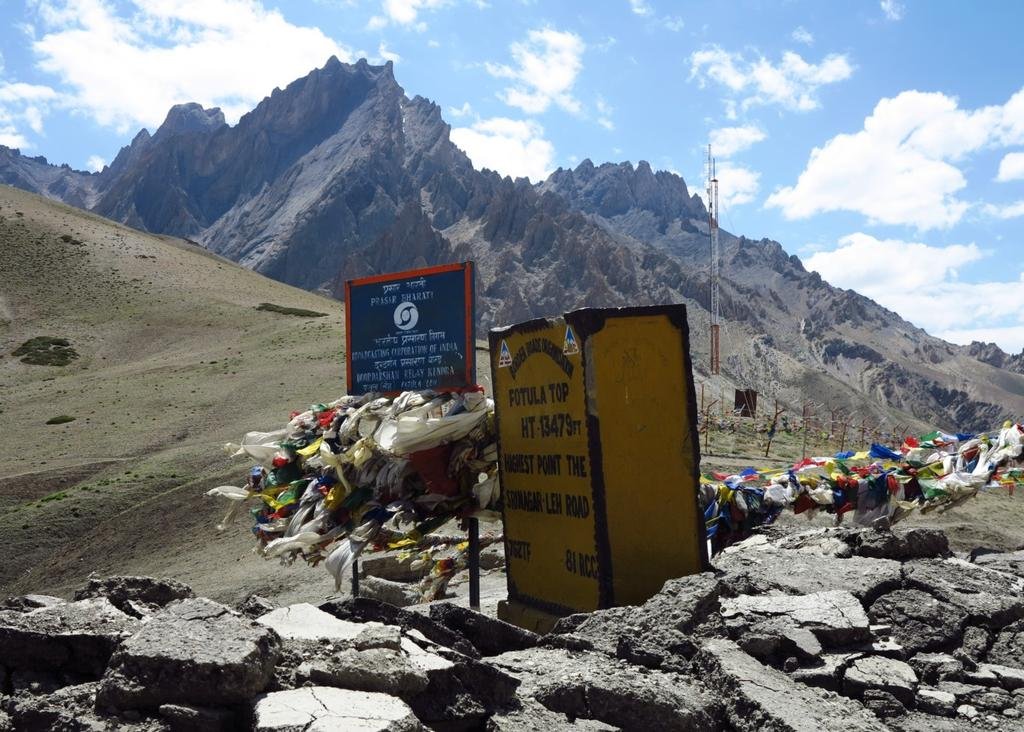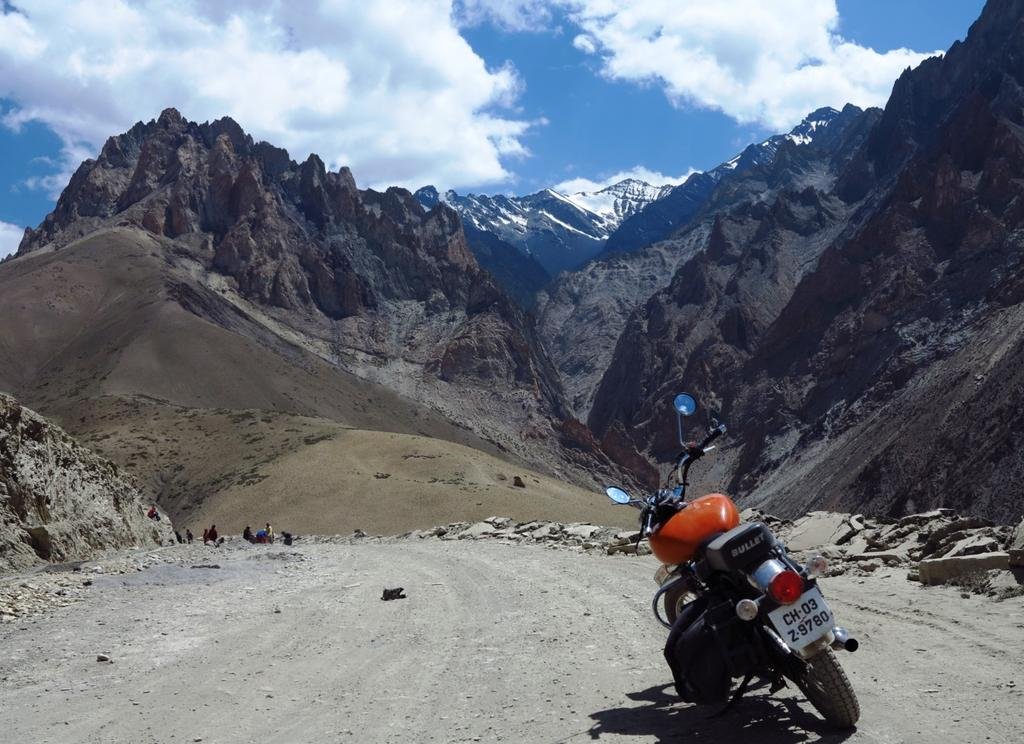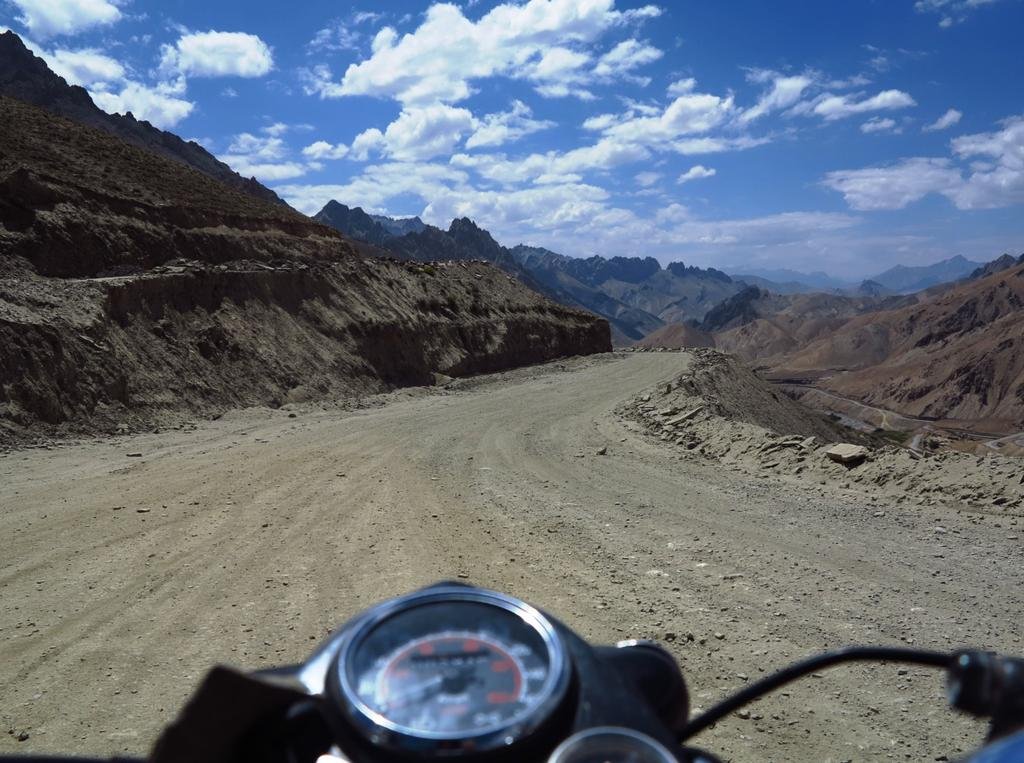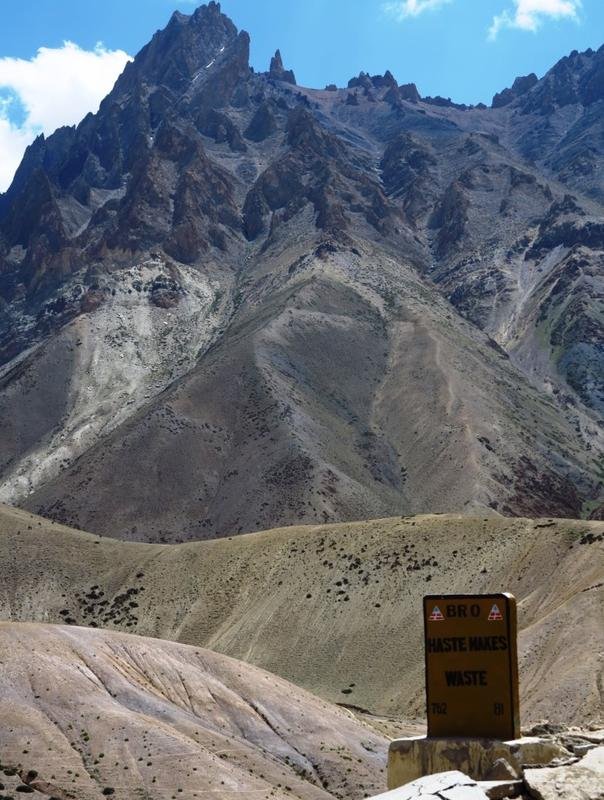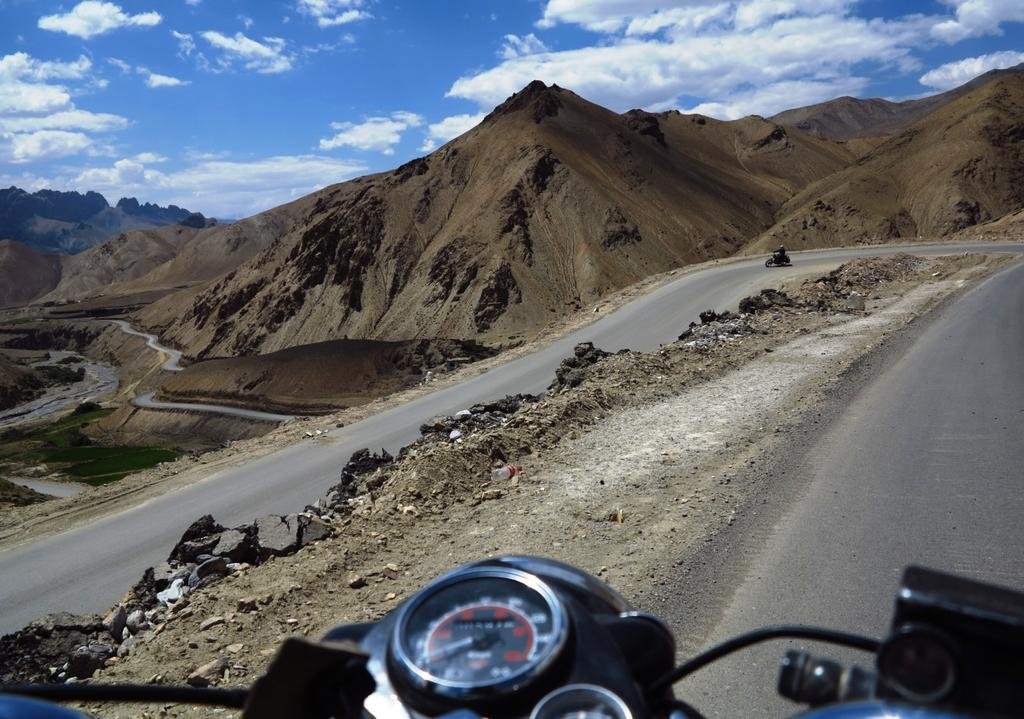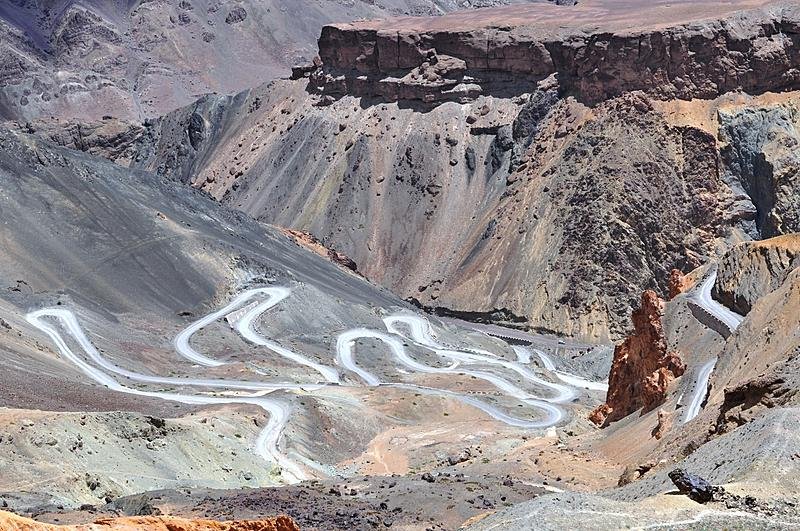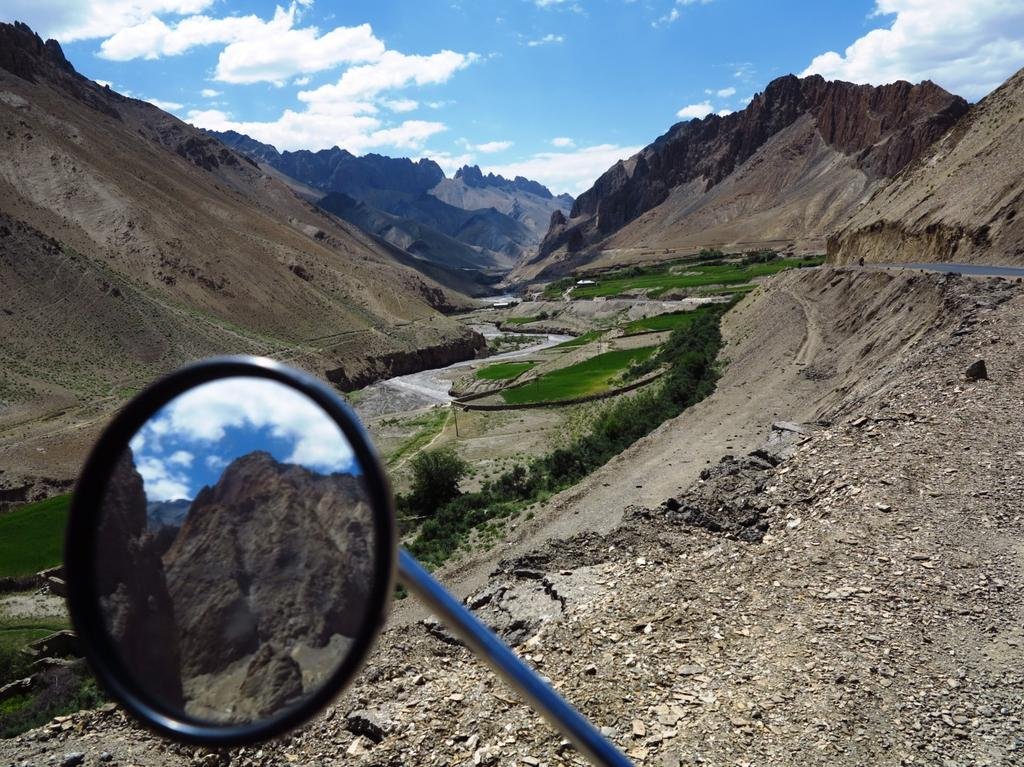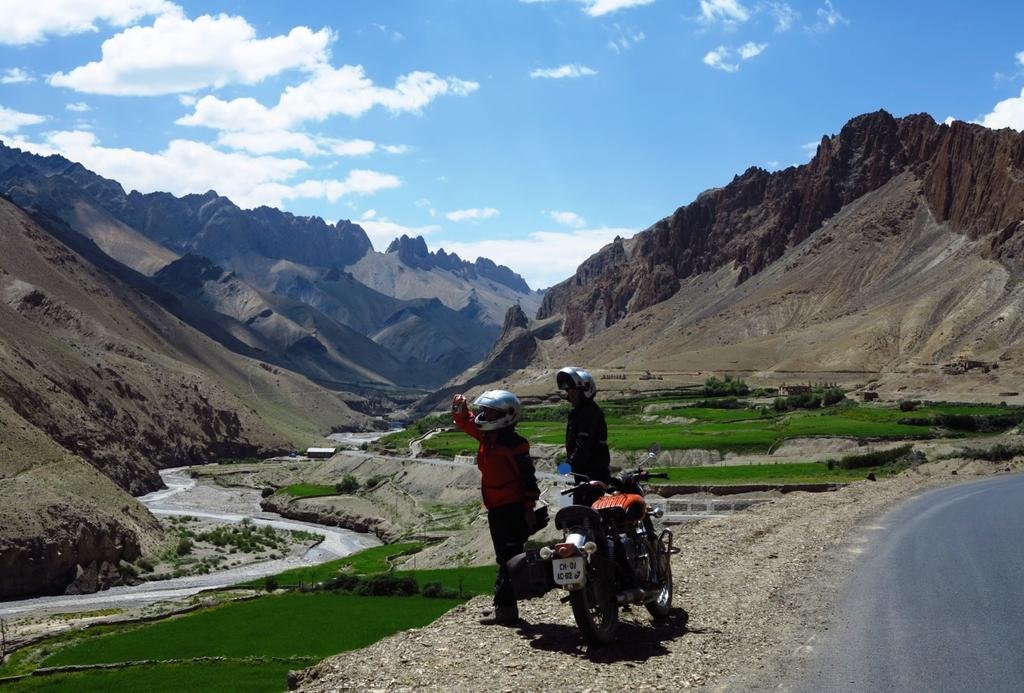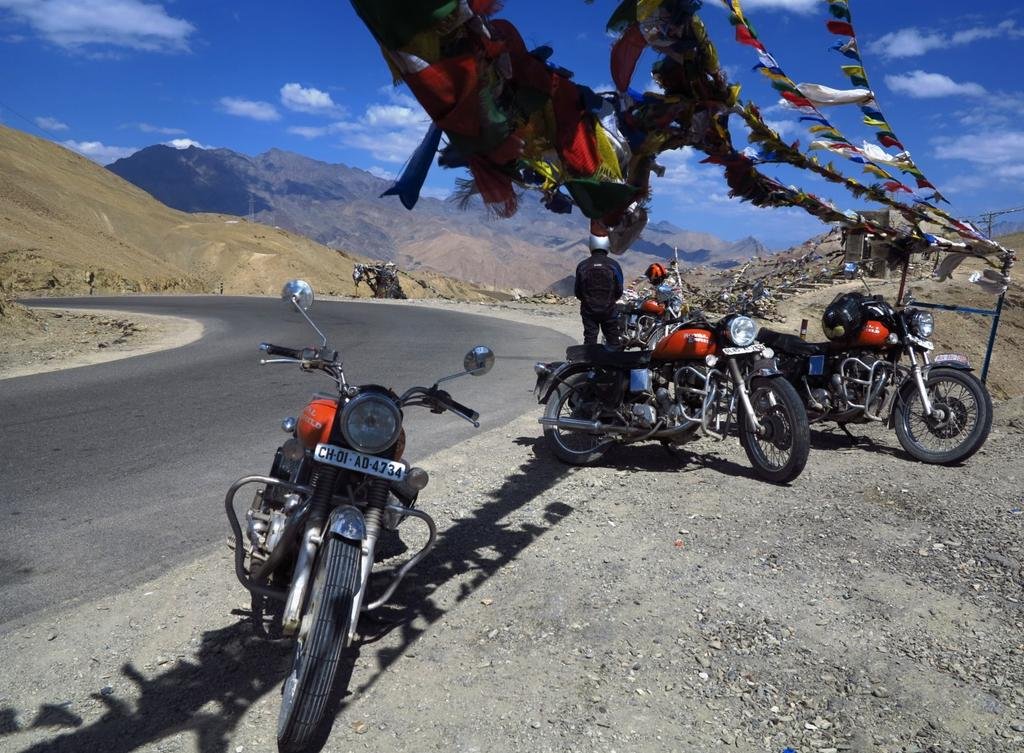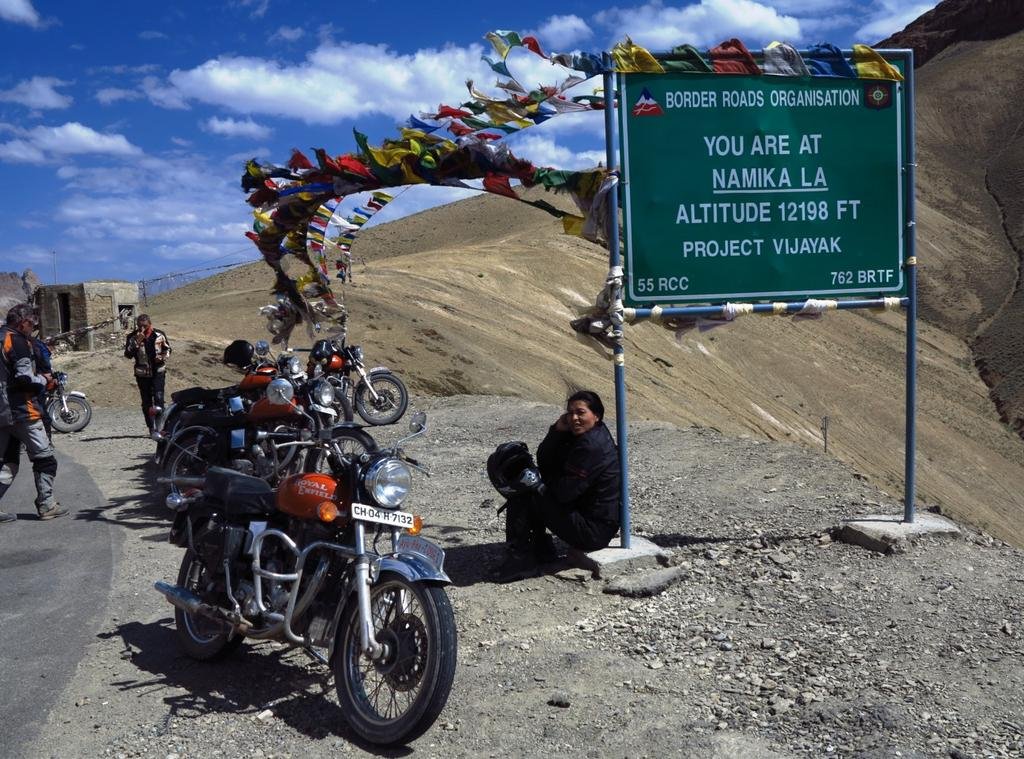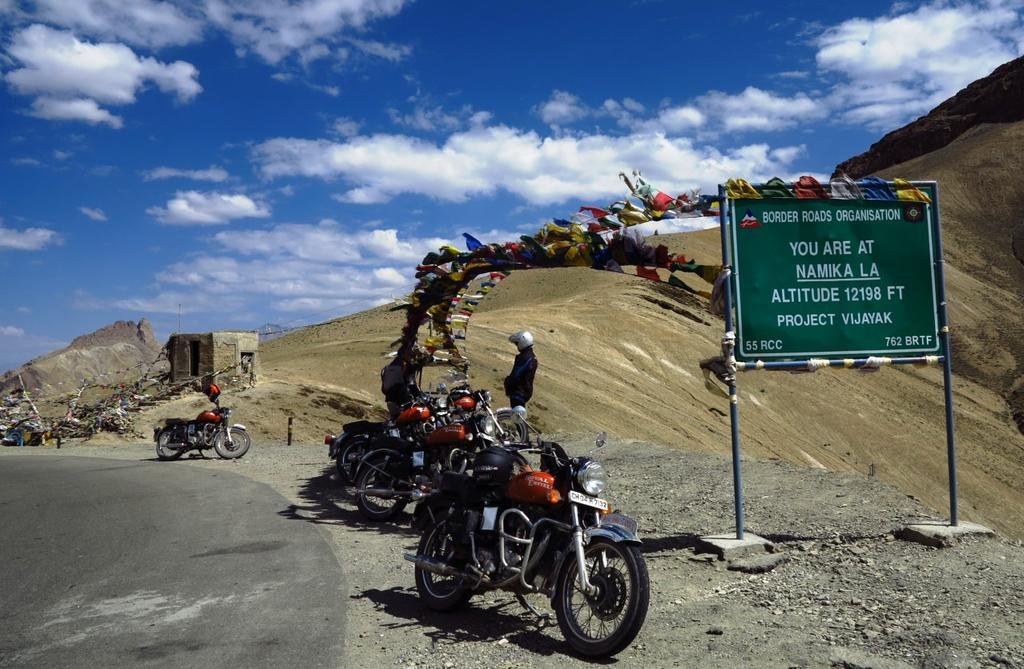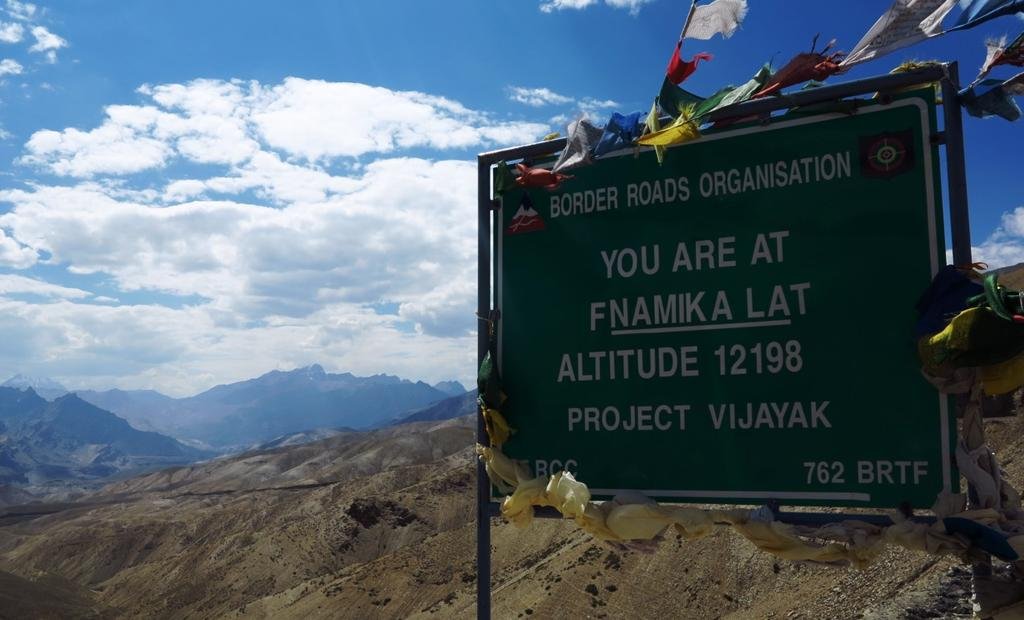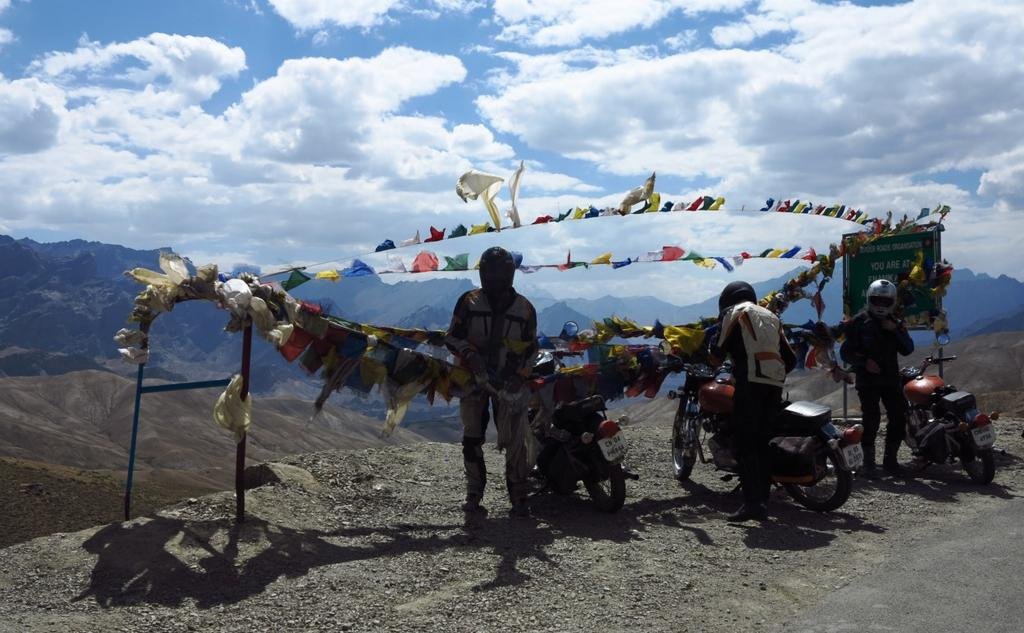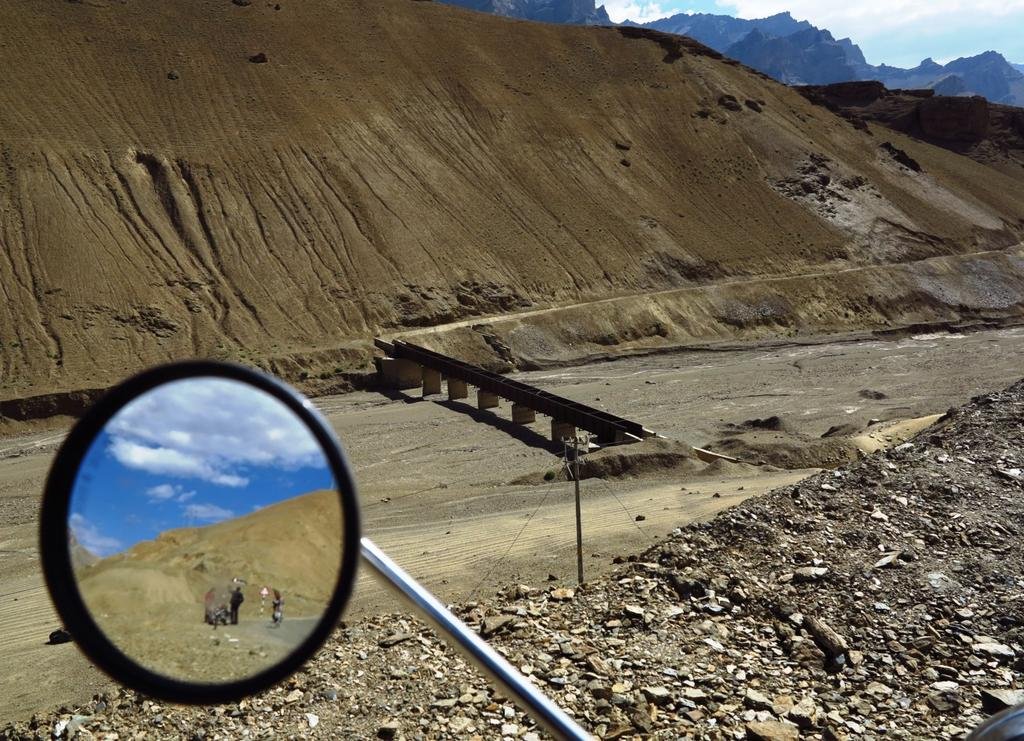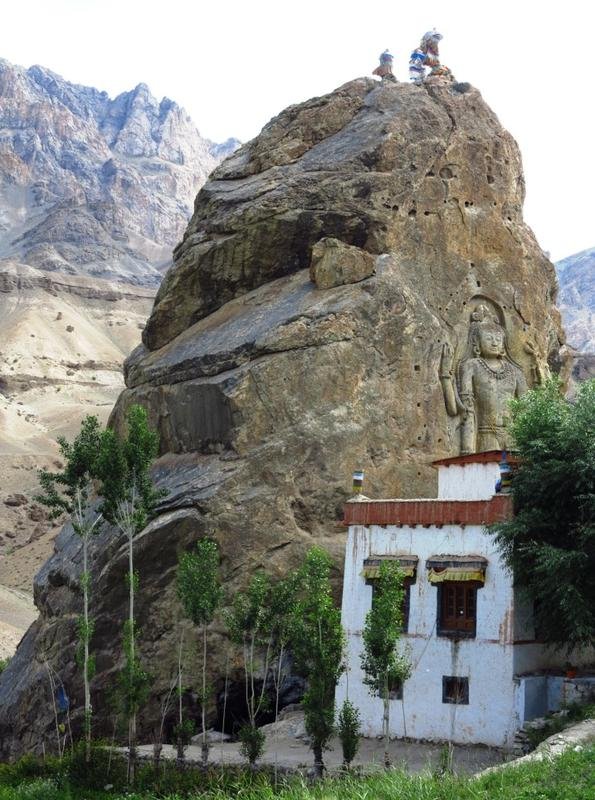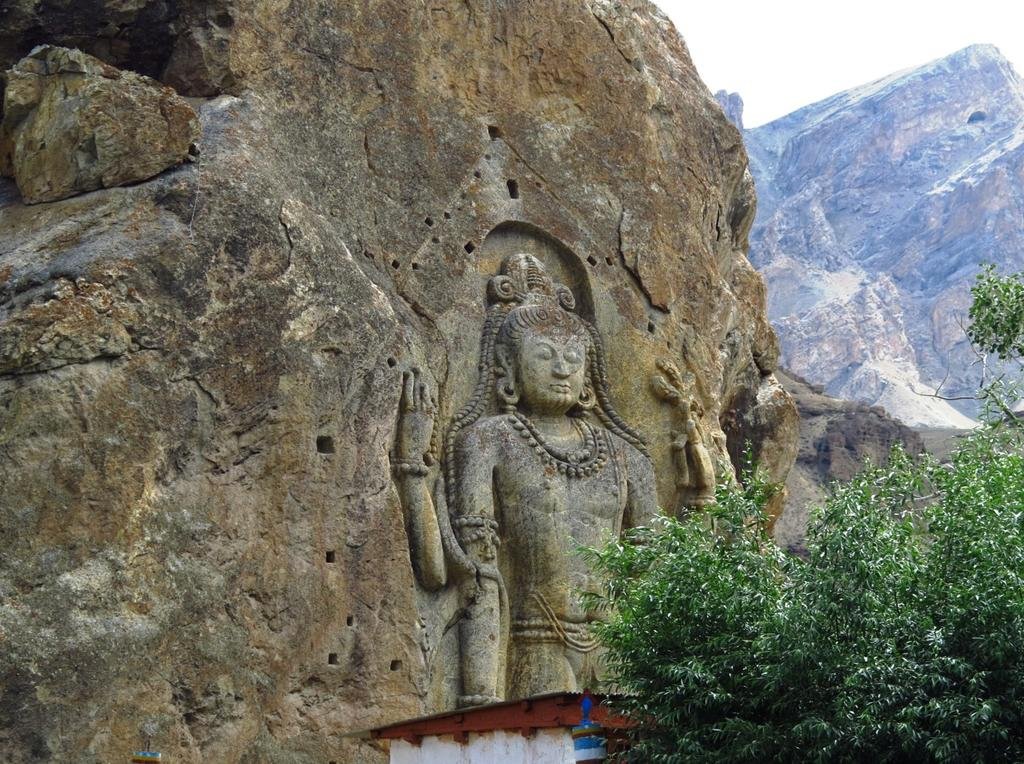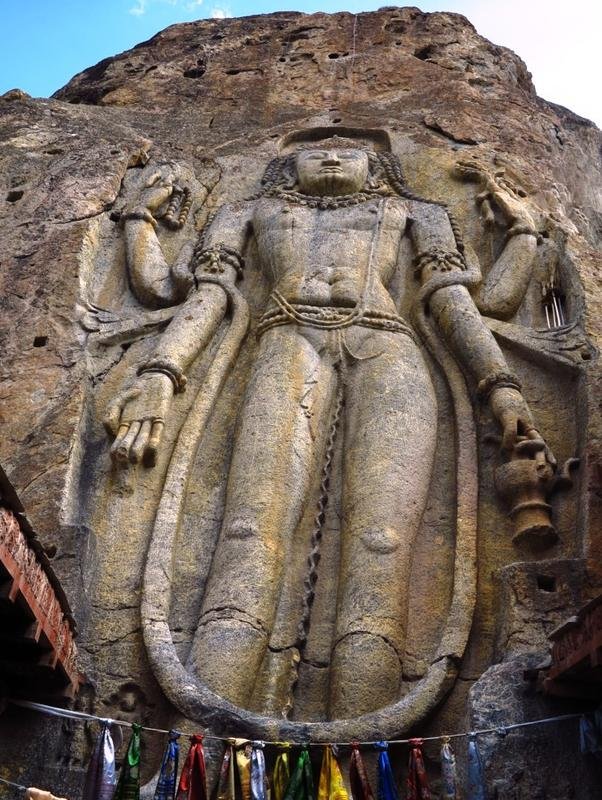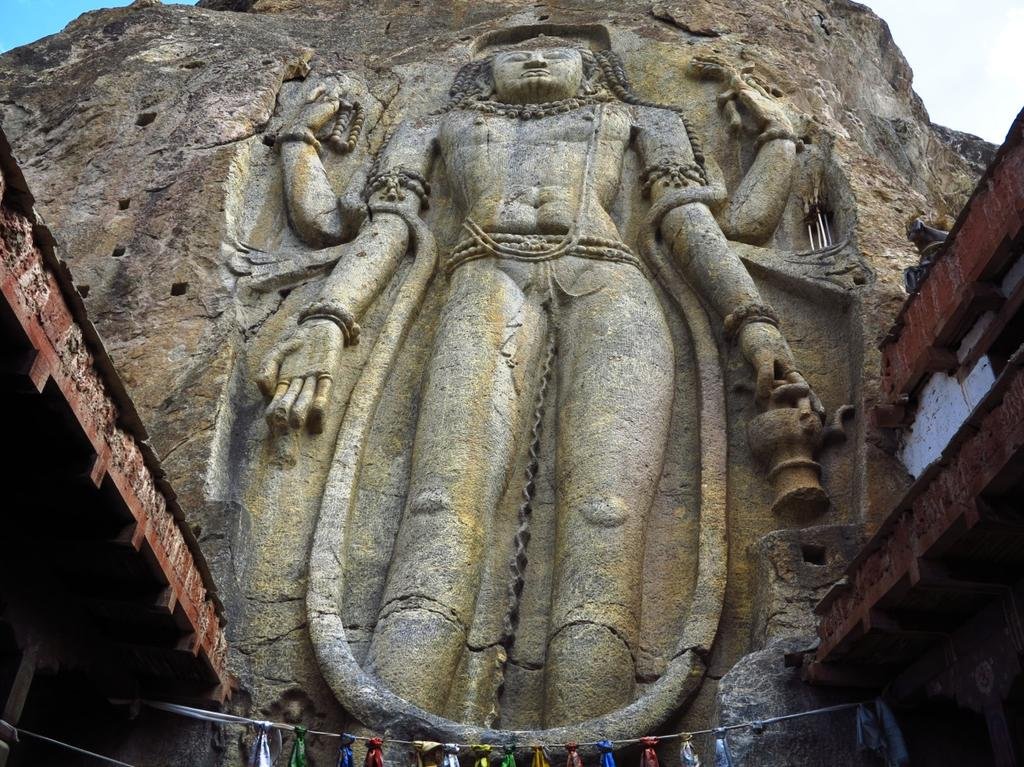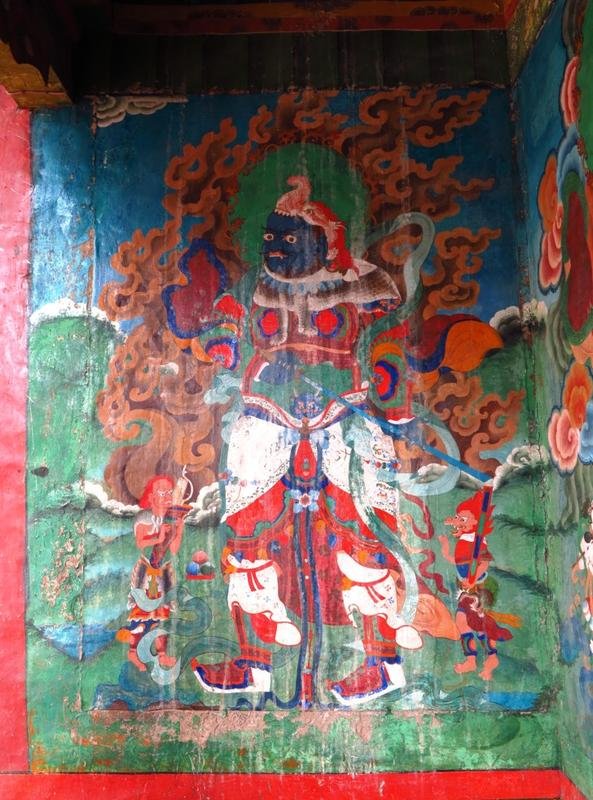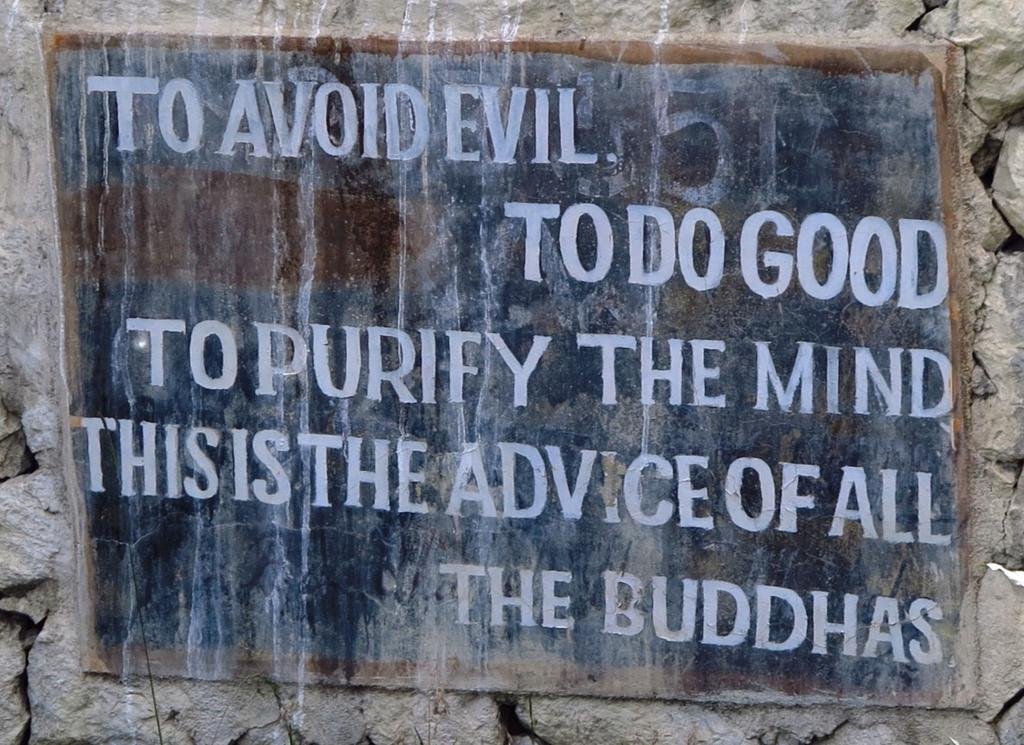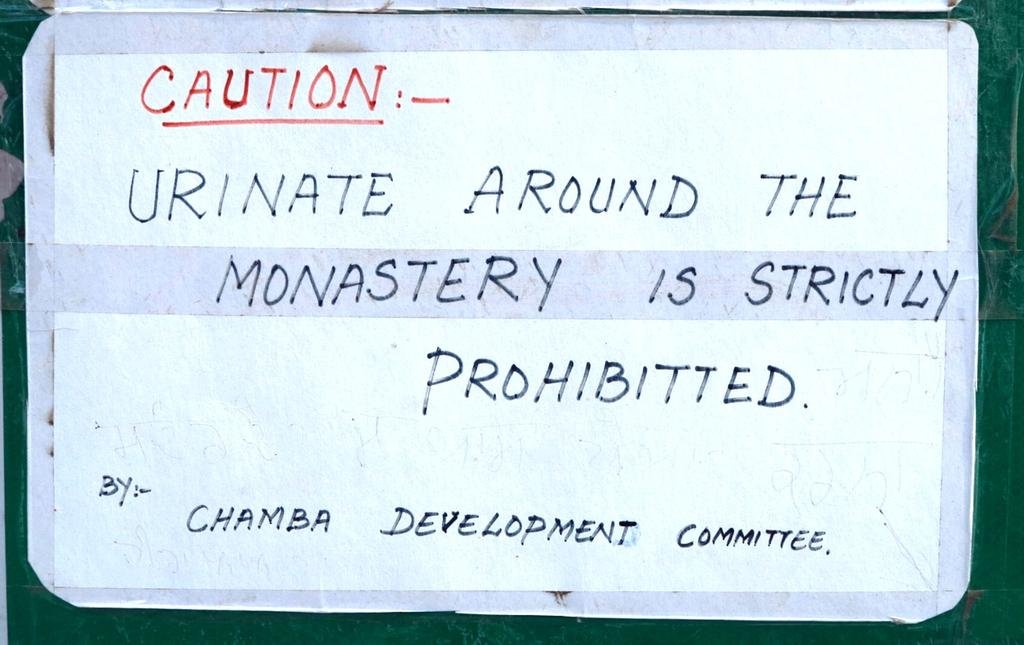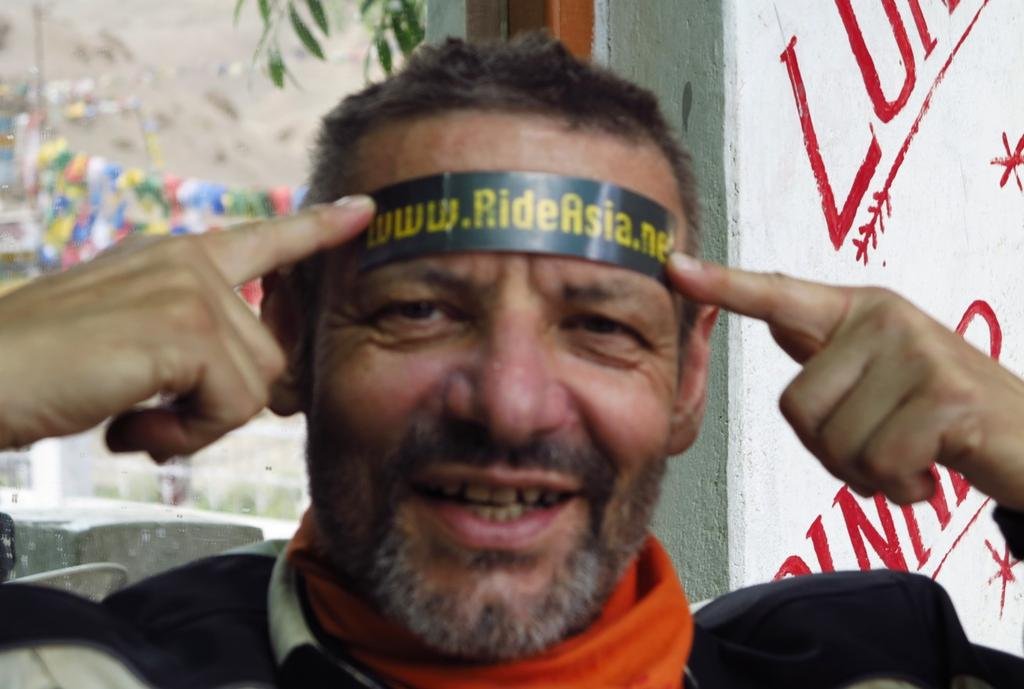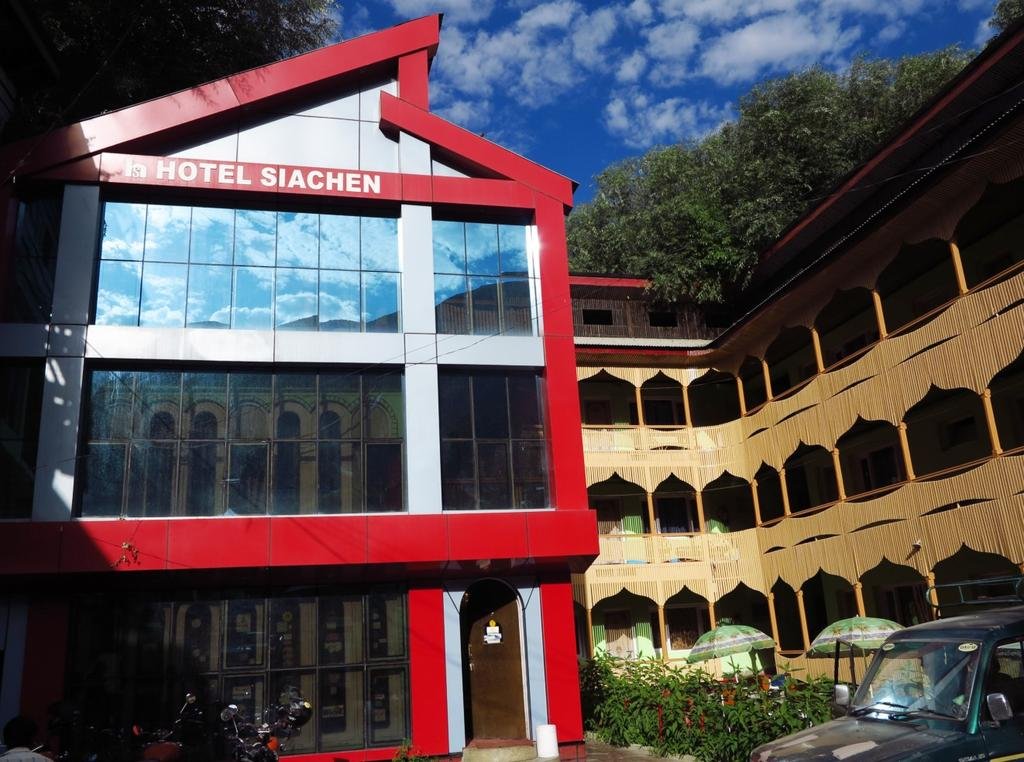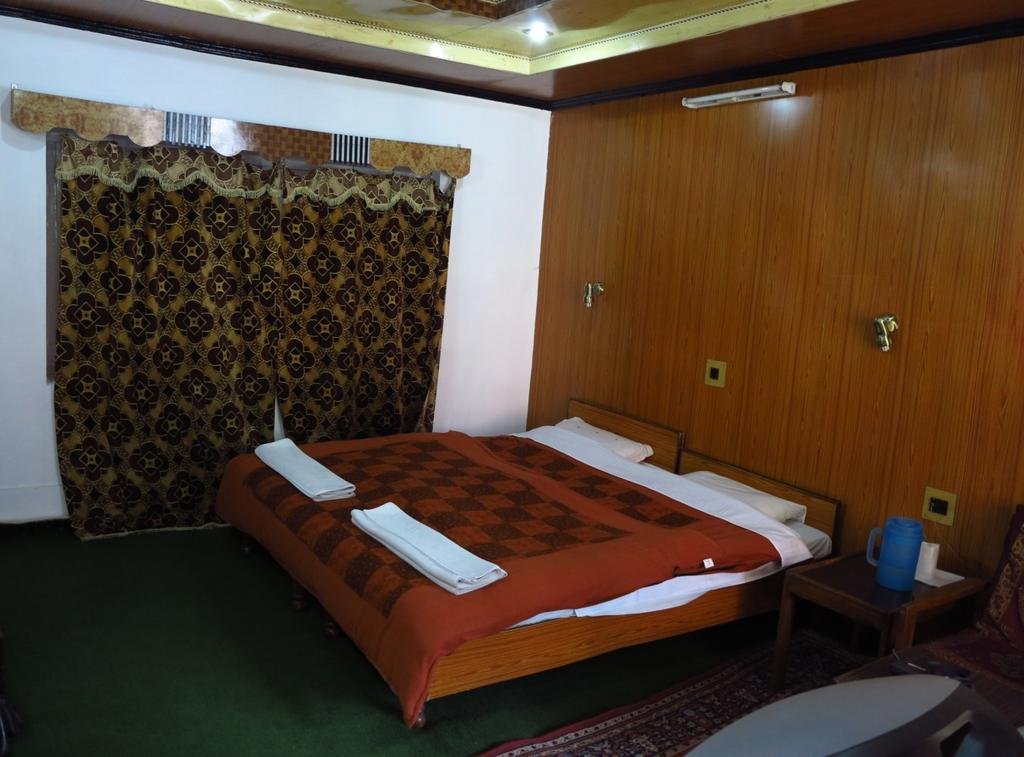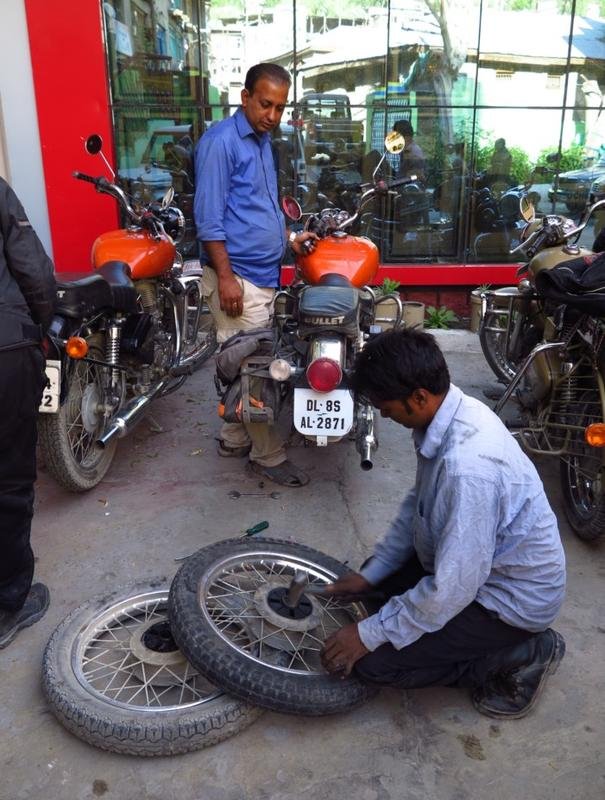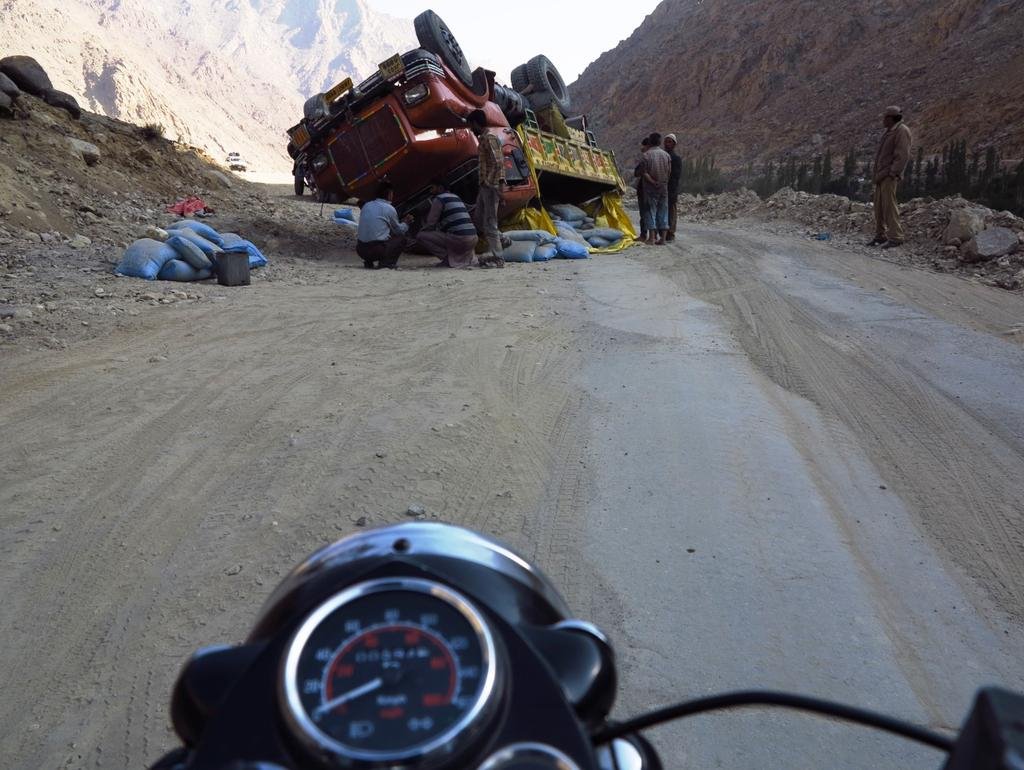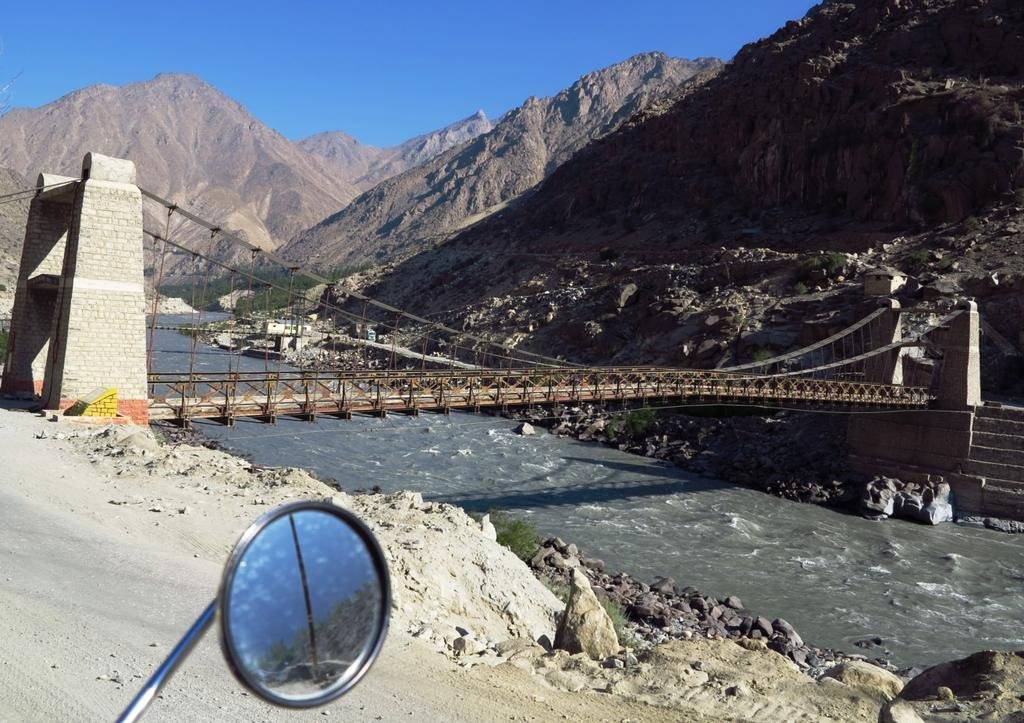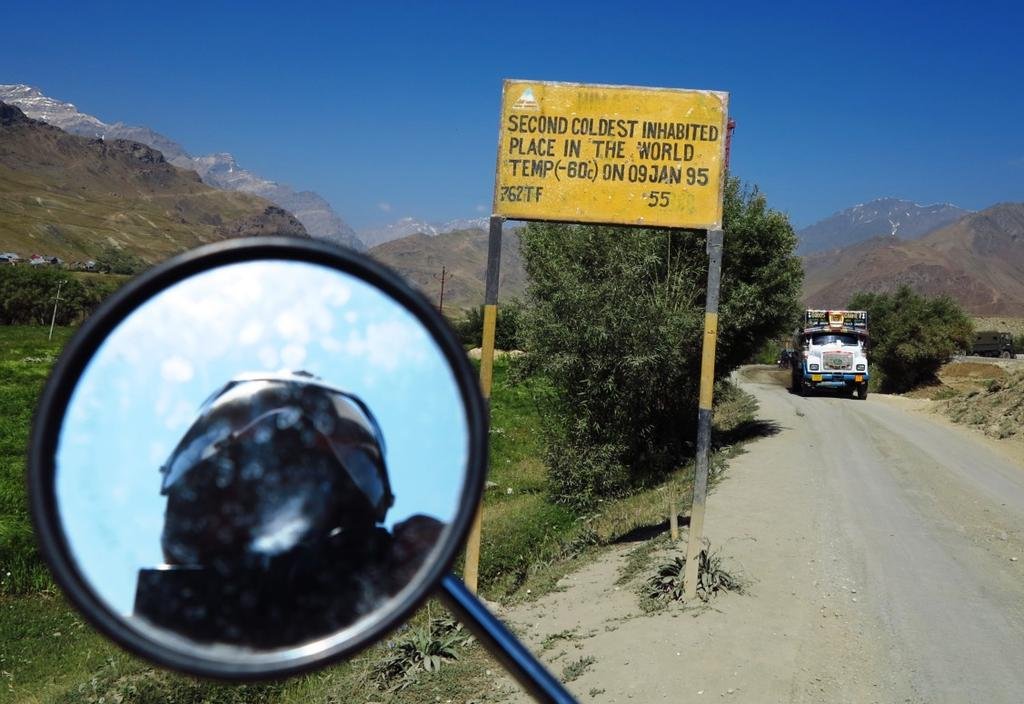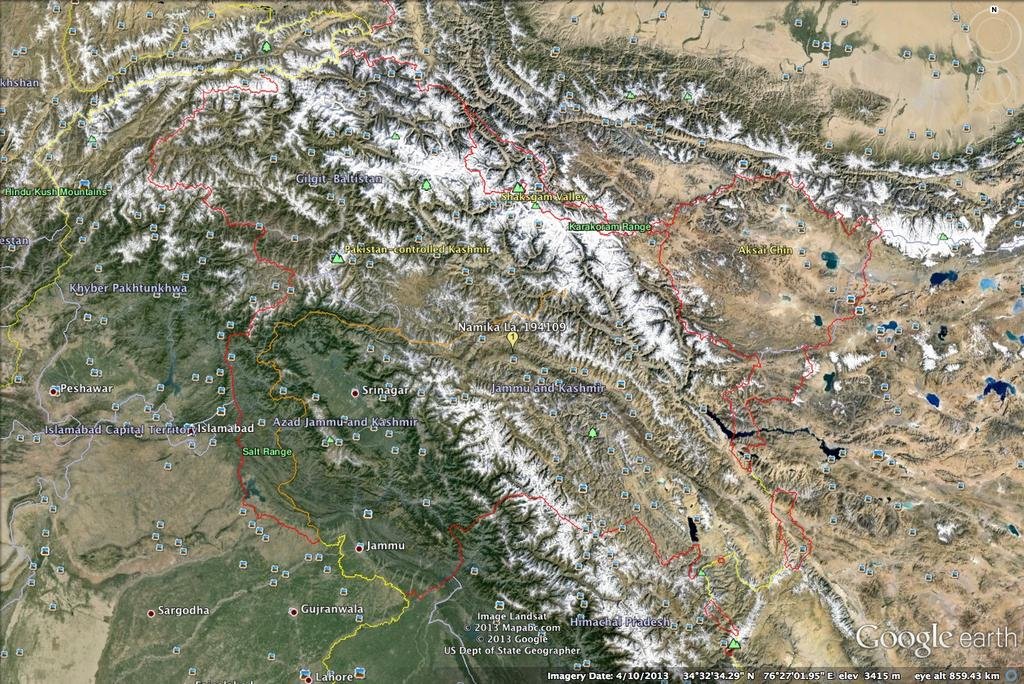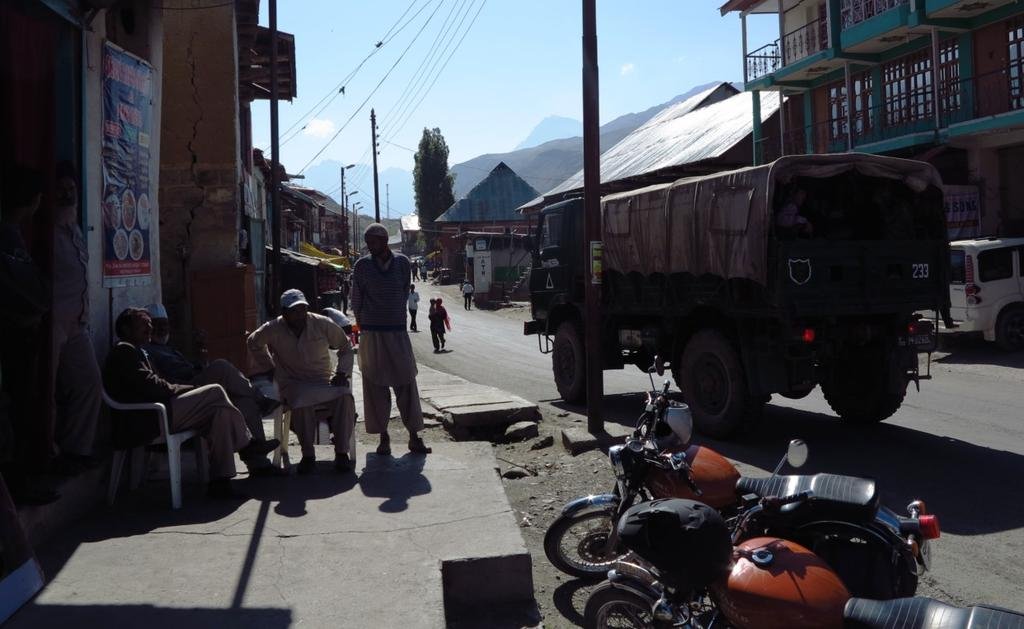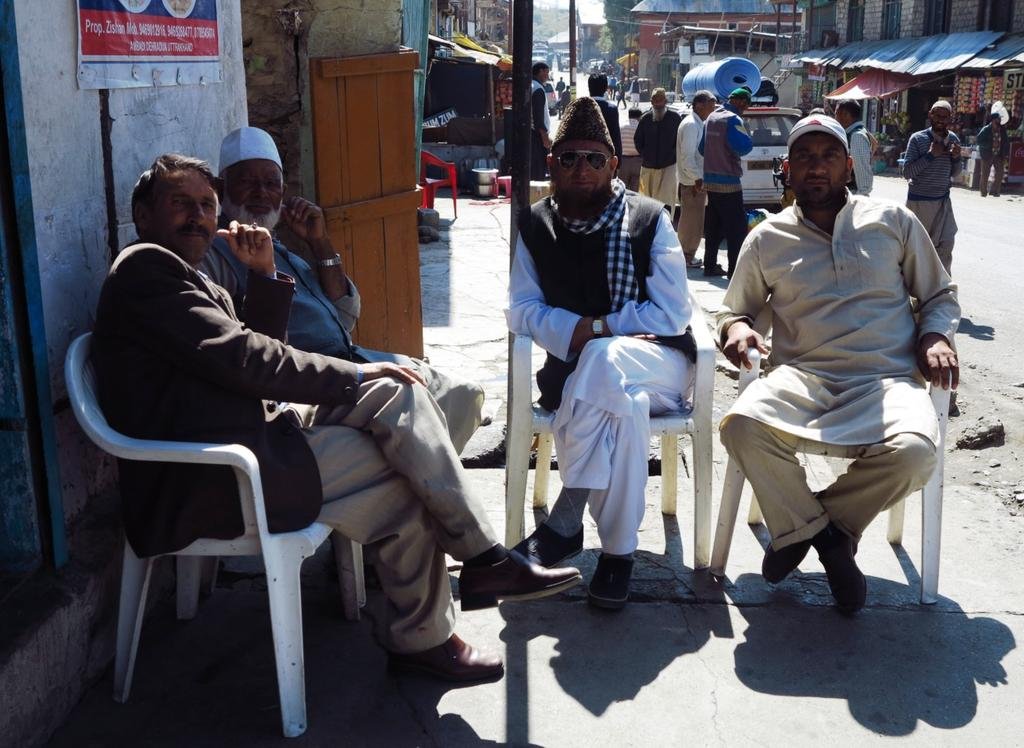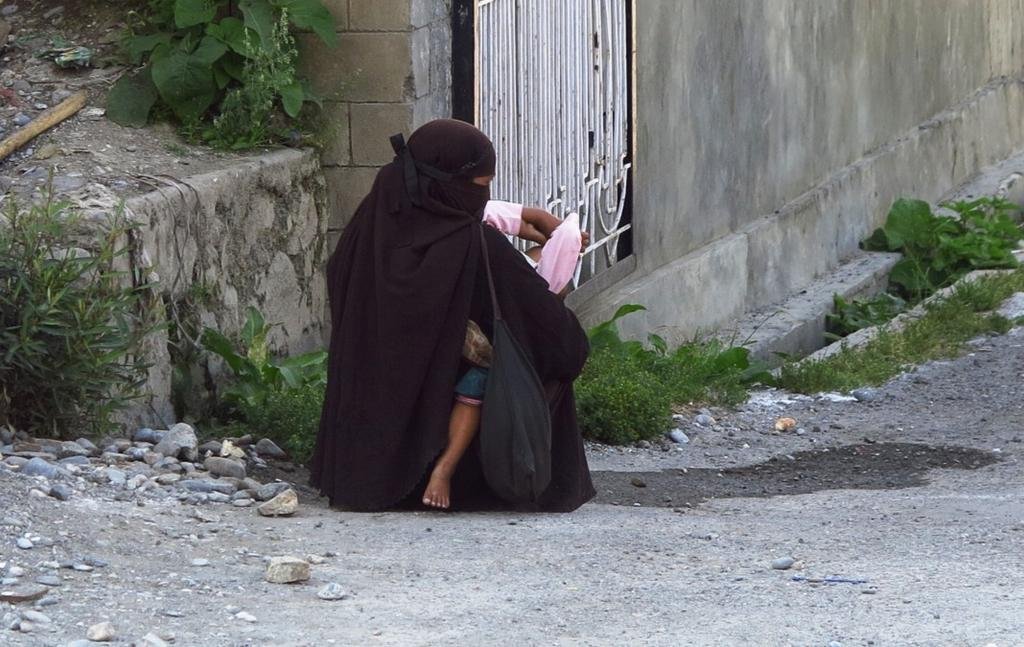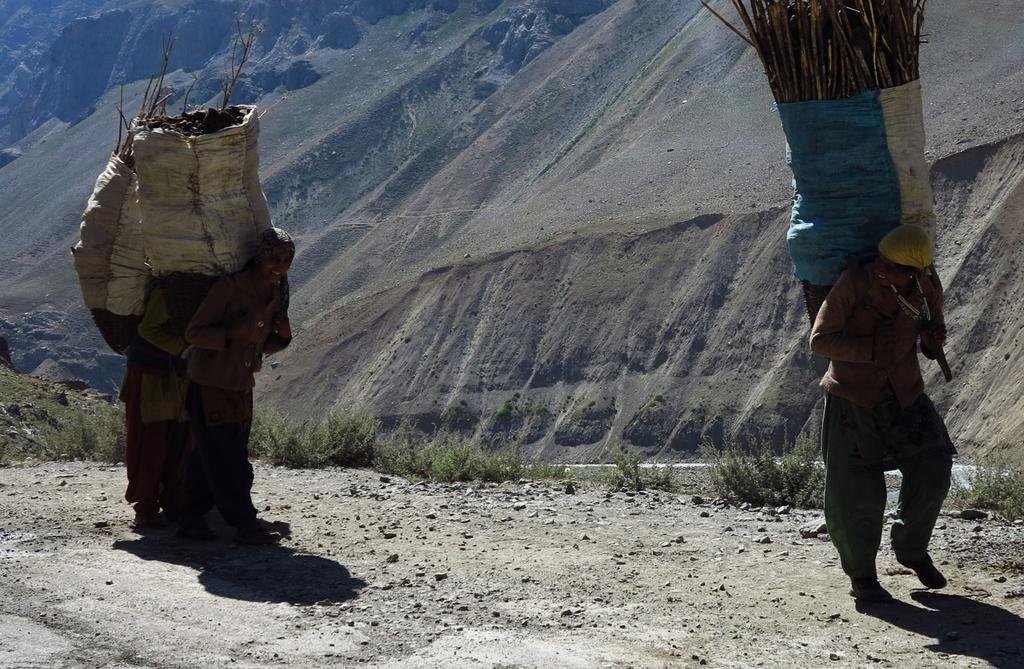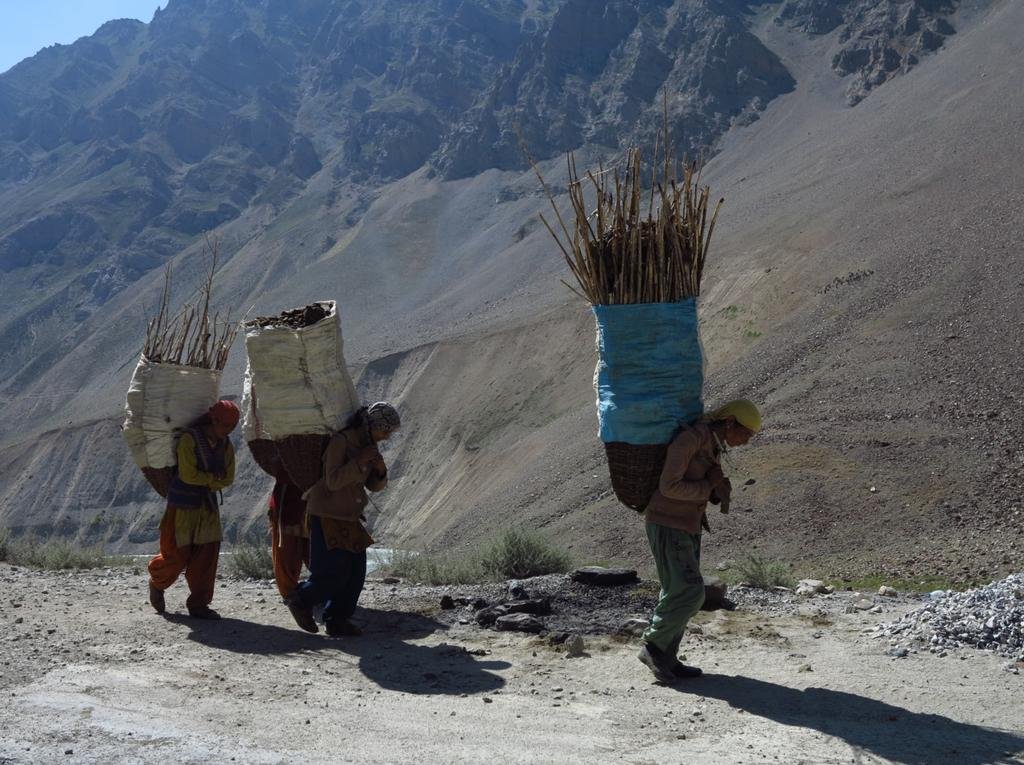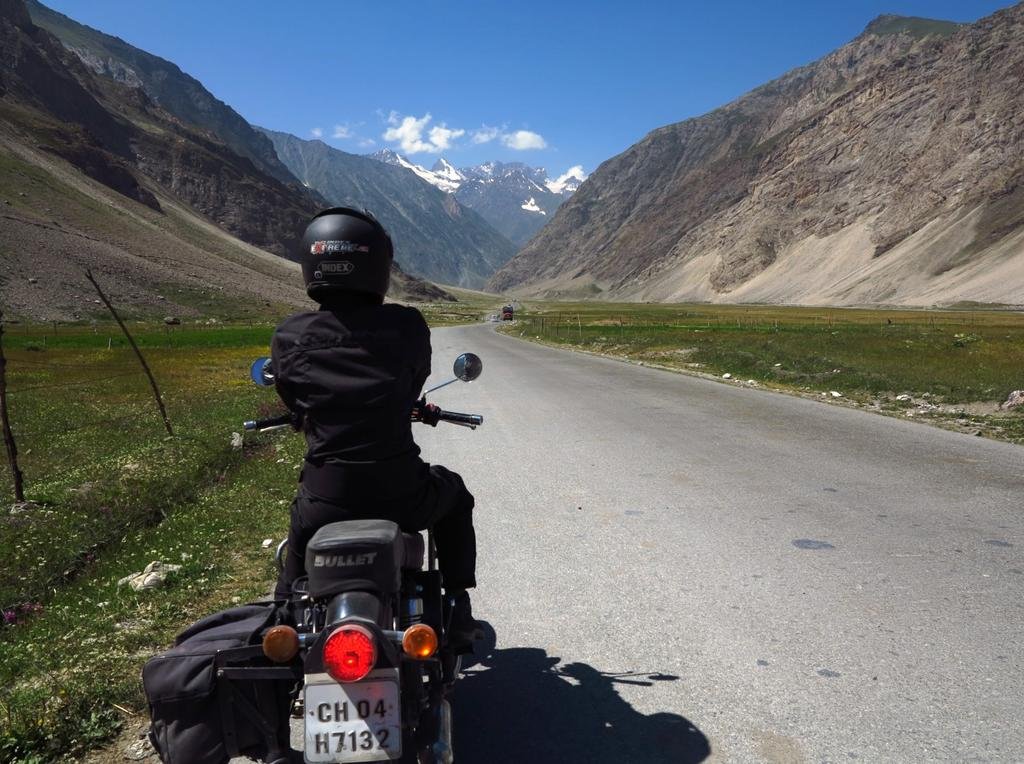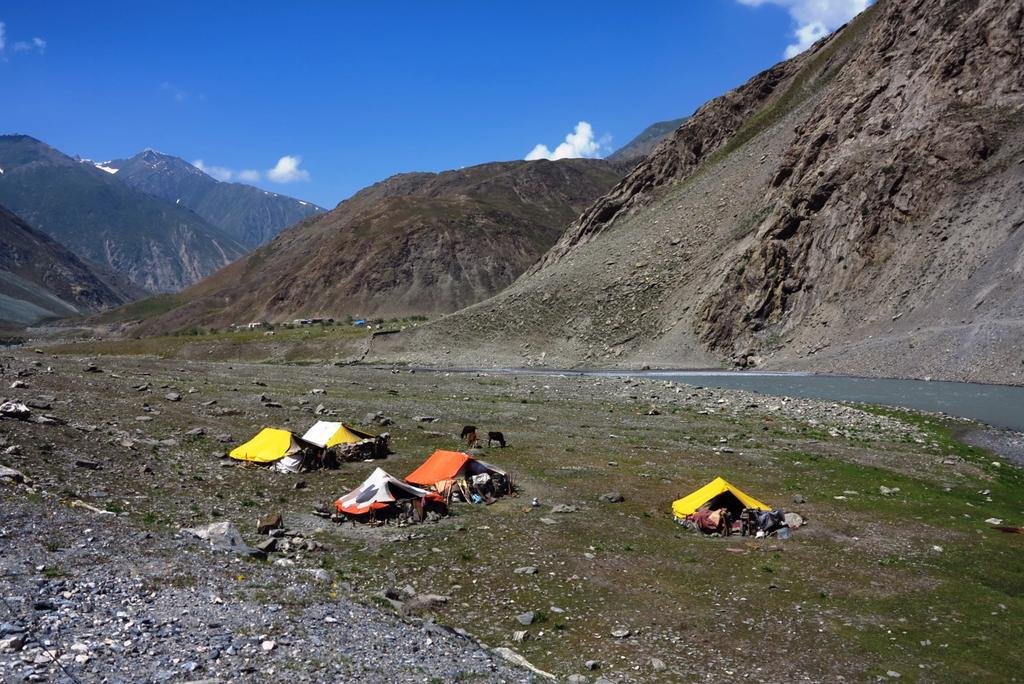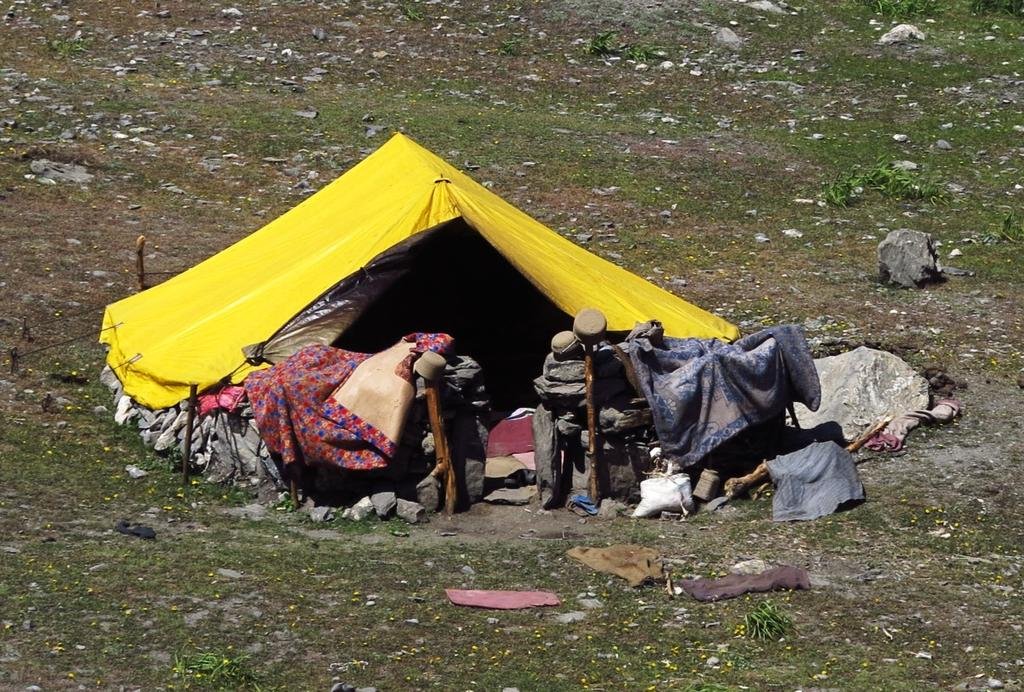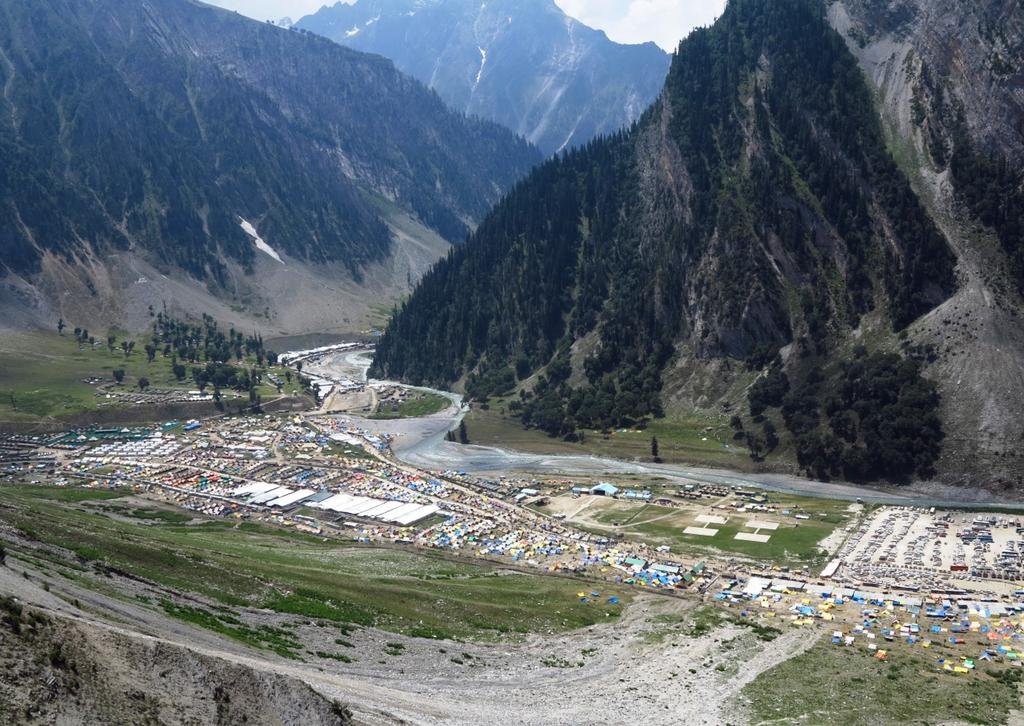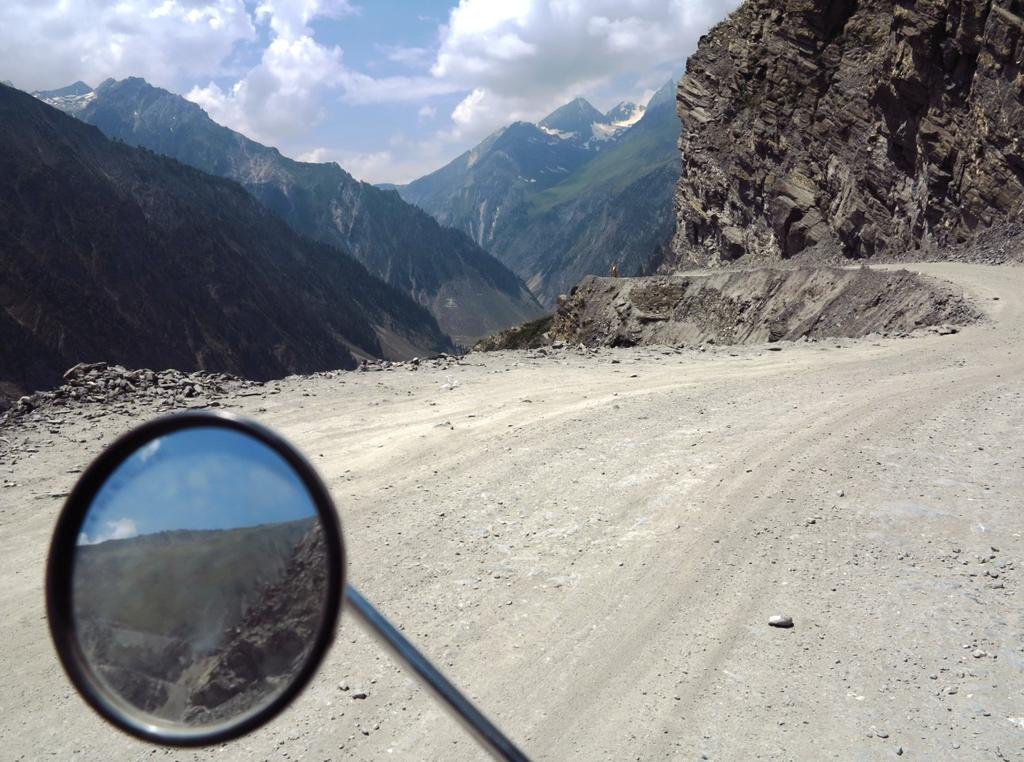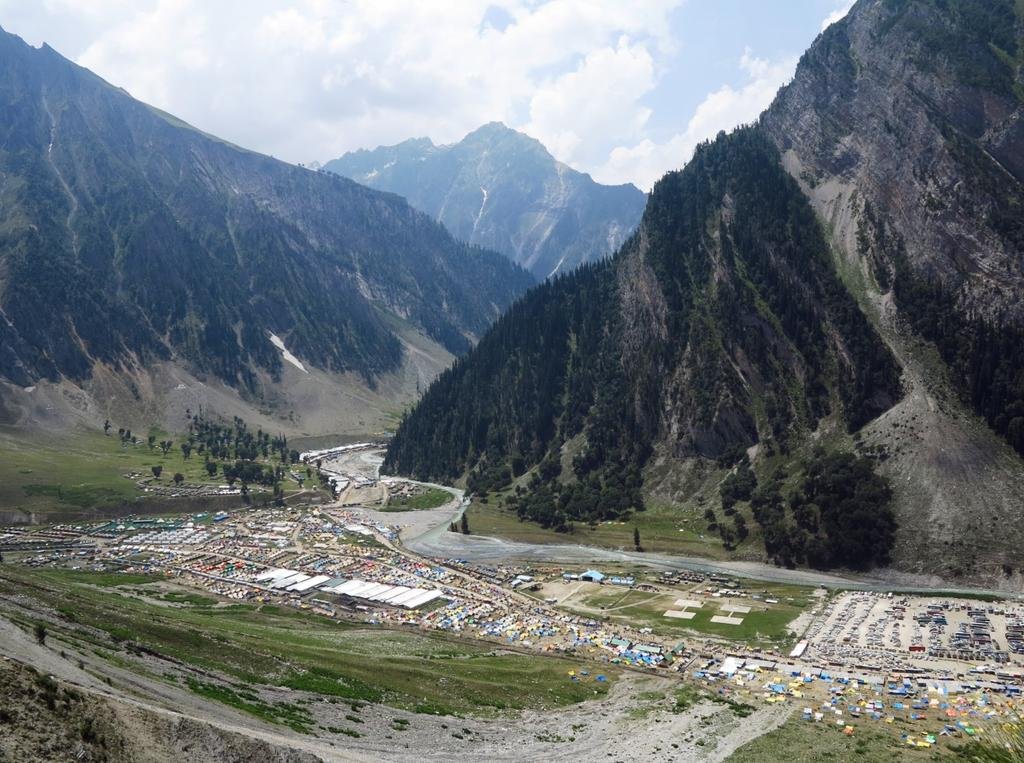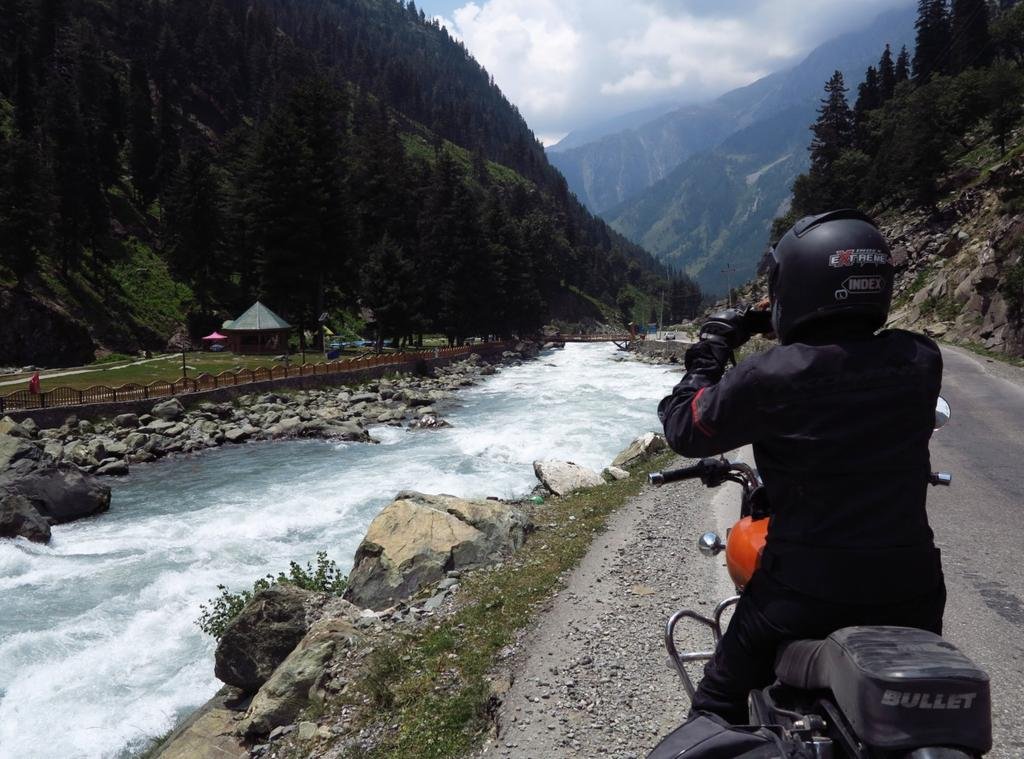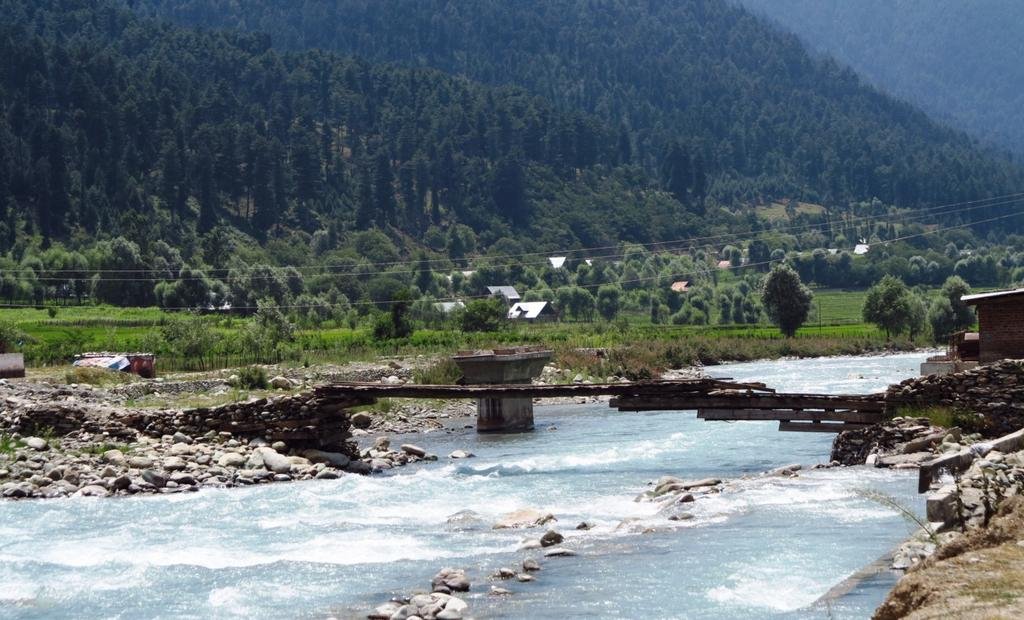You are using an out of date browser. It may not display this or other websites correctly.
You should upgrade or use an alternative browser.
You should upgrade or use an alternative browser.
A tour around north India on Royal Enfields
- Thread starter KTMphil
- Start date
KTMphil
Senior member
KTMphil
Senior member
KTMphil
Senior member
KTMphil
Senior member
KTMphil
Senior member
This is why people come to this small town- The 1,000 year old Alchi Monastery
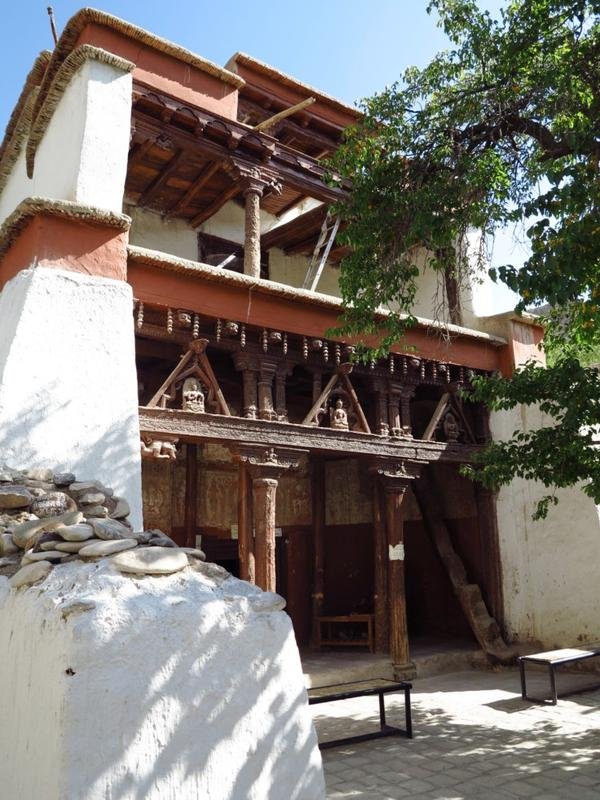
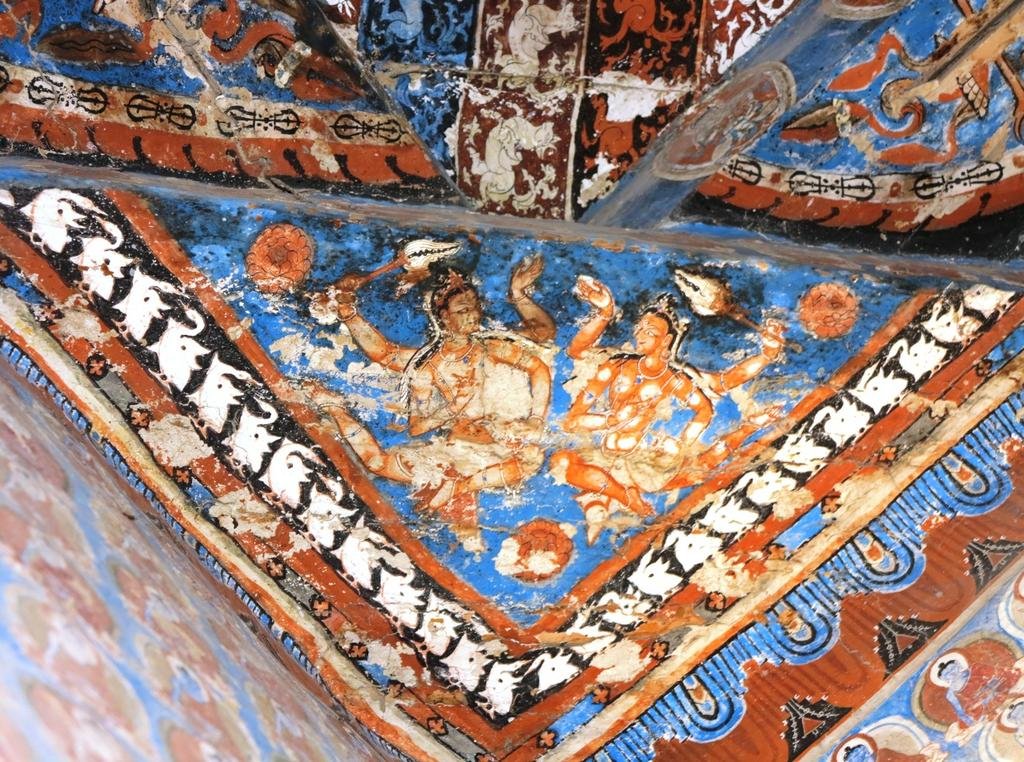
From Wiki:
Alchi Monastery - Wikipedia, the free encyclopedia
Alchi Monastery or Alchi Gompa is a Buddhist monastery, known more as a monastic complex (chos-'khor) of temples in Alchi village in the Leh District, of the Indian state under the Ladakh Autonomous Hill Development Council of Jammu and Kashmir. The complex comprises four separate settlements in the Alchi village in the lower Ladakh region with monuments dated to different periods. Of these four hamlets, Alchi monastery is said to be the oldest and most famous. It is administered by the Likir Monastery.[SUP][1][/SUP][SUP][2][/SUP][SUP][3][/SUP]
Alchi is also part of the three villages (all in lower Ladakh region) which constitute the 'Alchi group of monuments'; the other two villages adjoining Alchi are the Mangyu and Sumda Chun (now in Zanskar district). The monuments in these three villages are stated to be of "unique style and workmanship', but the Alchi monastic complex is the best known.[SUP][1][/SUP][SUP][2][/SUP]
The monastery complex was built, according to local tradition, by the great translator Guru Rinchen Zangpo between 958 and 1055. However, inscriptions in the preserved monuments ascribe it to a Tibetan noble called Kal-dan Shes-rab later in the 11th century.[SUP][2][/SUP][SUP][4][/SUP] Dukhang or Assembly Hall and the Main Temple (gTsug-lag-khang), which is a three-storied temple called the Sumtseg (gSum-brtsegs), are built in Kashmiri style as seen in many monasteries; the third temple is called the Manjushri Temple ('Jam-dpal lHa-khang). Chortens are also an important part of the complex.[SUP][1][/SUP][SUP][2][/SUP]
The artistic and spiritual details of both Buddhism and the Hindu kings of that time in Kashmir are reflected in the wall paintings in the monastery. These are some of the oldest surviving paintings in Ladakh. The complex also has huge statues of the Buddha and elaborate wood carvings and art-work comparable to the baroque style.[SUP][2][/SUP][SUP][5][/SUP] Shakti Maira has vividly explained the beauty of this small monastery.[SUP][6]
[/SUP]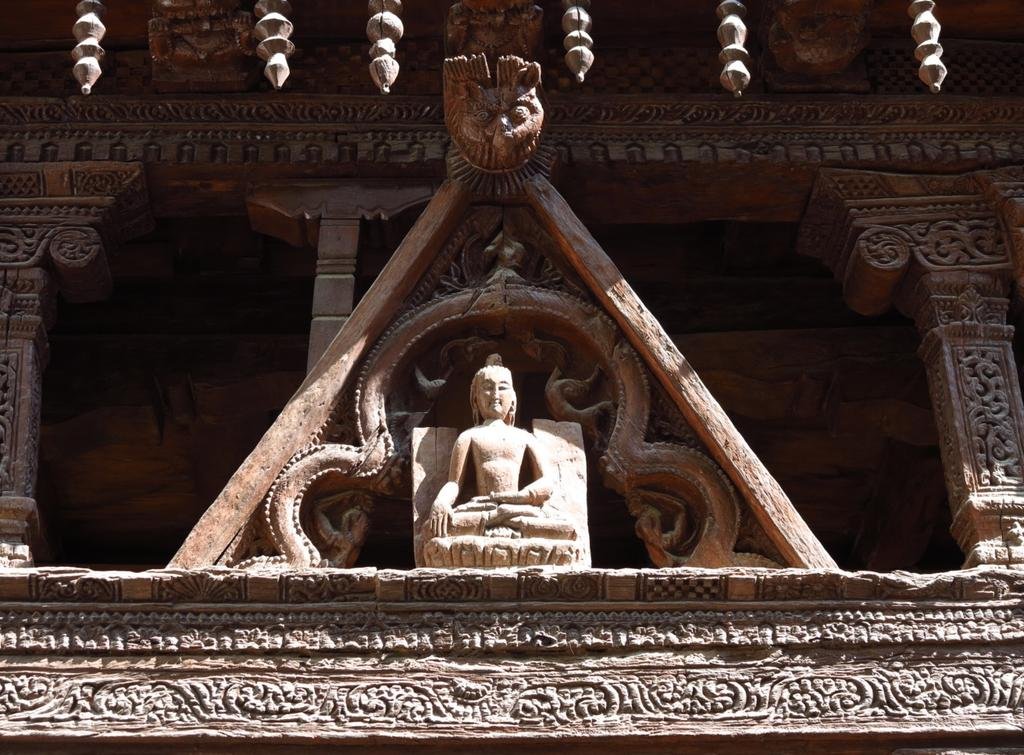 [SUP]
[SUP]
[/SUP]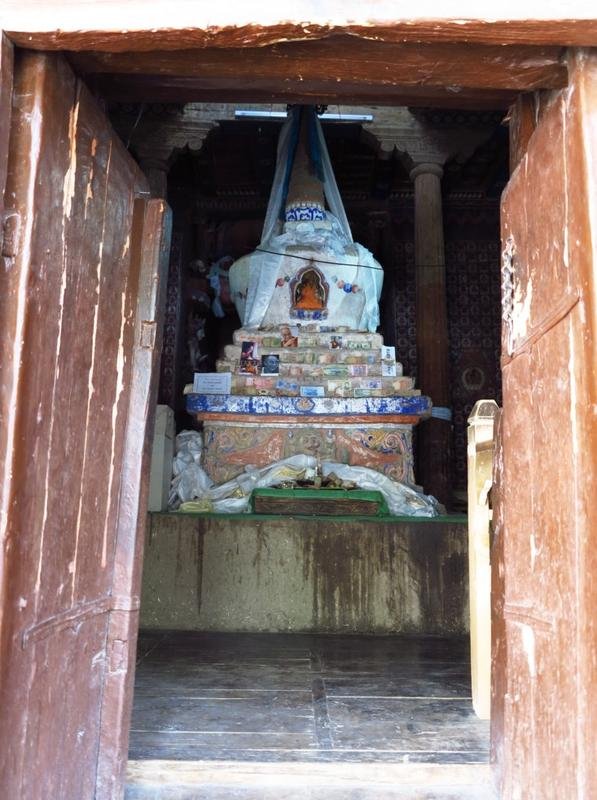
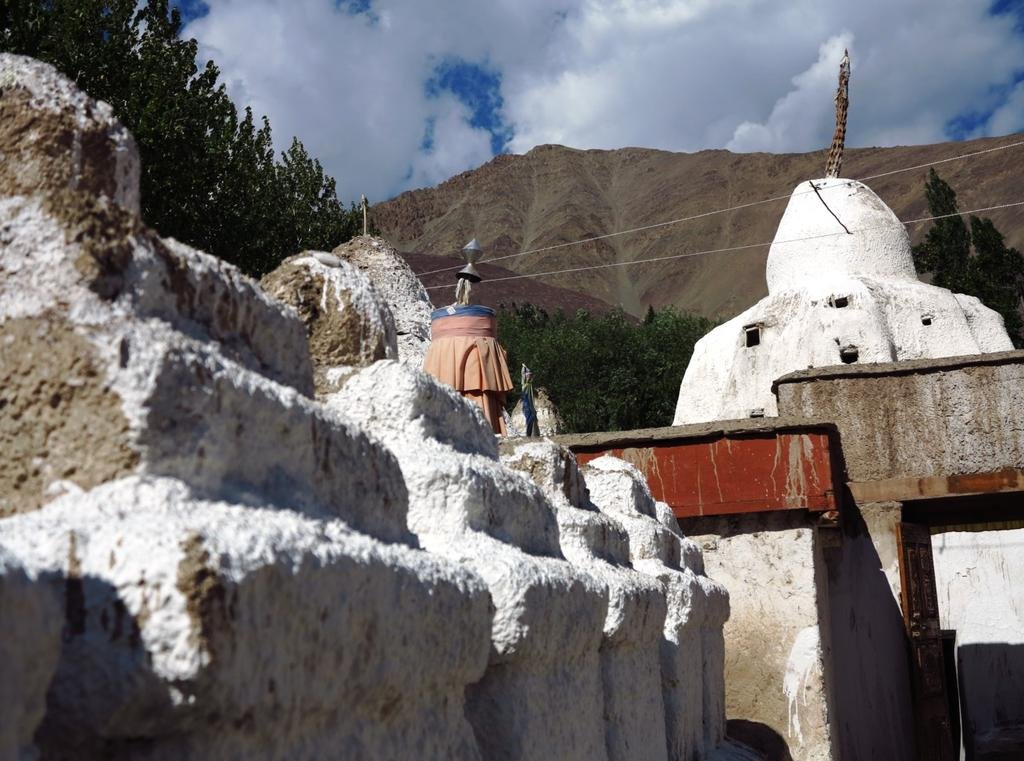
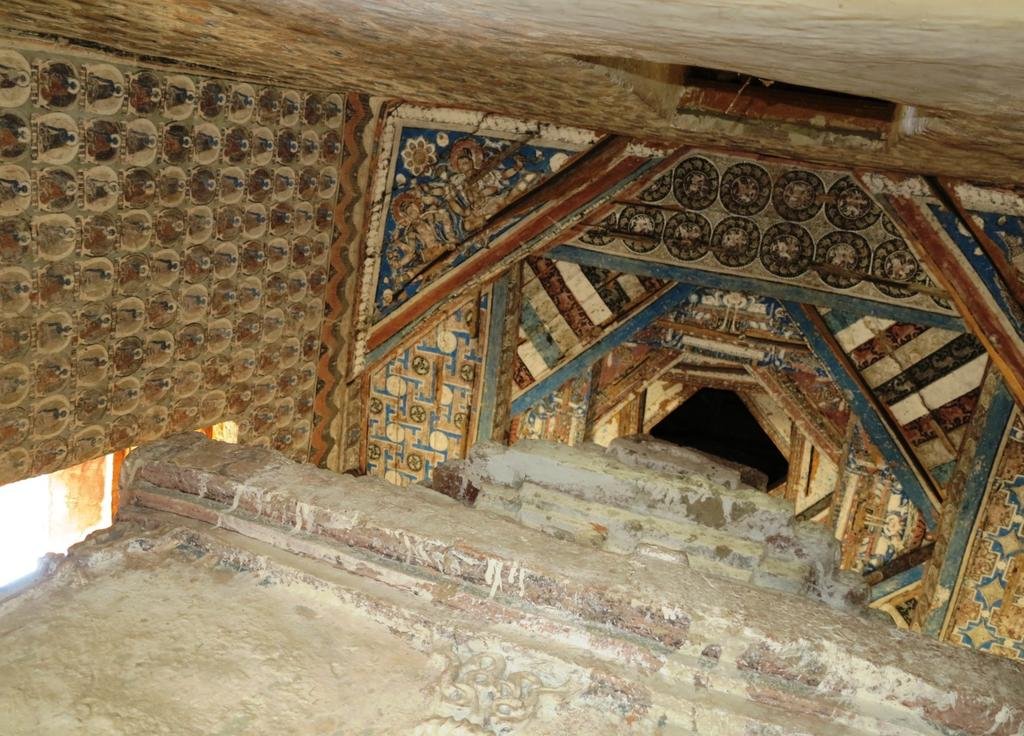
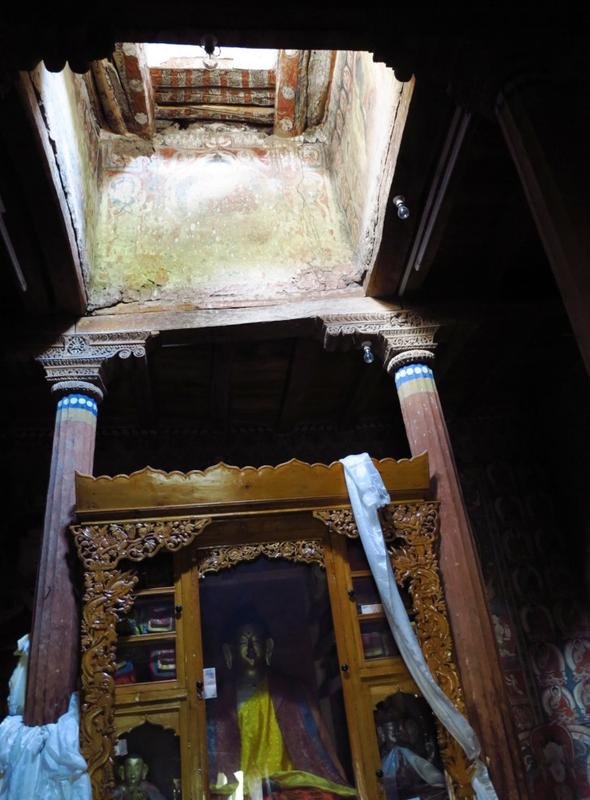 [SUP]
[SUP]
[/SUP]


From Wiki:
Alchi Monastery - Wikipedia, the free encyclopedia
Alchi Monastery or Alchi Gompa is a Buddhist monastery, known more as a monastic complex (chos-'khor) of temples in Alchi village in the Leh District, of the Indian state under the Ladakh Autonomous Hill Development Council of Jammu and Kashmir. The complex comprises four separate settlements in the Alchi village in the lower Ladakh region with monuments dated to different periods. Of these four hamlets, Alchi monastery is said to be the oldest and most famous. It is administered by the Likir Monastery.[SUP][1][/SUP][SUP][2][/SUP][SUP][3][/SUP]
Alchi is also part of the three villages (all in lower Ladakh region) which constitute the 'Alchi group of monuments'; the other two villages adjoining Alchi are the Mangyu and Sumda Chun (now in Zanskar district). The monuments in these three villages are stated to be of "unique style and workmanship', but the Alchi monastic complex is the best known.[SUP][1][/SUP][SUP][2][/SUP]
The monastery complex was built, according to local tradition, by the great translator Guru Rinchen Zangpo between 958 and 1055. However, inscriptions in the preserved monuments ascribe it to a Tibetan noble called Kal-dan Shes-rab later in the 11th century.[SUP][2][/SUP][SUP][4][/SUP] Dukhang or Assembly Hall and the Main Temple (gTsug-lag-khang), which is a three-storied temple called the Sumtseg (gSum-brtsegs), are built in Kashmiri style as seen in many monasteries; the third temple is called the Manjushri Temple ('Jam-dpal lHa-khang). Chortens are also an important part of the complex.[SUP][1][/SUP][SUP][2][/SUP]
The artistic and spiritual details of both Buddhism and the Hindu kings of that time in Kashmir are reflected in the wall paintings in the monastery. These are some of the oldest surviving paintings in Ladakh. The complex also has huge statues of the Buddha and elaborate wood carvings and art-work comparable to the baroque style.[SUP][2][/SUP][SUP][5][/SUP] Shakti Maira has vividly explained the beauty of this small monastery.[SUP][6]
[/SUP]
 [SUP]
[SUP][/SUP]



 [SUP]
[SUP][/SUP]
KTMphil
Senior member
Next day westwards to Kargil and we'll start to enter the Muslim region as we are getting towards the Pakistan border
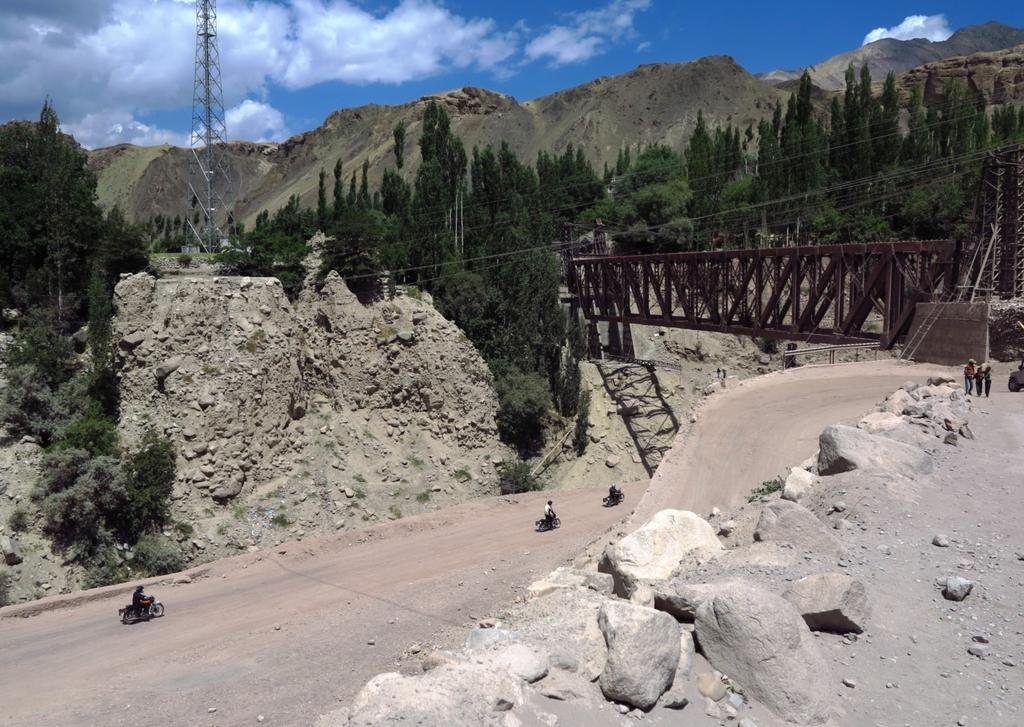
This is still a very delicate area with thousands of Indian military personnel everywhere. 10 years ago, you could sit in Kargil and watch Pakistan artillery fire coming over the ridge line
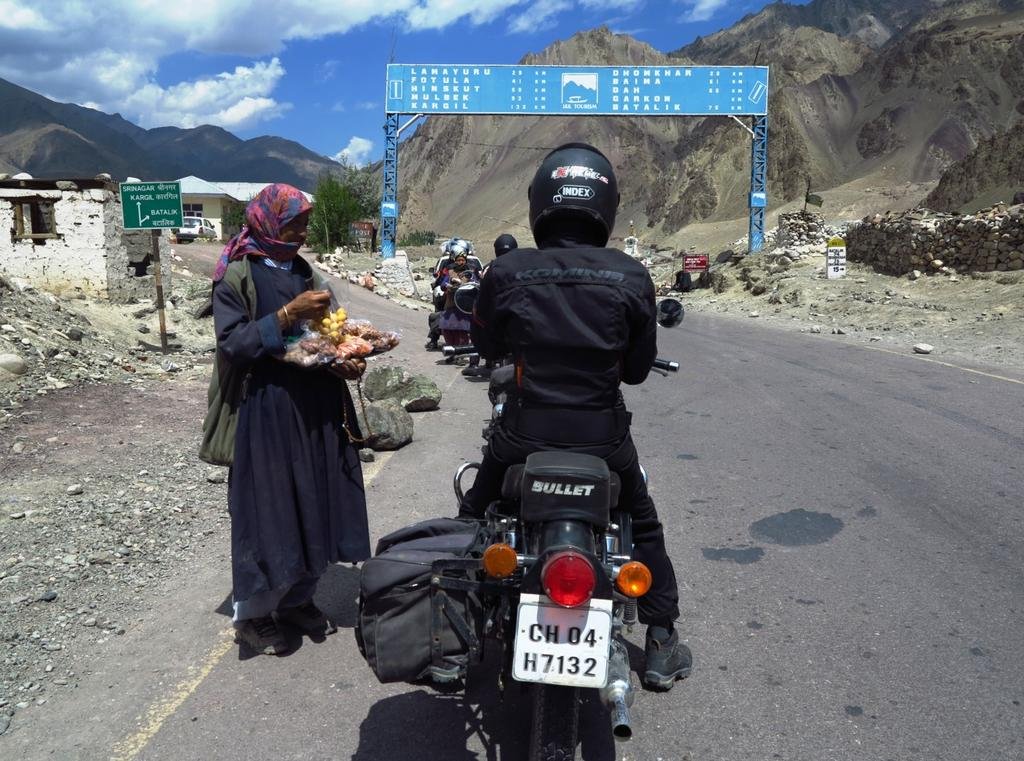

This is still a very delicate area with thousands of Indian military personnel everywhere. 10 years ago, you could sit in Kargil and watch Pakistan artillery fire coming over the ridge line

KTMphil
Senior member
KTMphil
Senior member
Ally
Well-known member
Wow !
KTMphil
Senior member
KTMphil
Senior member
KTMphil
Senior member
yes, phil, KTM 390 for the road to heaven...while you r there explore the possibility again for riding to Nepal and air freight it to bangkok....
Robert - looking to ride it back to Chiang Mai from Nepal, through Tibet
KTMphil
Senior member
Half way to Kargil and the Lamayuru Monastery
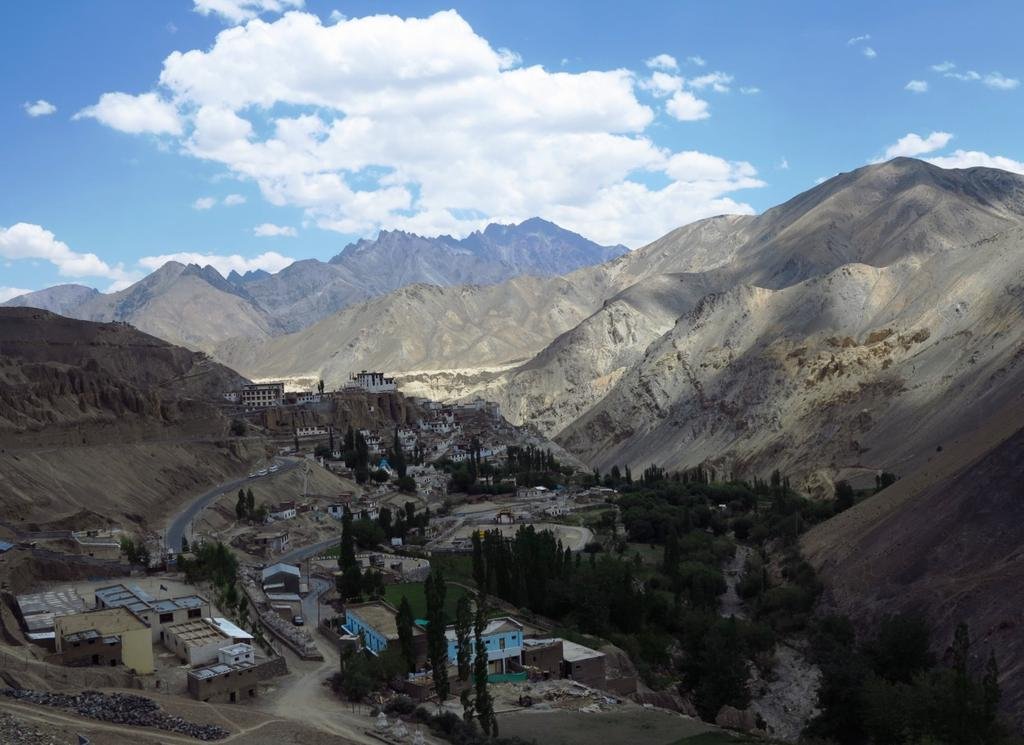
From Wiki:
Lamayuru Monastery - Wikipedia, the free encyclopedia
A. H. Francke states that, "according to popular tradition," it was originally the foremost Bonpo monastery in Ladakh and was called gYung-drung Monastery (from Tibetan: gYung-drung - a swastika - a popular symbol in Bon, Buddhism, and other religions); also gYung-drung-bon is the name of the Bon religion.[SUP][1][/SUP][SUP][2][/SUP]
The Indian scholar Mahasiddhacarya Naropa (956-1041 CE), allegedly caused a lake which filled the valley to dry up and founded Lamayuru Monastery. The oldest surviving building at Lamayuru is a temple called Seng-ge-sgang, at the southern end of the Lamayuru rock, which is attributed to the famous builder-monk Rinchen Zangpo (958-1055 CE). Rinchen Zangpo was charged by the king of Ladakh to build 108 gompas, and certainly many gompas in Ladakh, Spiti and the surrounding regions, date from his time.[SUP][3][/SUP]
Lamayuru is one of the largest and oldest gompas in Ladakh, with a population of around 150 permanent monks resident.
It has, in the past, housed up to 400 monks, many of which are now based in gompas in surrounding villages. Lamayuru is host to two annual masked dance festivals, in the second and fifth months of the Tibetan lunar calendar, when all the monks from these surrounding gompas gather together to pray.
Nearby is Wanla Monastery.
& the "Moonland Valley"
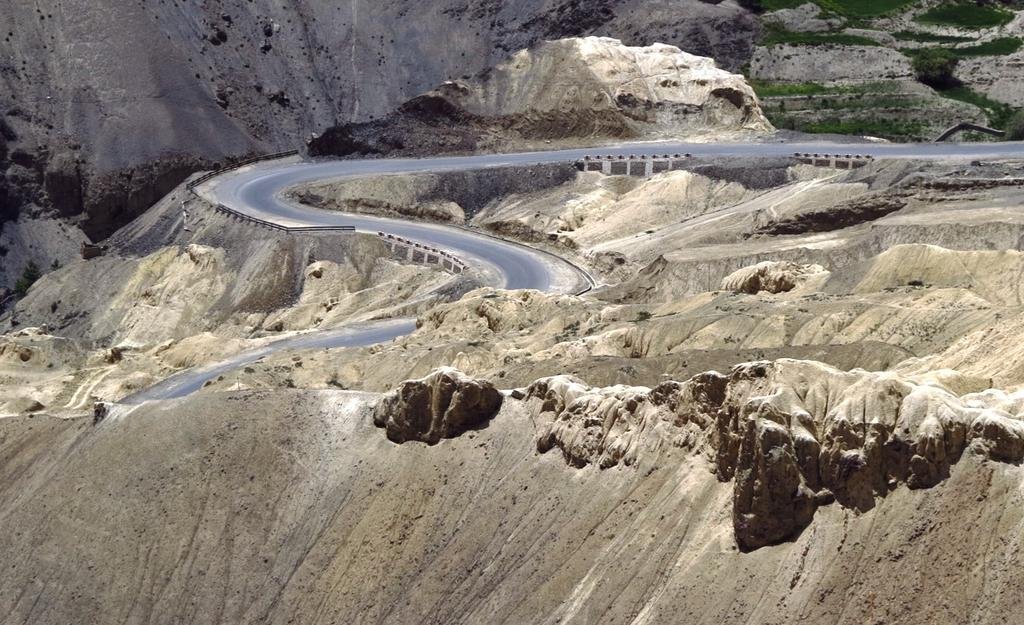
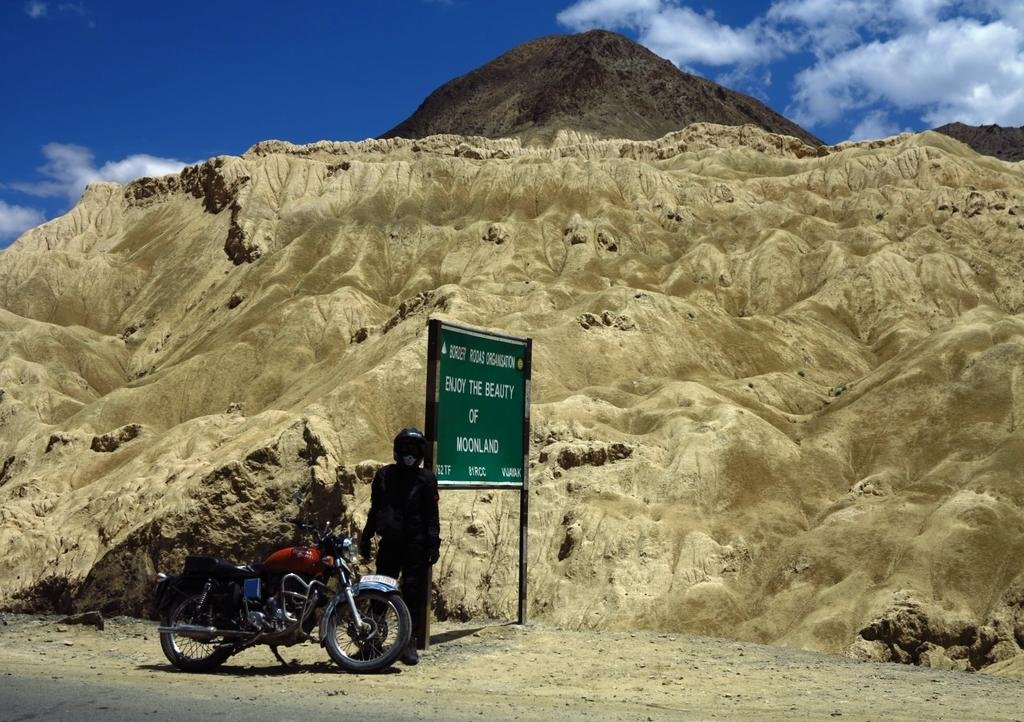

From Wiki:
Lamayuru Monastery - Wikipedia, the free encyclopedia
A. H. Francke states that, "according to popular tradition," it was originally the foremost Bonpo monastery in Ladakh and was called gYung-drung Monastery (from Tibetan: gYung-drung - a swastika - a popular symbol in Bon, Buddhism, and other religions); also gYung-drung-bon is the name of the Bon religion.[SUP][1][/SUP][SUP][2][/SUP]
The Indian scholar Mahasiddhacarya Naropa (956-1041 CE), allegedly caused a lake which filled the valley to dry up and founded Lamayuru Monastery. The oldest surviving building at Lamayuru is a temple called Seng-ge-sgang, at the southern end of the Lamayuru rock, which is attributed to the famous builder-monk Rinchen Zangpo (958-1055 CE). Rinchen Zangpo was charged by the king of Ladakh to build 108 gompas, and certainly many gompas in Ladakh, Spiti and the surrounding regions, date from his time.[SUP][3][/SUP]
"The oldest gompas, those dating from Rinchen-zang-po's time — Alchi and Lamayuru, and the less accessible Wanla, Mang-gyu and Sumda — belonged at the time of their foundation to none of these Tibetan schools, whose establishment they antedate. They were at some stage taken over by the Ka-dam-pa, and when it fell into decline they were taken over again, this time mostly by the Ge-lugs-pa. The exception was Lamayuru, which was for some reason claimed by the Dri-gung-pa"[SUP][4][/SUP]
The gompa consisted originally of five buildings, and some remains of the four corner buildings can still be seen.[SUP][5][/SUP]
Lamayuru is one of the largest and oldest gompas in Ladakh, with a population of around 150 permanent monks resident.
It has, in the past, housed up to 400 monks, many of which are now based in gompas in surrounding villages. Lamayuru is host to two annual masked dance festivals, in the second and fifth months of the Tibetan lunar calendar, when all the monks from these surrounding gompas gather together to pray.
Nearby is Wanla Monastery.
& the "Moonland Valley"


KTMphil
Senior member
KTMphil
Senior member
KTMphil
Senior member
Kamarul R Muhamed
Junior Member
- Joined
- Nov 6, 2012
- Bikes
- GSA1200, MTS1200PP, Diavel Carbon, Desmosideci, SGSE CVO, NSR250
One of the best thread I have read so far. Photo just outstanding!
2wheels
Community Manager
KTMphil
Senior member
KTMphil
Senior member
KTMphil
Senior member
KTMphil
Senior member
A couple of very intersting bikes that had ridden up from Bombay to Kargil, a Harley Road King - USD$ 50,000 on those roads, he must be mad!
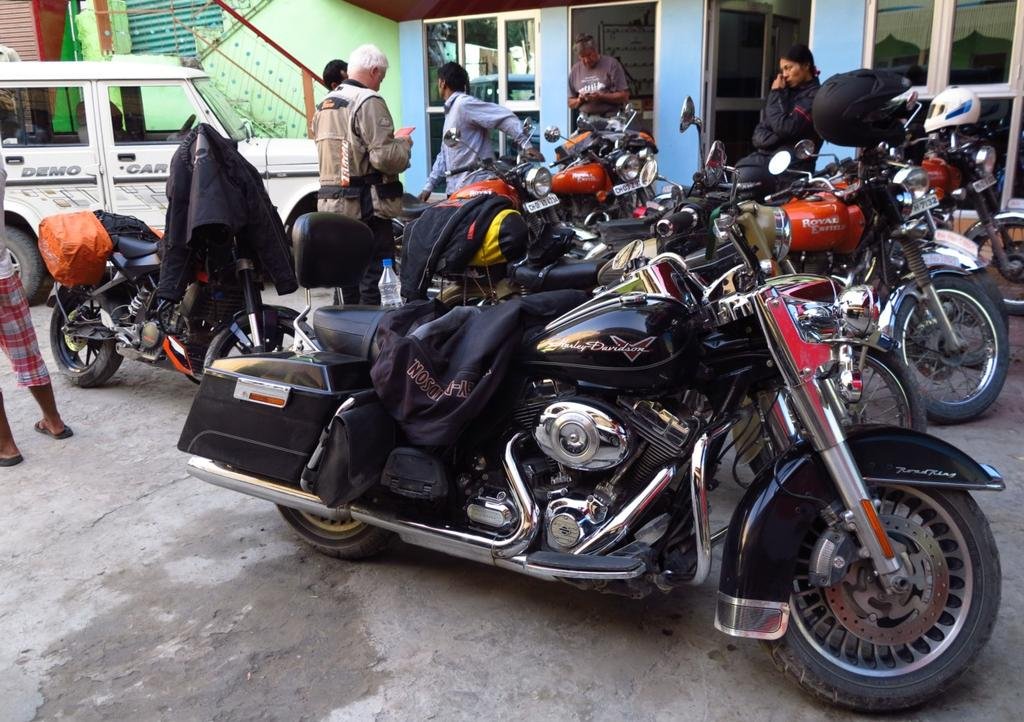
& a KTM 200 Duke which they said was perfect for the terrain, good to know ! The saddle bag arrangement he had worked fine with out rear racks. He did have some kind of aftermarket rear mudguard though.
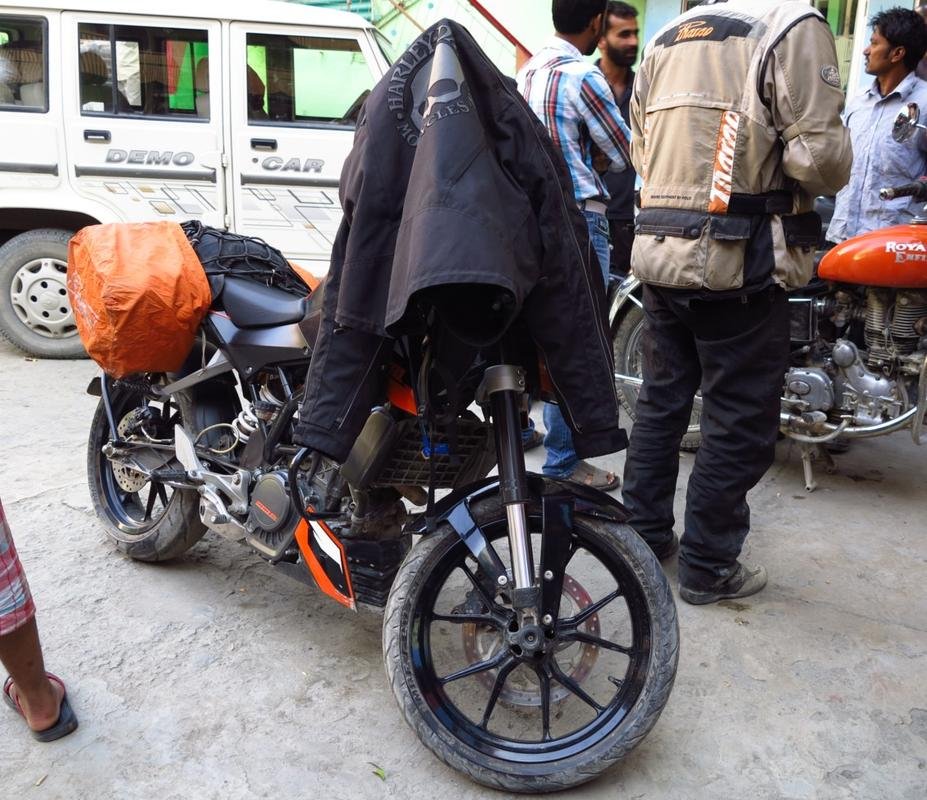

& a KTM 200 Duke which they said was perfect for the terrain, good to know ! The saddle bag arrangement he had worked fine with out rear racks. He did have some kind of aftermarket rear mudguard though.

KTMphil
Senior member
KTMphil
Senior member
KTMphil
Senior member
... Time for the 46th consecutive curry --- more to come
A Dutch couple completed a 43.000 km long trip through Africa on a Royal Enfield 350.
Their names are Benno and Thecla Graas, for the Dutch speakers they have written a 400+ page book called Het Aarden Beest or "The Earthen Beast", unfortunately in Dutch only!
It was awarded the title Best Dutch travel book. For the English speakers, there are some pictures on the website: Graas Uitgever | Het Aarden Beest, een bijzonder motoravontuur dwars door Afrika
This great book starts with a quote of Carlos Castaneda: "For me there is only the traveling on paths that have heart, on any path that may have heart, and the only worthwhile challenge is to traverse its full length--and there I travel looking, looking breathlessly."
Their names are Benno and Thecla Graas, for the Dutch speakers they have written a 400+ page book called Het Aarden Beest or "The Earthen Beast", unfortunately in Dutch only!
It was awarded the title Best Dutch travel book. For the English speakers, there are some pictures on the website: Graas Uitgever | Het Aarden Beest, een bijzonder motoravontuur dwars door Afrika
This great book starts with a quote of Carlos Castaneda: "For me there is only the traveling on paths that have heart, on any path that may have heart, and the only worthwhile challenge is to traverse its full length--and there I travel looking, looking breathlessly."
2wheels
Community Manager
KTMphil
Senior member
A Dutch couple completed a 43.000 km long trip through Africa on a Royal Enfield 350.
Their names are Benno and Thecla Graas, for the Dutch speakers they have written a 400+ page book called Het Aarden Beest or “The Earthen Beast”, unfortunately in Dutch only!
It was awarded the title Best Dutch travel book. For the English speakers, there are some pictures on the website: Graas Uitgever | Het Aarden Beest, een bijzonder motoravontuur dwars door Afrika
This great book starts with a quote of Carlos Castaneda: “For me there is only the traveling on paths that have heart, on any path that may have heart, and the only worthwhile challenge is to traverse its full length--and there I travel looking, looking breathlessly.”
Looks like an interesting read Marcel, I'll try and find a copy
KTMphil
Senior member
You are a braver man than me Phil,,them curries would kill me,,,heartburn
great report ,,happy and safe riding
Jimbobs - Ive never passed so much wind in a one month period
If you can read Dutch you are welcome to borrow my copy in September!
Looks like an interesting read Marcel, I'll try and find a copy
KTMphil
Senior member
KTMphil
Senior member
KTMphil
Senior member
KTMphil
Senior member
Being near the Pakistan border we thought this might be a military camp at first with thousands of tents and helicopters, it's actually the base for pilgrims to visit the Shiva Goddess, in Amarnath, Kashmir region.
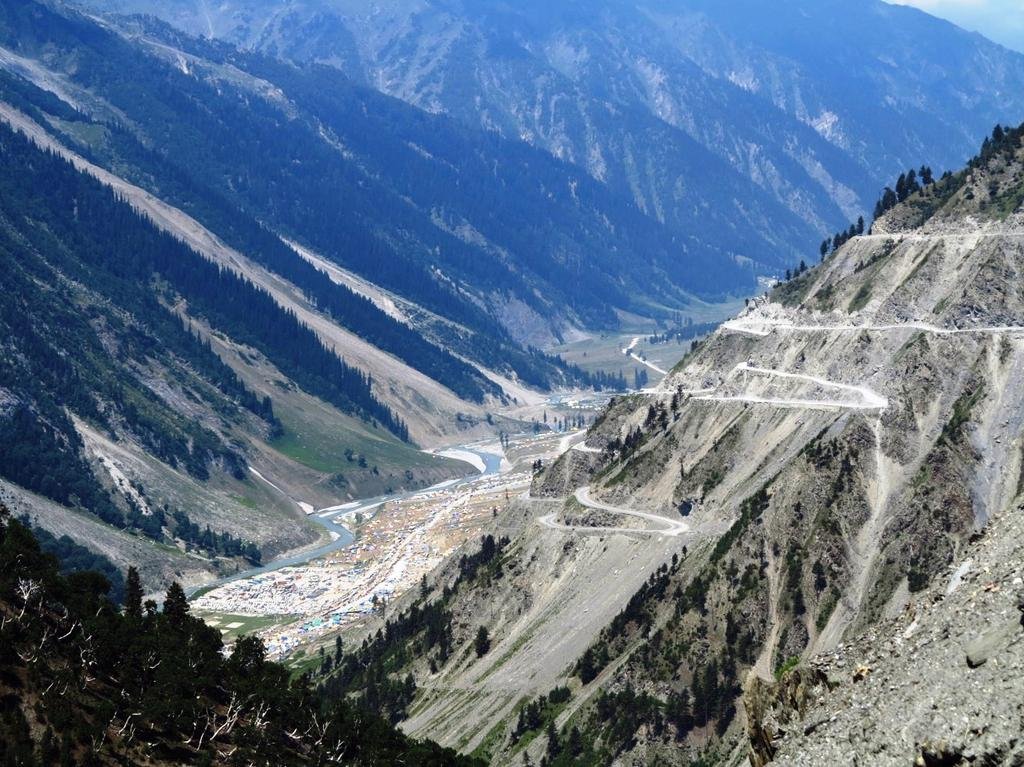
From Wiki:
Amarnath Temple - Wikipedia, the free encyclopedia
Amarnath cave is a very famous shrine in Hinduism located in the Indian part of Jammu and Kashmir state. It is dedicated to Shiva. The cave is situated at an altitude of 3,888 m (12,756 ft),[SUP][1][/SUP] about 141 km (88 mi) from Srinagar, the capital of Jammu and Kashmir and reached through Pahalgam town. The shrine forms an important part of Hinduism,[SUP][2][/SUP] and is considered to be one of the holiest shrines in Hinduism.[SUP][3][/SUP] The cave is surrounded by snowy mountains. The cave itself is covered with snow most time of the year except for a short period of time in summer when it is open for pilgrims. An annual pilgrimage is made to the Amarnath cave by lakhs of Hindu devotees on challenging mountainous terrain to see an ice stalagmite formed inside the cave.
[h=2]The Linga[/h]

Ice Lingam at Amarnath Cave
Inside the 40 m (130 ft) high Amarnath cave, the stalagmite is formed due to freezing of water drops that fall from the roof of the cave on to the floor and grows up vertically from the cave floor.[SUP][4][/SUP] It is considered to be a Shiva Linga by devout Hindus. He waxes during May to August, as snow melts in the Himalayas above the cave and the resultant water seeps into the rocks that form the cave and gradually wanes thereafter.[SUP][1][/SUP] As per the religious beliefs, it has been claimed that the lingam grows and shrinks with the phases of the moon reaching its height during the summer festival, although there is no scientific evidence for this belief[SUP][5][/SUP]
According to a Hindu legend, this is the cave where Shiva explained the secret of life and eternity to his divine consort, Parvati.[SUP][6][/SUP][SUP][7][/SUP] Two other ice formations represent Parvati and Shiva's son, Ganesha.
The main purpose of the annual pilgrimage to the cave is worship of the ice stalagmite Lingam.
[h=2]History[/h] The Amarnath cave has been a place of worship since times immemorial. There are references to the legendary king Aryaraja (ascribed fictional dates 32BCE-17CE) who used to worship a lingam formed of ice in Kashmir. The book Rajatarangini (Book VII v.183) refers to Amareshwara or Amarnath. It is believed that Queen Suryamathi in the 11th century AD gifted trishuls, banalingas and other sacred emblems to this temple.[SUP][8][/SUP] Rajavalipataka, begun by Prjayabhatta has detailed references to the pilgrimage to Amarnath Cave. Other than this, there are further references to this pilgrimage in many other ancient texts.

From Wiki:
Amarnath Temple - Wikipedia, the free encyclopedia
Amarnath cave is a very famous shrine in Hinduism located in the Indian part of Jammu and Kashmir state. It is dedicated to Shiva. The cave is situated at an altitude of 3,888 m (12,756 ft),[SUP][1][/SUP] about 141 km (88 mi) from Srinagar, the capital of Jammu and Kashmir and reached through Pahalgam town. The shrine forms an important part of Hinduism,[SUP][2][/SUP] and is considered to be one of the holiest shrines in Hinduism.[SUP][3][/SUP] The cave is surrounded by snowy mountains. The cave itself is covered with snow most time of the year except for a short period of time in summer when it is open for pilgrims. An annual pilgrimage is made to the Amarnath cave by lakhs of Hindu devotees on challenging mountainous terrain to see an ice stalagmite formed inside the cave.
[h=2]The Linga[/h]


Ice Lingam at Amarnath Cave
Inside the 40 m (130 ft) high Amarnath cave, the stalagmite is formed due to freezing of water drops that fall from the roof of the cave on to the floor and grows up vertically from the cave floor.[SUP][4][/SUP] It is considered to be a Shiva Linga by devout Hindus. He waxes during May to August, as snow melts in the Himalayas above the cave and the resultant water seeps into the rocks that form the cave and gradually wanes thereafter.[SUP][1][/SUP] As per the religious beliefs, it has been claimed that the lingam grows and shrinks with the phases of the moon reaching its height during the summer festival, although there is no scientific evidence for this belief[SUP][5][/SUP]
According to a Hindu legend, this is the cave where Shiva explained the secret of life and eternity to his divine consort, Parvati.[SUP][6][/SUP][SUP][7][/SUP] Two other ice formations represent Parvati and Shiva's son, Ganesha.
The main purpose of the annual pilgrimage to the cave is worship of the ice stalagmite Lingam.
[h=2]History[/h] The Amarnath cave has been a place of worship since times immemorial. There are references to the legendary king Aryaraja (ascribed fictional dates 32BCE-17CE) who used to worship a lingam formed of ice in Kashmir. The book Rajatarangini (Book VII v.183) refers to Amareshwara or Amarnath. It is believed that Queen Suryamathi in the 11th century AD gifted trishuls, banalingas and other sacred emblems to this temple.[SUP][8][/SUP] Rajavalipataka, begun by Prjayabhatta has detailed references to the pilgrimage to Amarnath Cave. Other than this, there are further references to this pilgrimage in many other ancient texts.
KTMphil
Senior member
KTMphil
Senior member
KTMphil
Senior member
We'd be hearing about some Muslims being shot by the Indian military during a protest in Srinagar (where we were headed) & rumors that there was still a curfew, with second hand information on the road we were unsure of the current severity.
From the Hindustan Times:
Curfew lifted in Srinagar, but situation remains tense - Hindustan Times
Despite tense situation here, the administration on Sunday lifted curfew imposed in Kashmir valley two days ago following the killings of protestors by the Border Security Force (BSF) in Ramban area.
Meanwhile, protests continued in the Valley and normal life remained affected due to the strike called by Hurriyat Conference chairman Syed Ali Shah Geelani.
The curfew was imposed on Friday, a day after the Border Security Forces fired at people protesting alleged sacrilege of the Quran and assault on a local cleric by the paramilitary forces in Ramban district.
Curfew was imposed in all areas of Srinagar, Budgam, Ganderbal and Bandipora districts and Shopian, Pulwama, Kulgam, Anantnag, Bijbehara and Sopore towns, which continued till Saturday.
Restrictions under section 144 of the CrPC, which does not permit assembly of four or more persons, remained in force in rest of the Valley during the past two days.
More than 100 persons, mostly security personnel, were injured in the clashes between protestors and law enforcing agencies.
In incidents of violence reported today youths were injured in north Kashmir's volatile Baramulla district after police resorted to firing with pellet guns.
One youth, who was hit in the head, has been referred to a medical institute in Srinagar.
Violent clashes between police and angry youth also erupted in old quarters of the city this afternoon.
Witnesses said hundreds of protestors tried to march forward from Rajouri Kadal area when the police fired tear smoke shells to disperse them. The protesters in turn pelted stones at the police and paramilitary forces.
Meanwhile the Amarnath Yatra, which was halted in the wake of the protests, resumed yesterday evening from Jammu.
The Jammu-Srinagar Highway too was opened for traffic after three days on Saturday.
From the Hindustan Times:
Curfew lifted in Srinagar, but situation remains tense - Hindustan Times
Despite tense situation here, the administration on Sunday lifted curfew imposed in Kashmir valley two days ago following the killings of protestors by the Border Security Force (BSF) in Ramban area.
Meanwhile, protests continued in the Valley and normal life remained affected due to the strike called by Hurriyat Conference chairman Syed Ali Shah Geelani.
The curfew was imposed on Friday, a day after the Border Security Forces fired at people protesting alleged sacrilege of the Quran and assault on a local cleric by the paramilitary forces in Ramban district.
Curfew was imposed in all areas of Srinagar, Budgam, Ganderbal and Bandipora districts and Shopian, Pulwama, Kulgam, Anantnag, Bijbehara and Sopore towns, which continued till Saturday.
Restrictions under section 144 of the CrPC, which does not permit assembly of four or more persons, remained in force in rest of the Valley during the past two days.
More than 100 persons, mostly security personnel, were injured in the clashes between protestors and law enforcing agencies.
In incidents of violence reported today youths were injured in north Kashmir's volatile Baramulla district after police resorted to firing with pellet guns.
One youth, who was hit in the head, has been referred to a medical institute in Srinagar.
Violent clashes between police and angry youth also erupted in old quarters of the city this afternoon.
Witnesses said hundreds of protestors tried to march forward from Rajouri Kadal area when the police fired tear smoke shells to disperse them. The protesters in turn pelted stones at the police and paramilitary forces.
Meanwhile the Amarnath Yatra, which was halted in the wake of the protests, resumed yesterday evening from Jammu.
The Jammu-Srinagar Highway too was opened for traffic after three days on Saturday.


